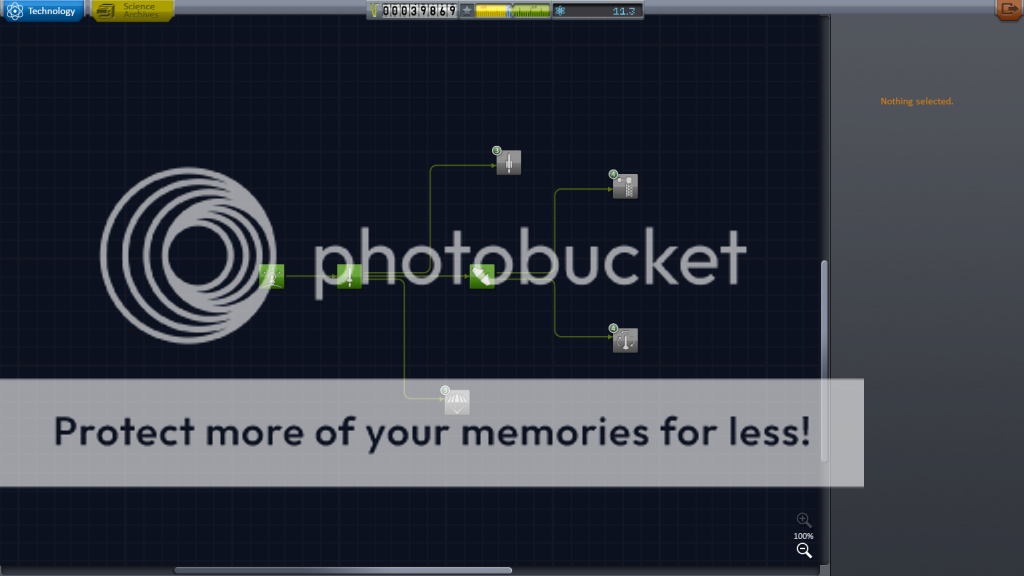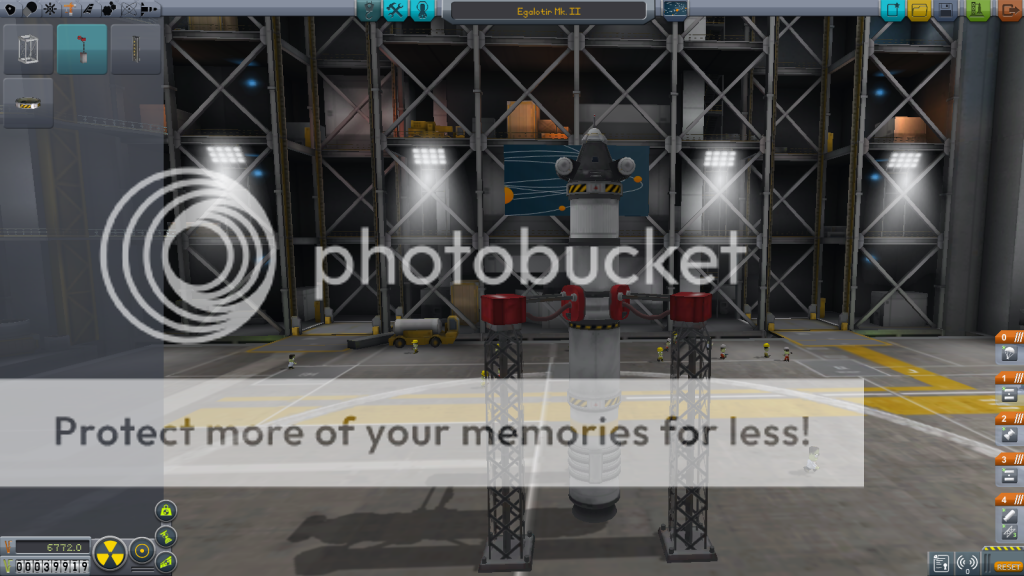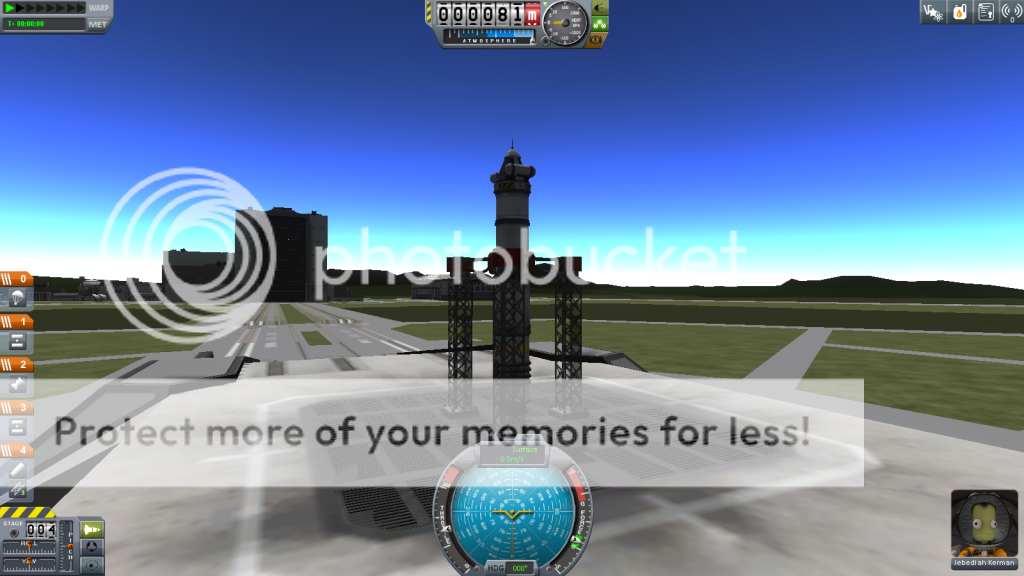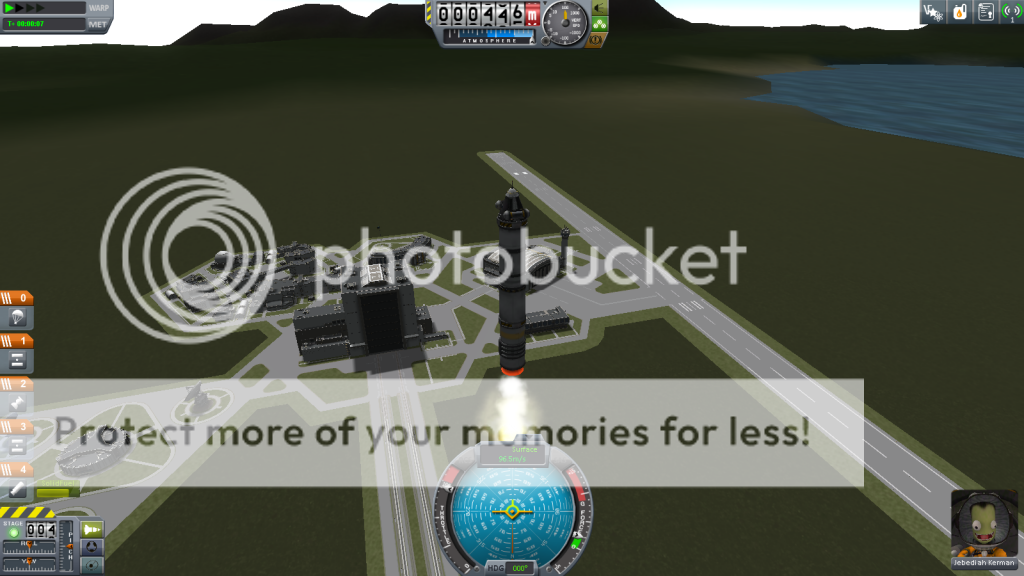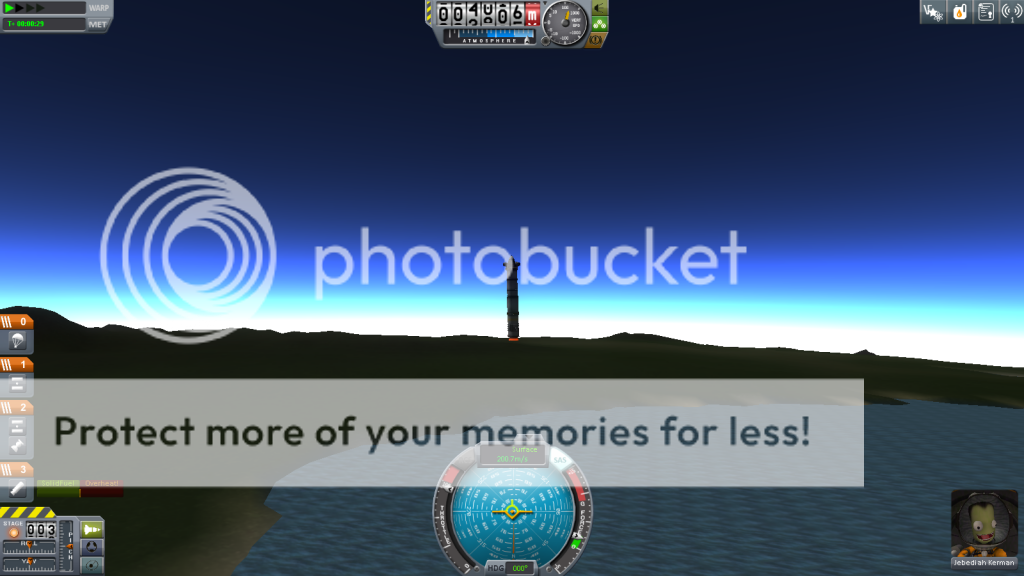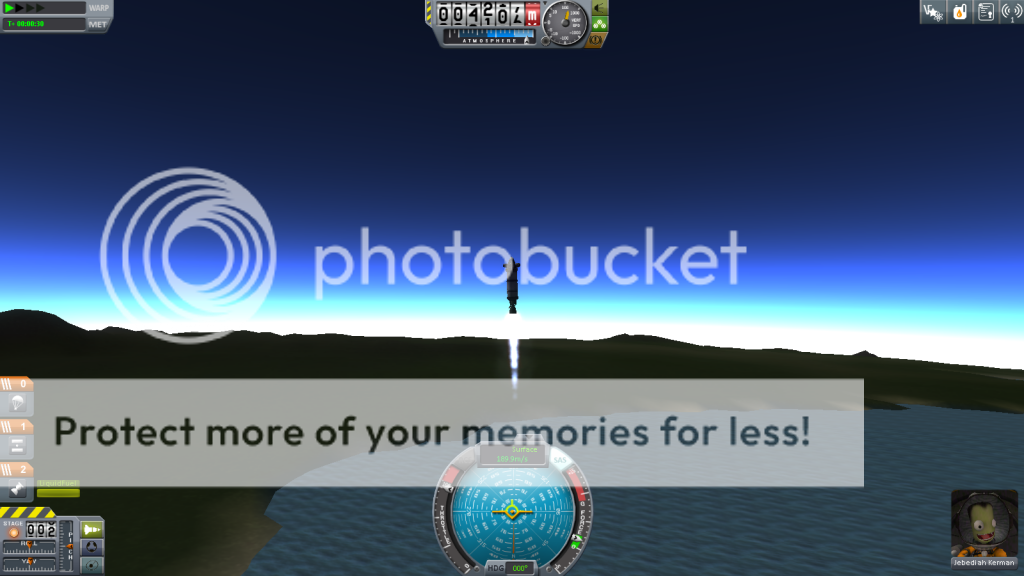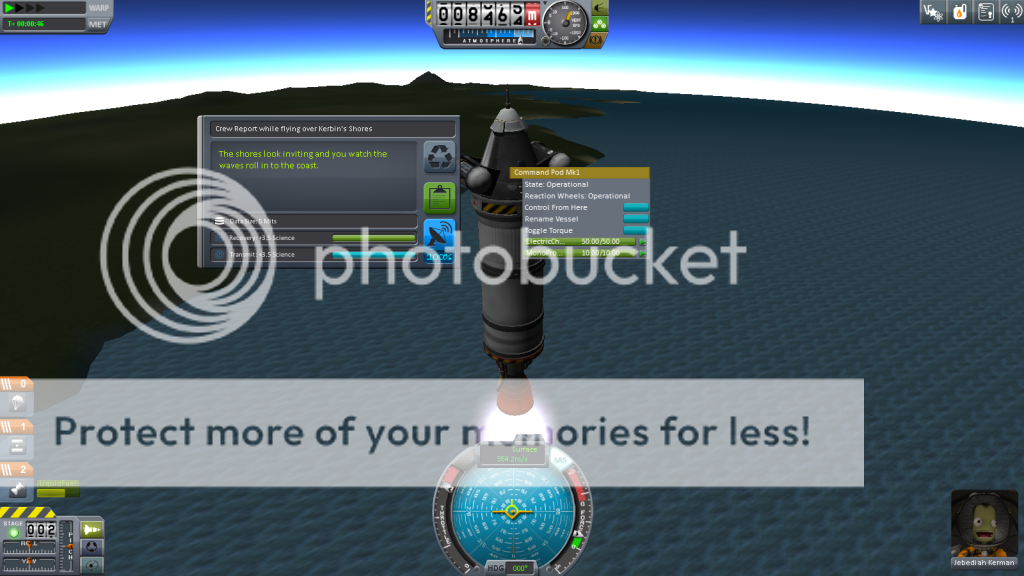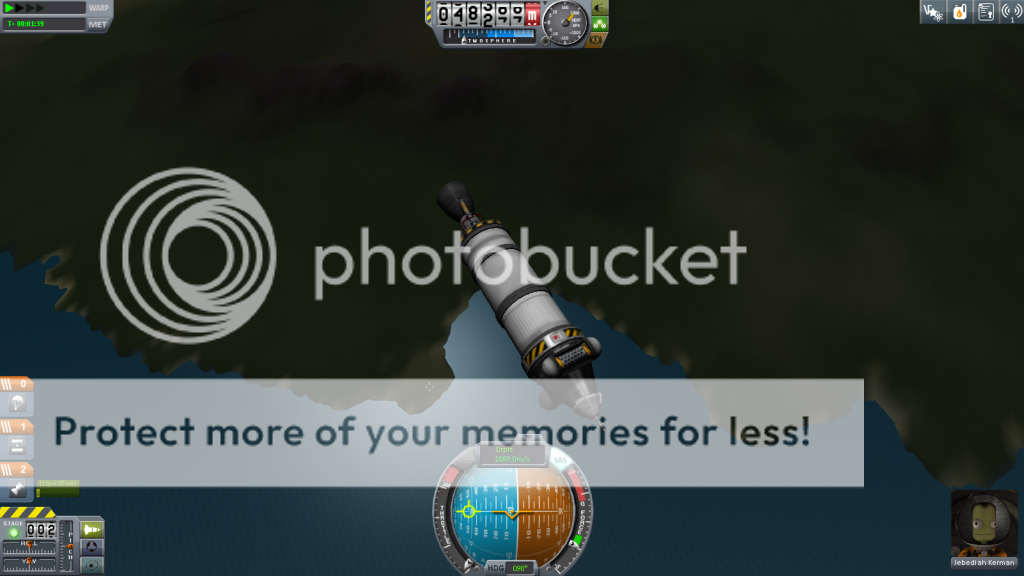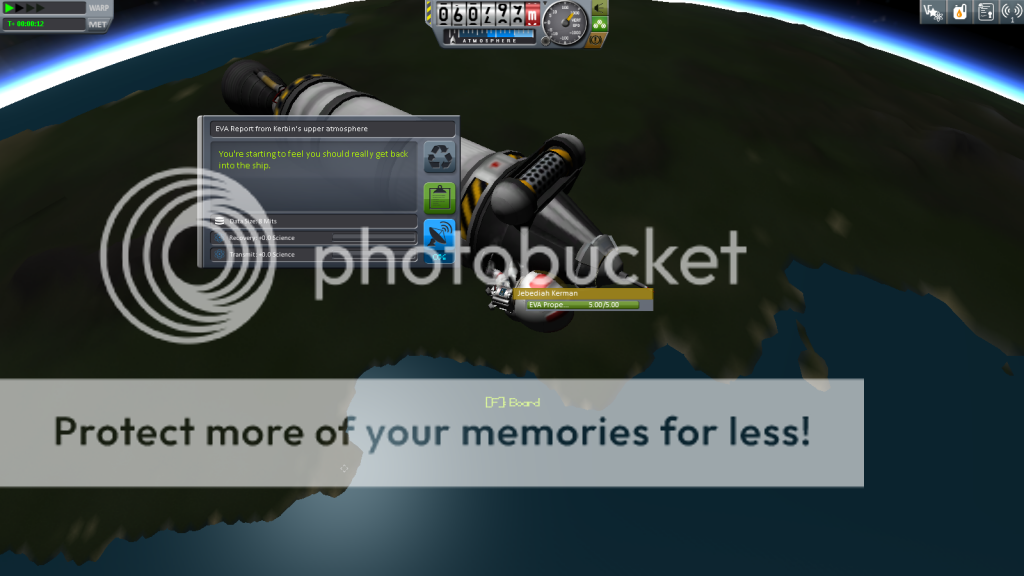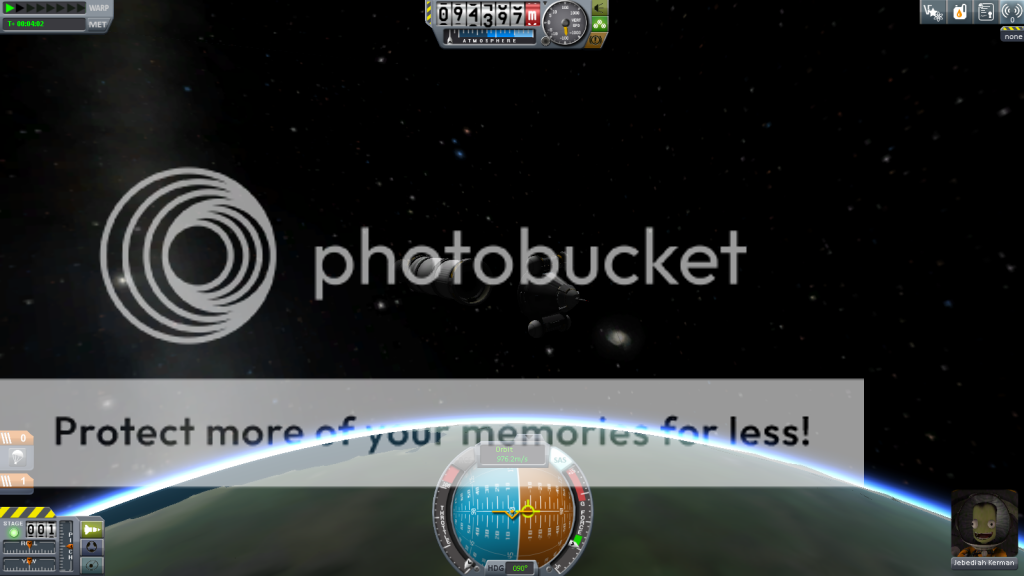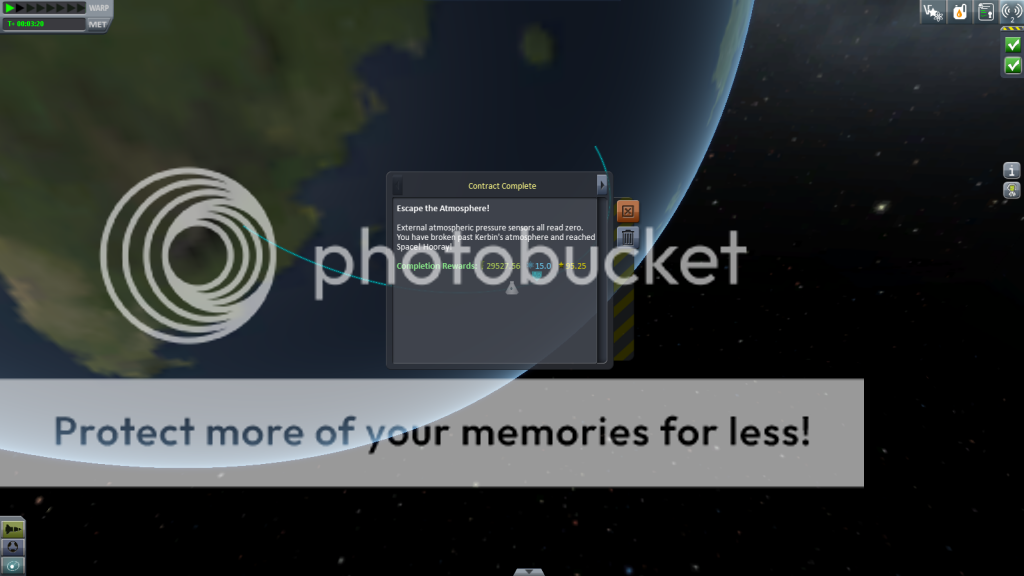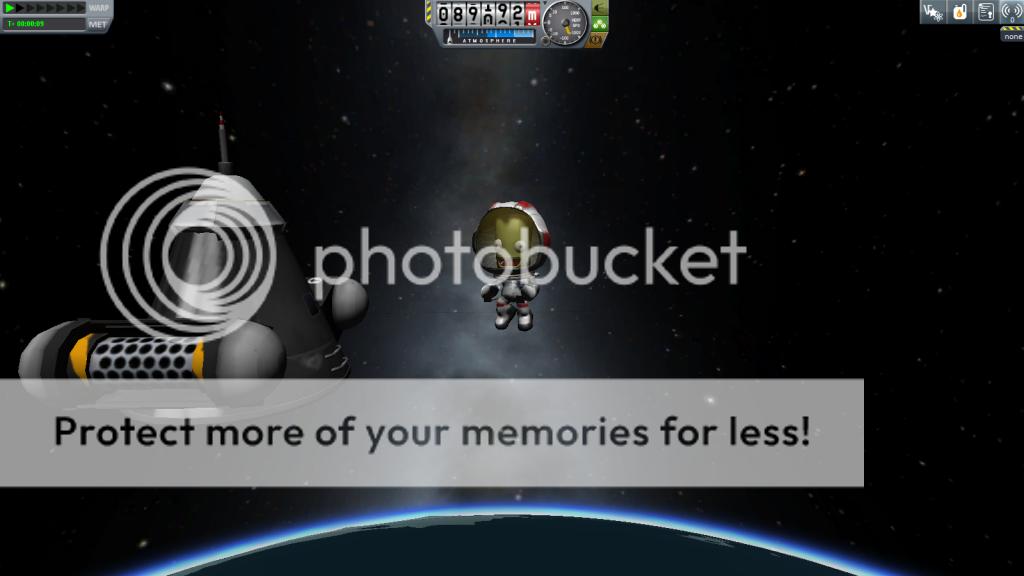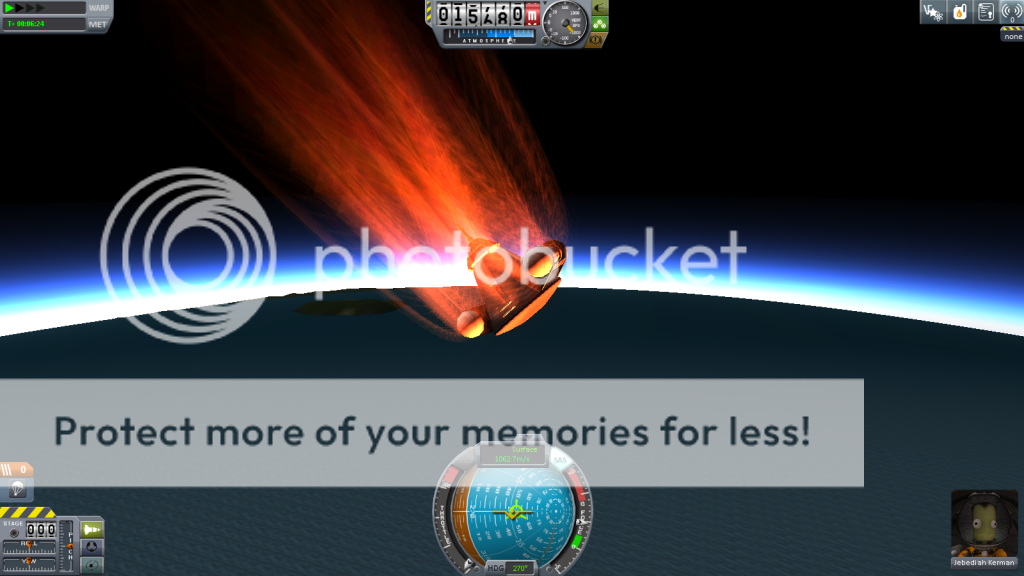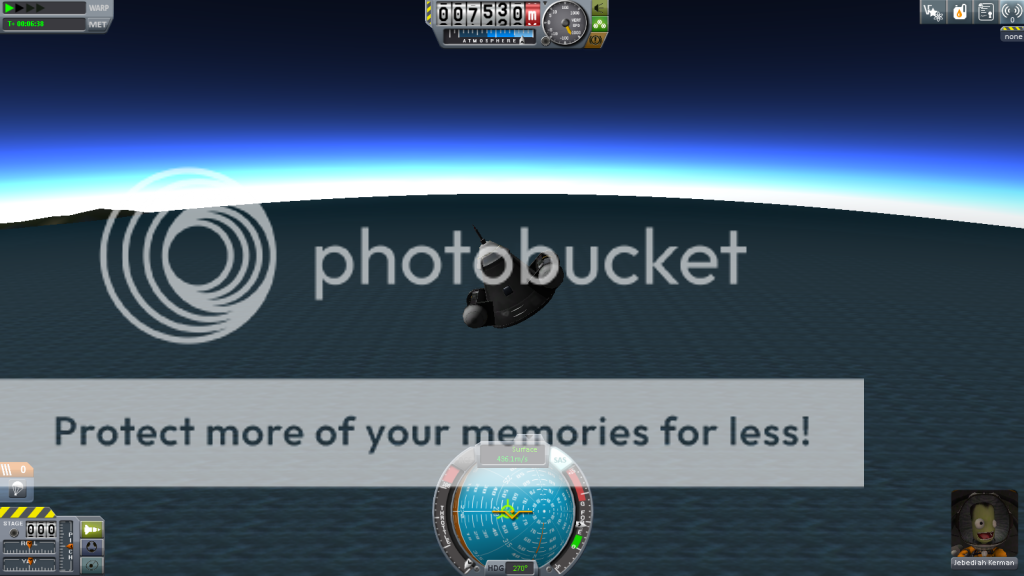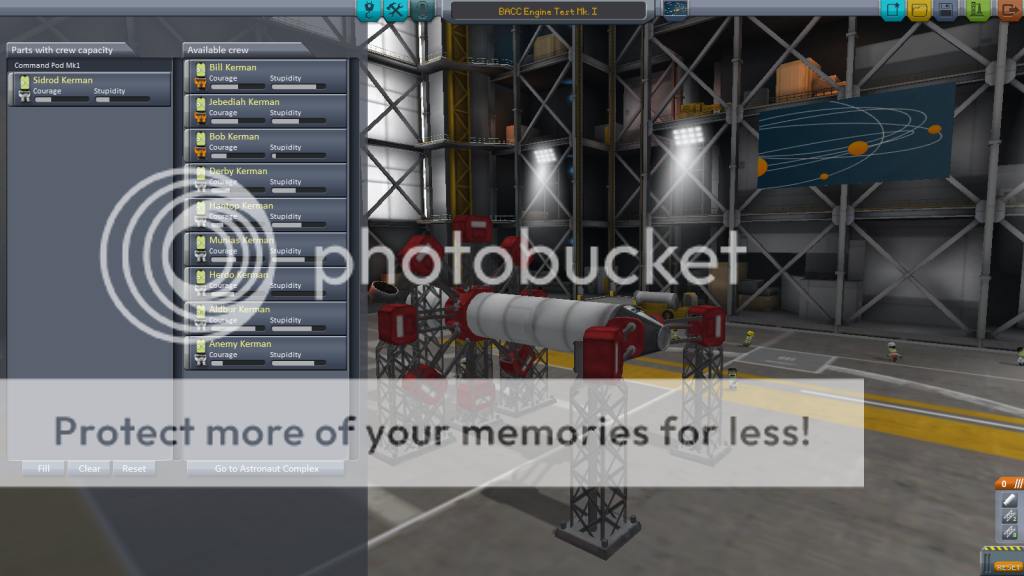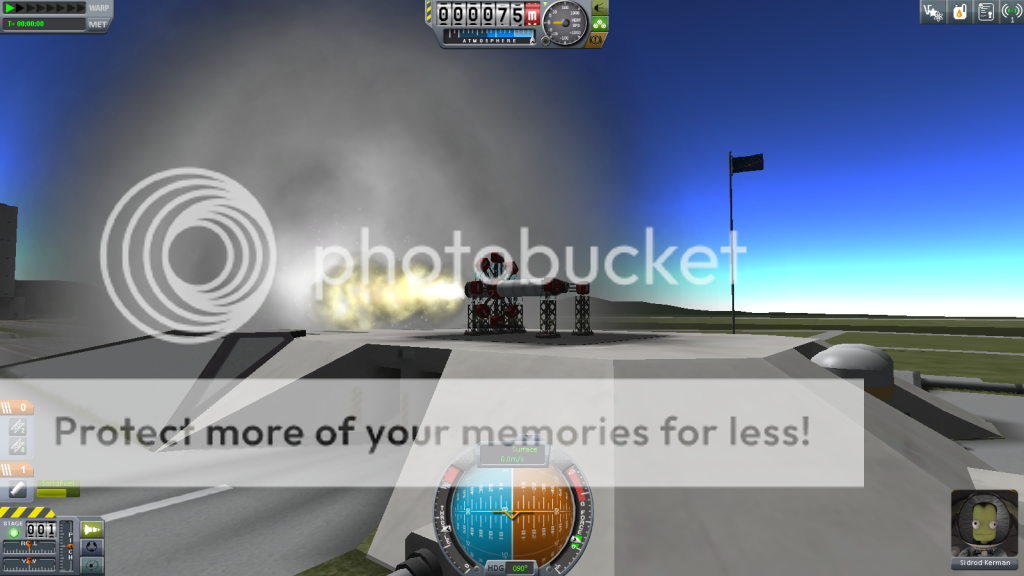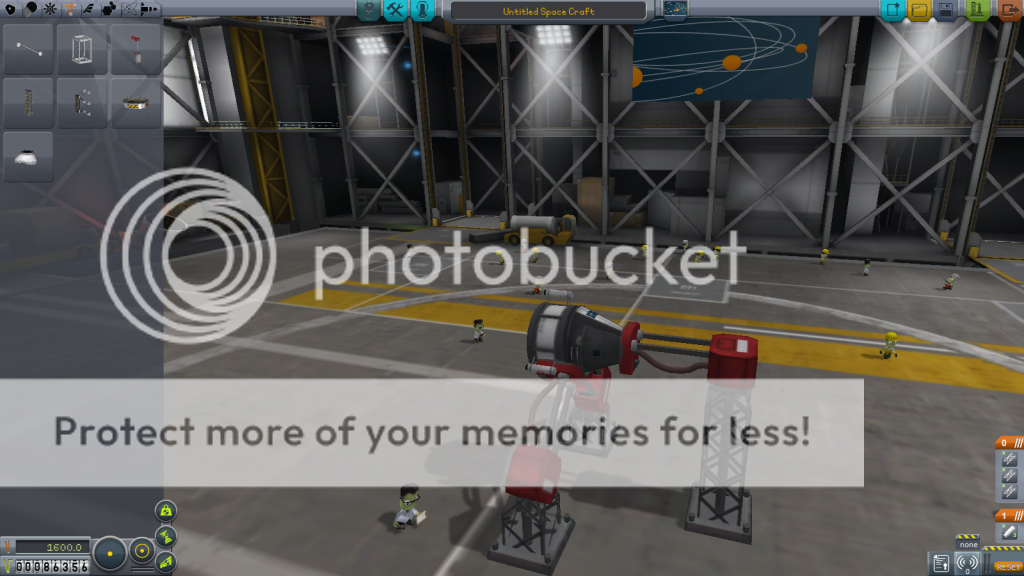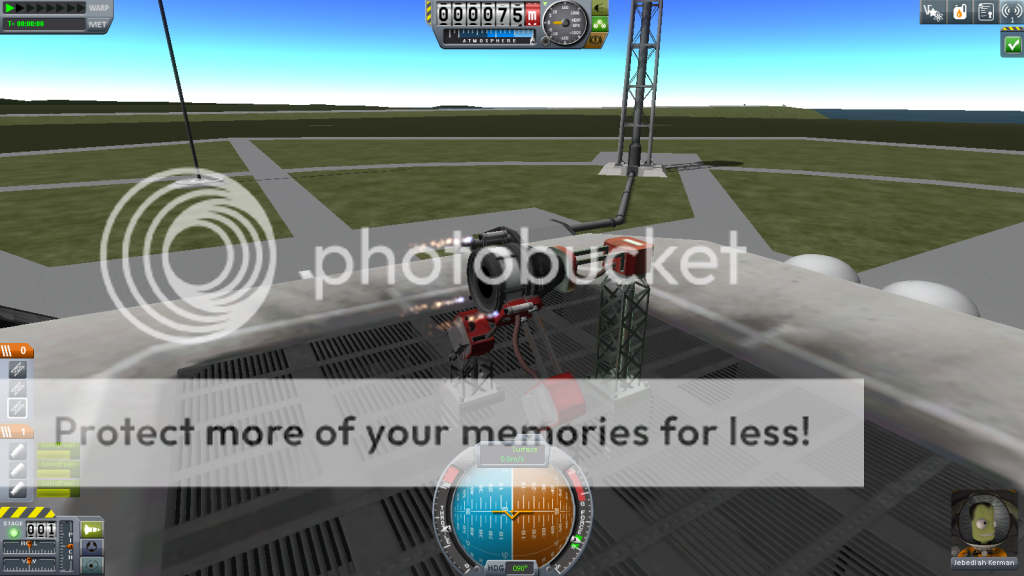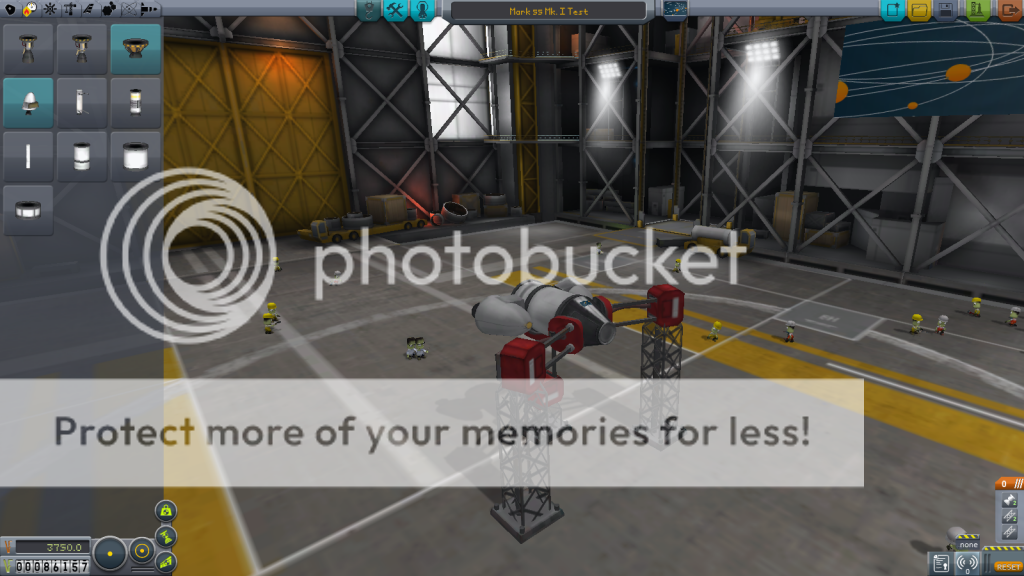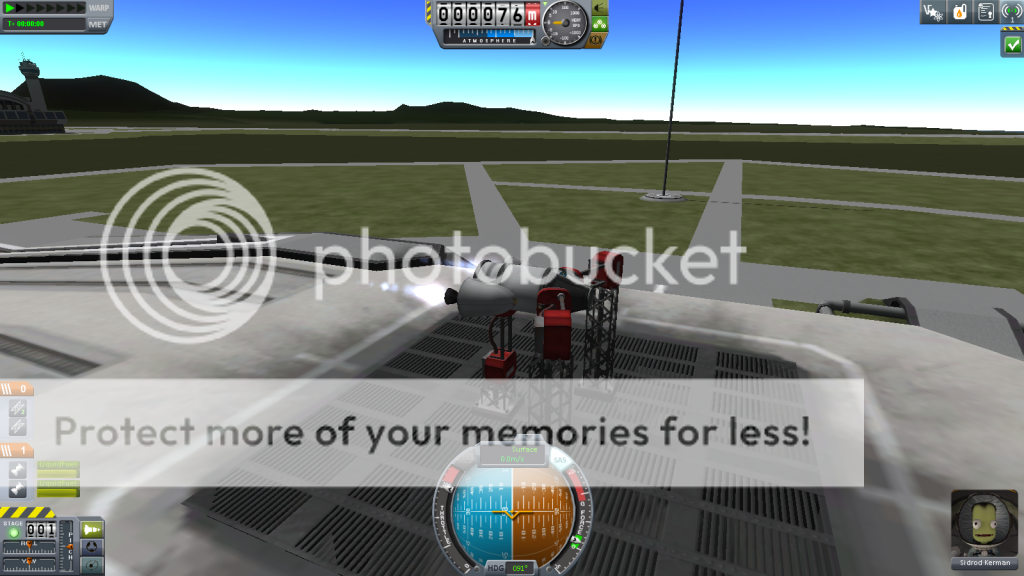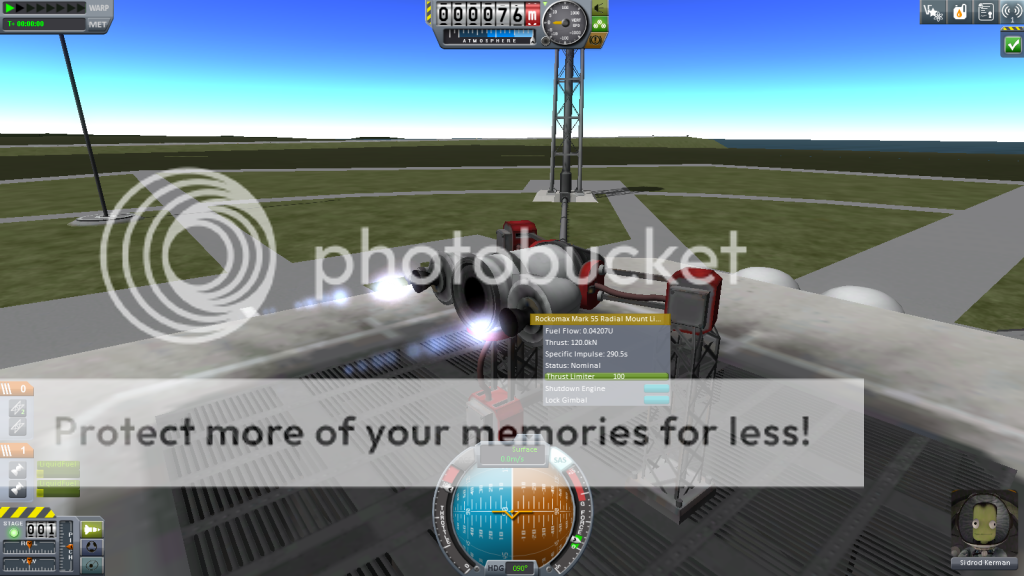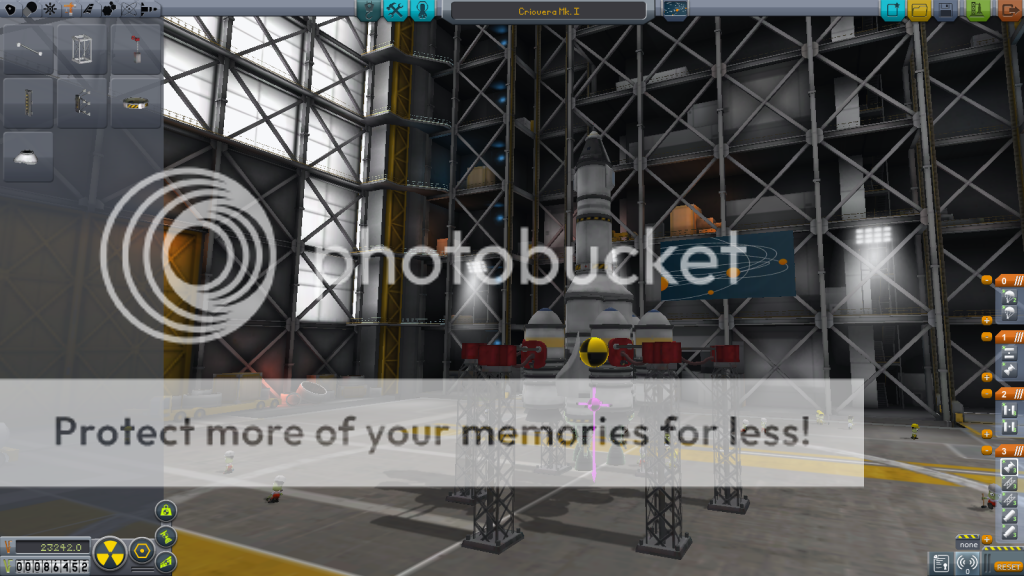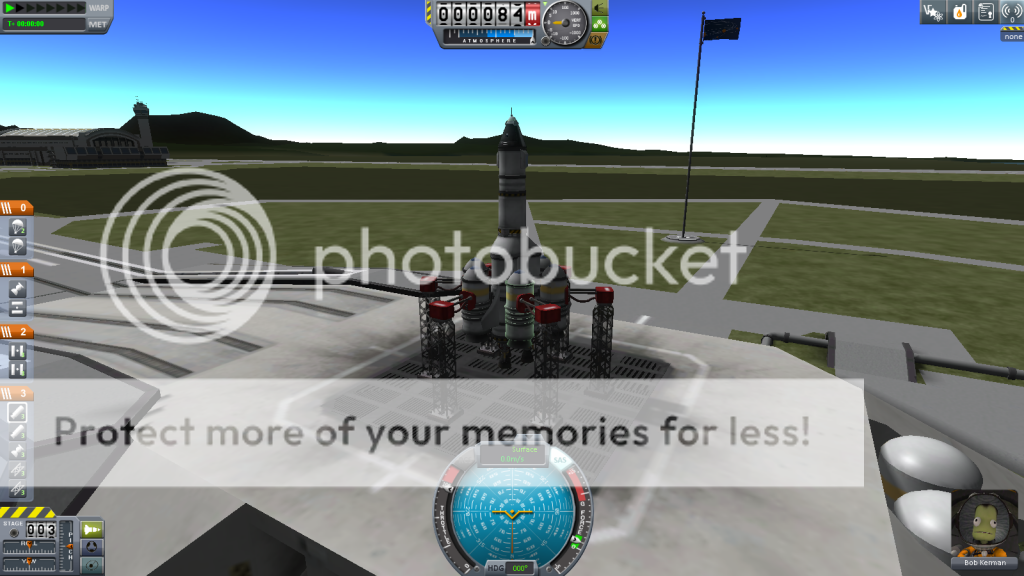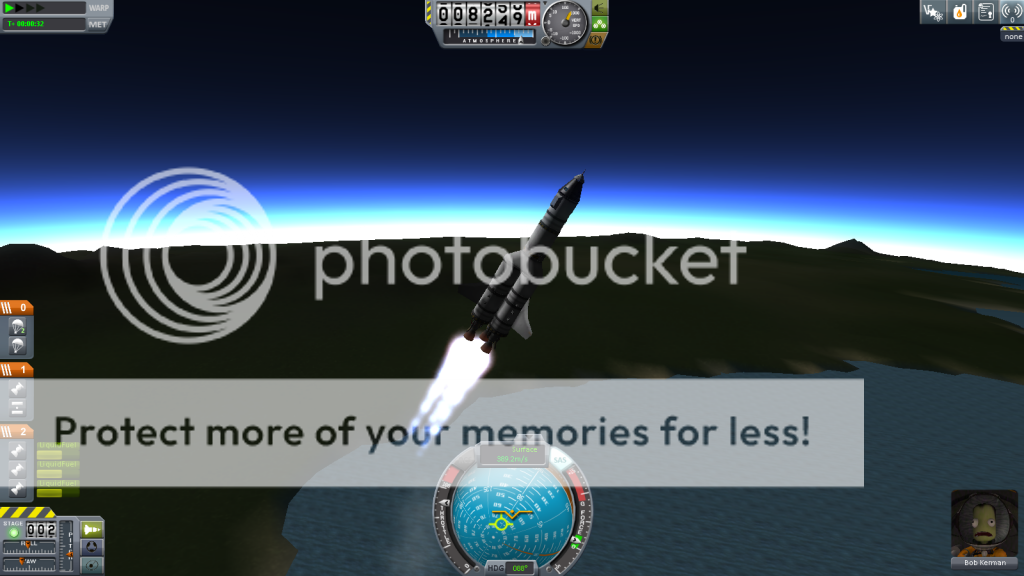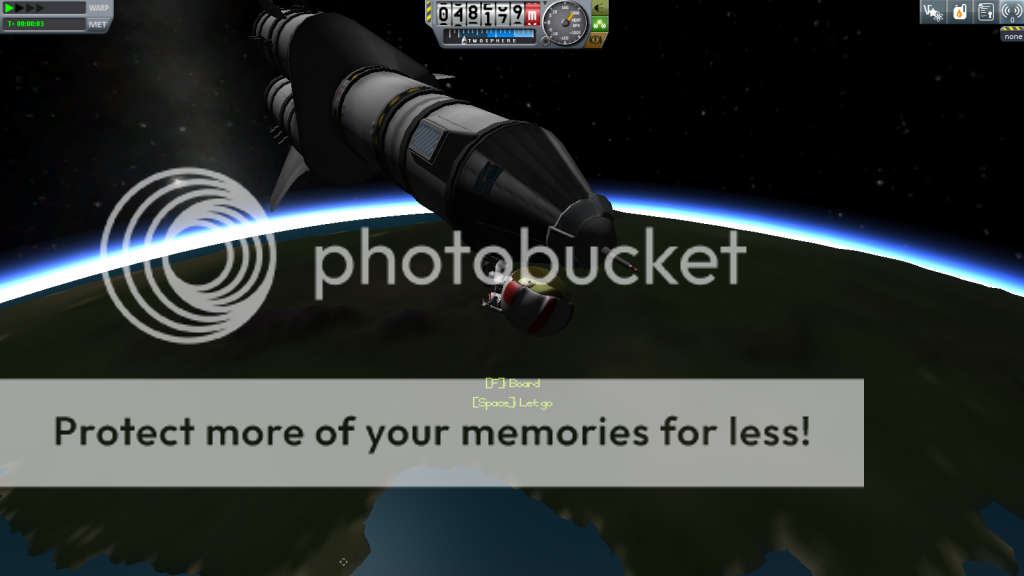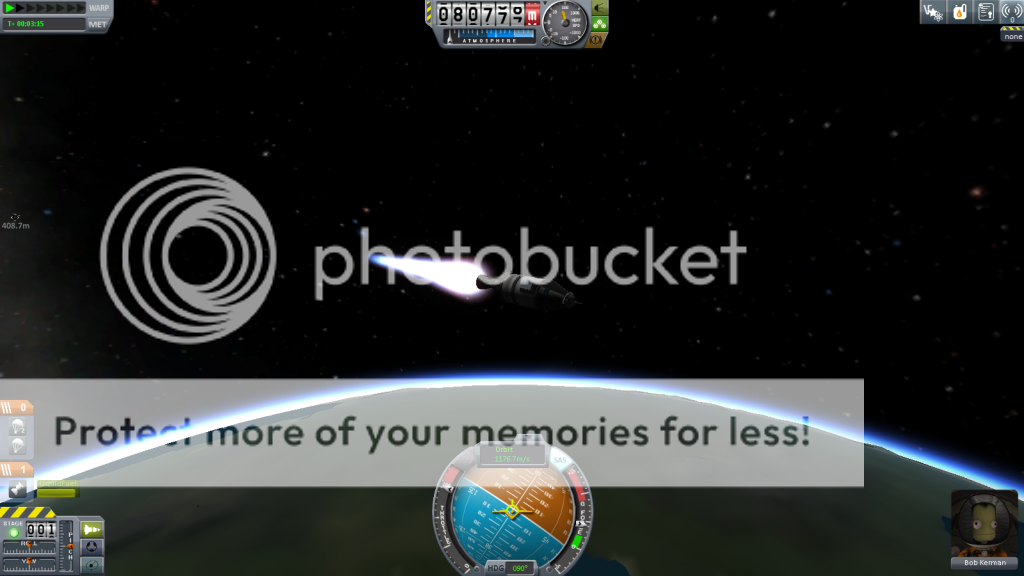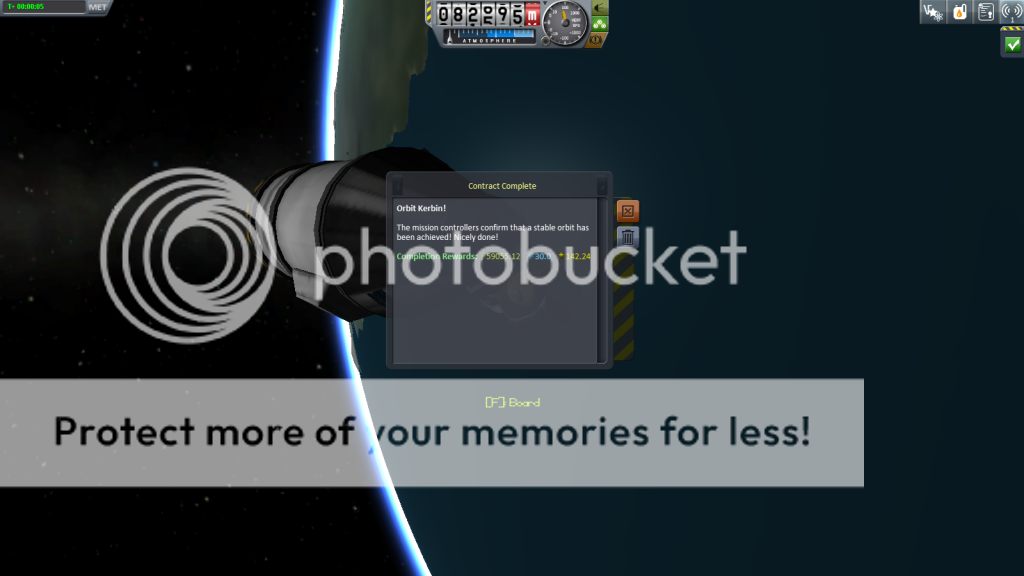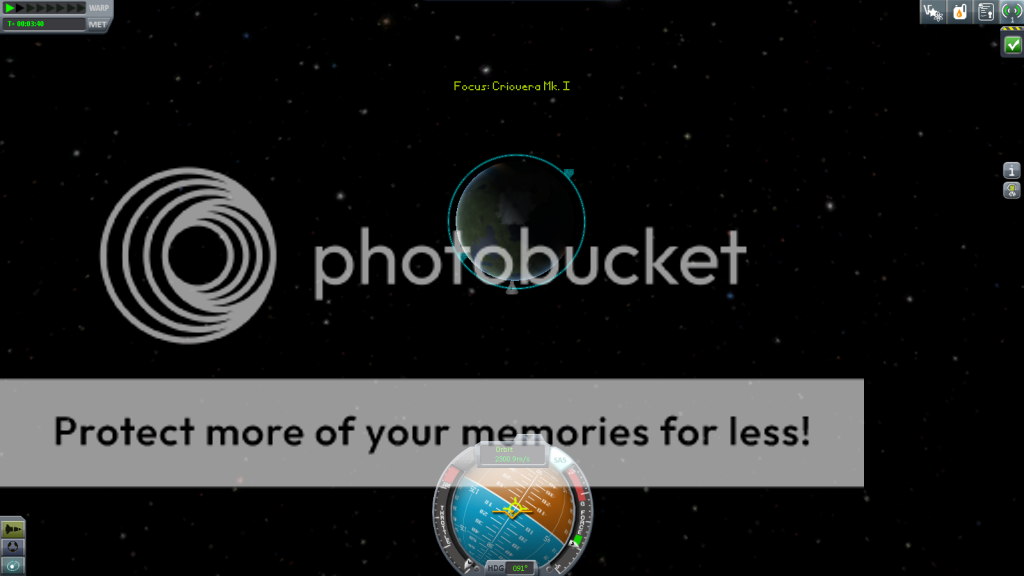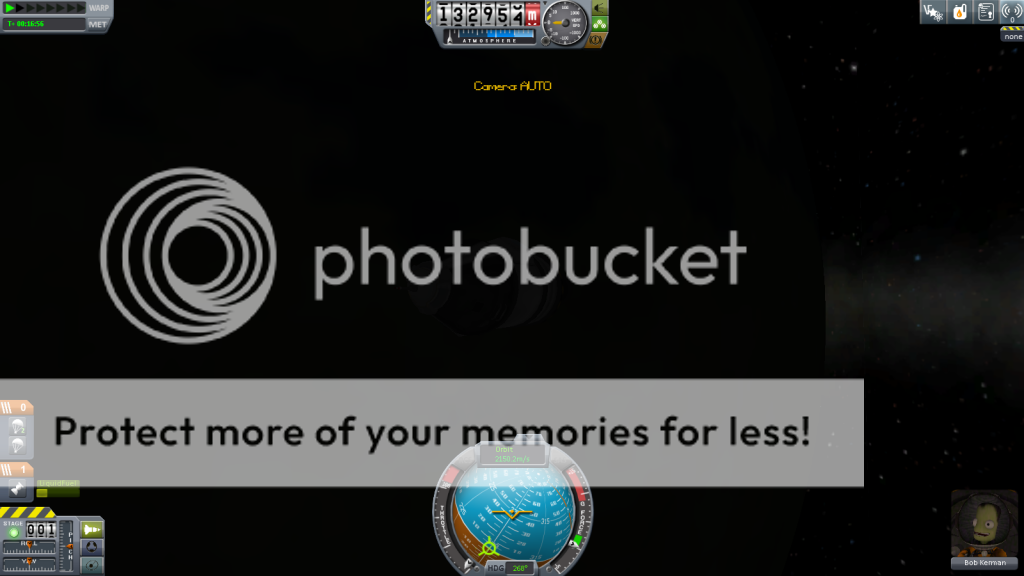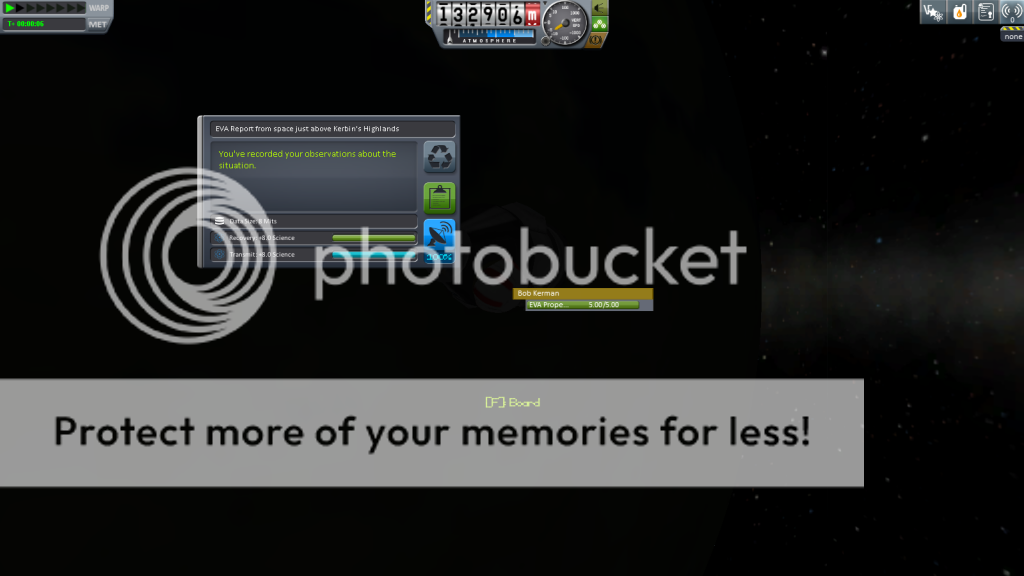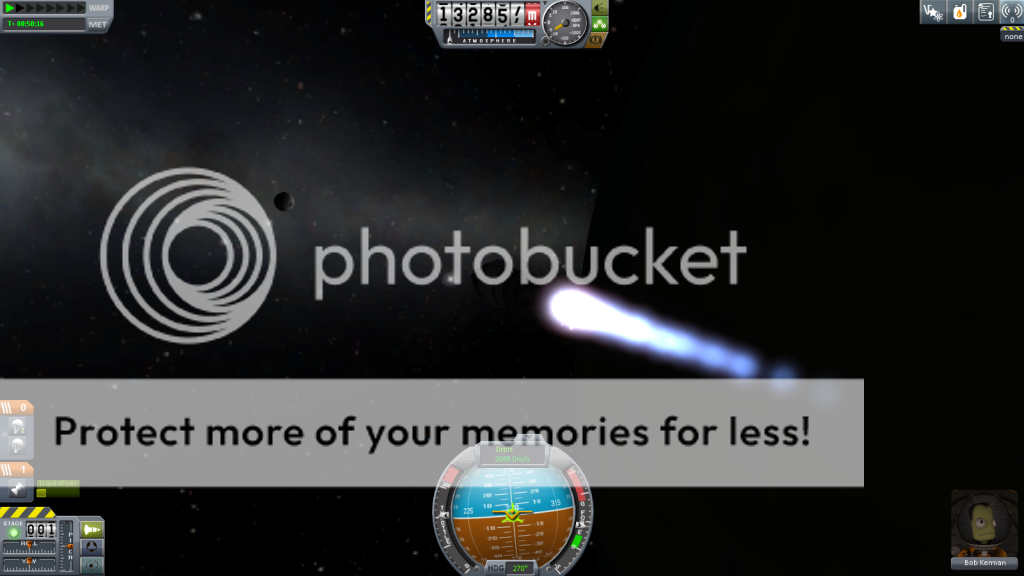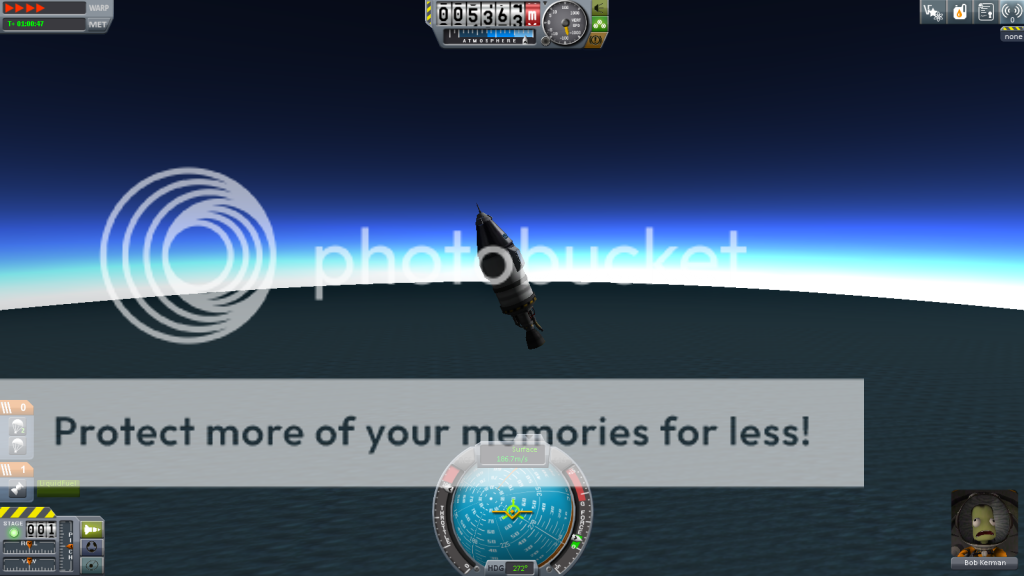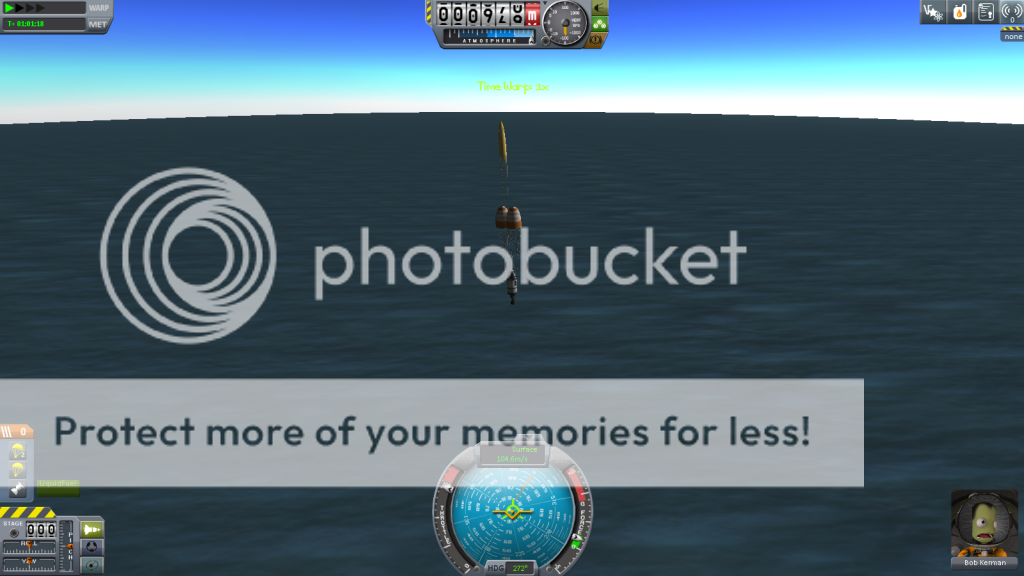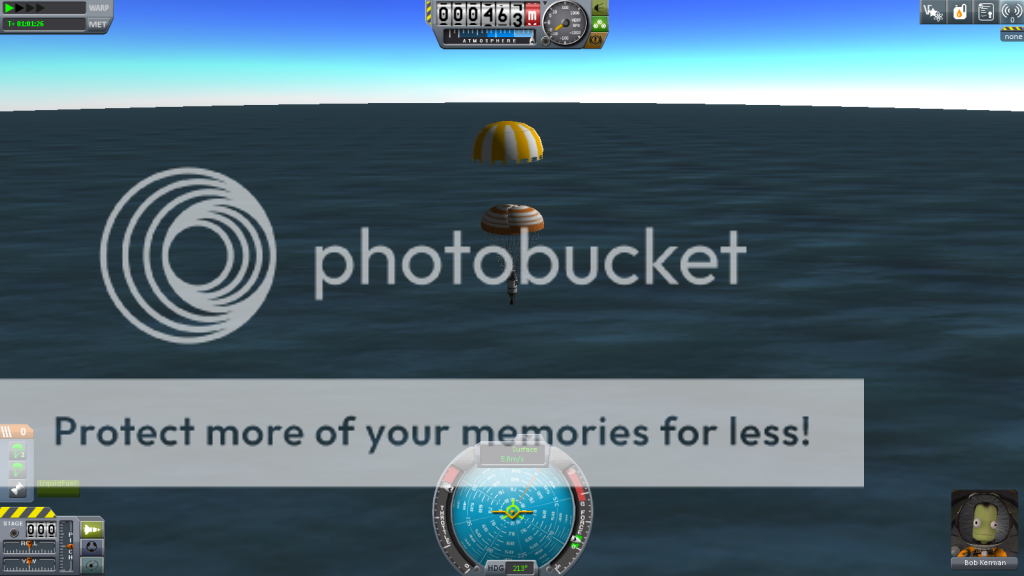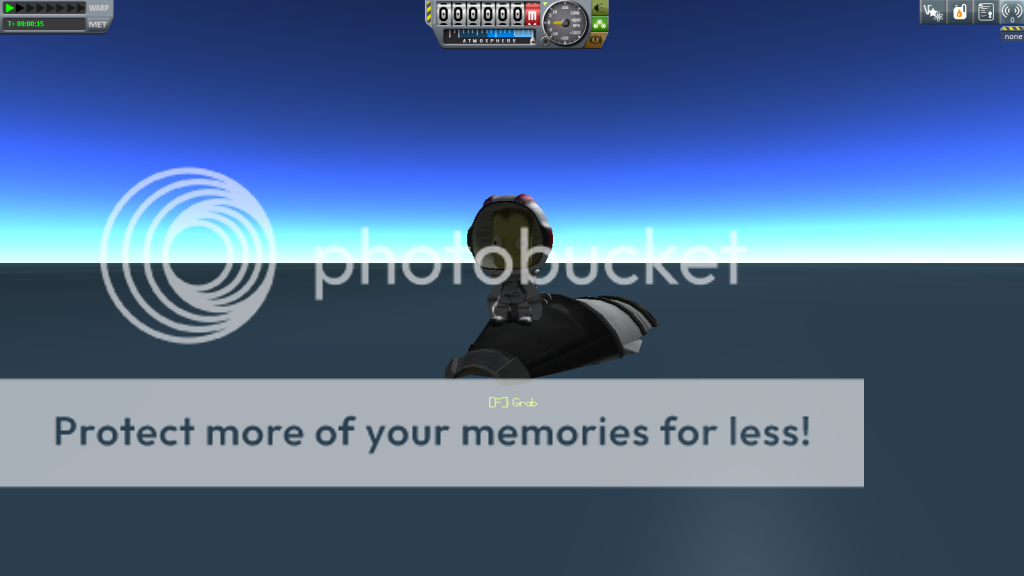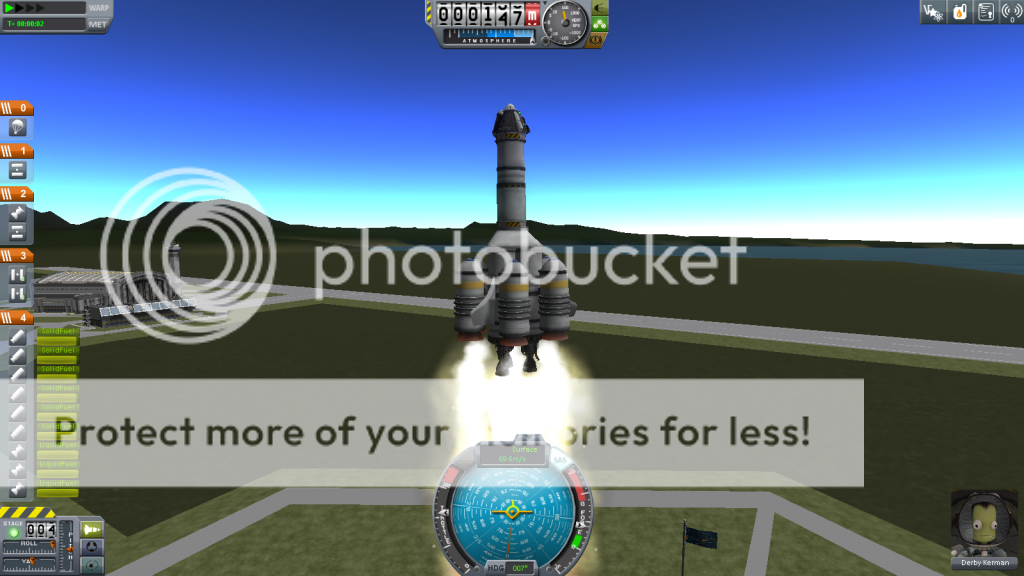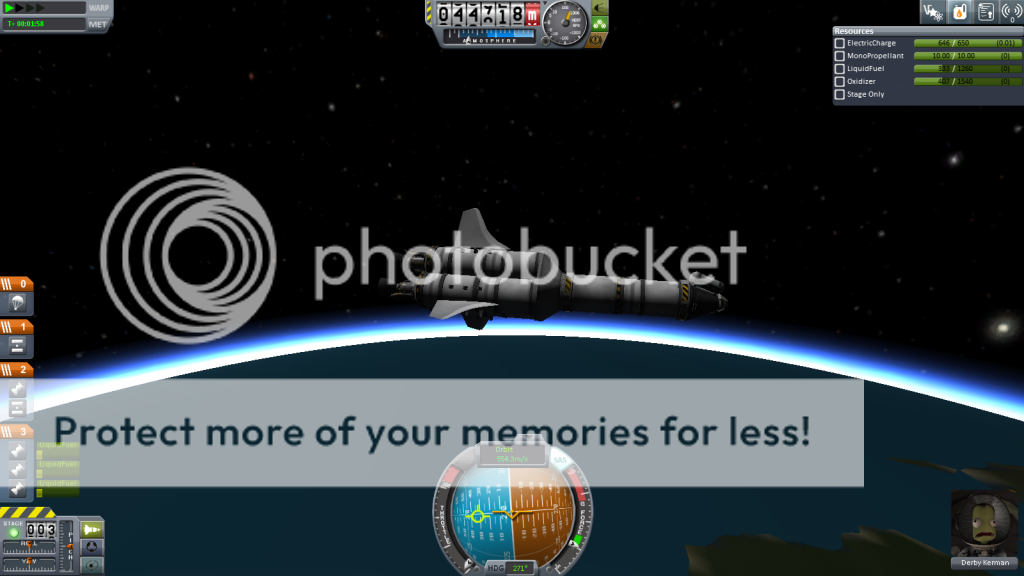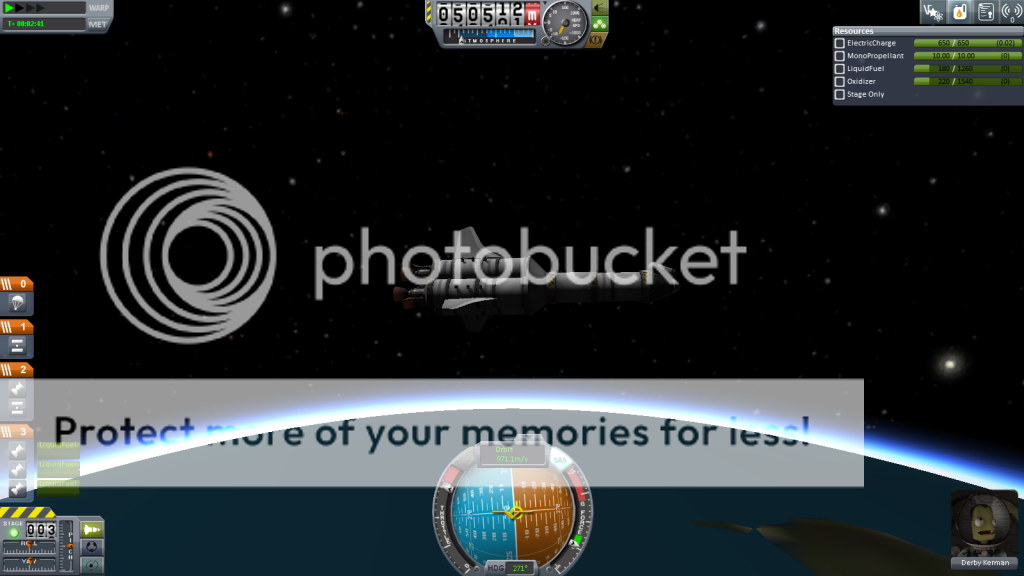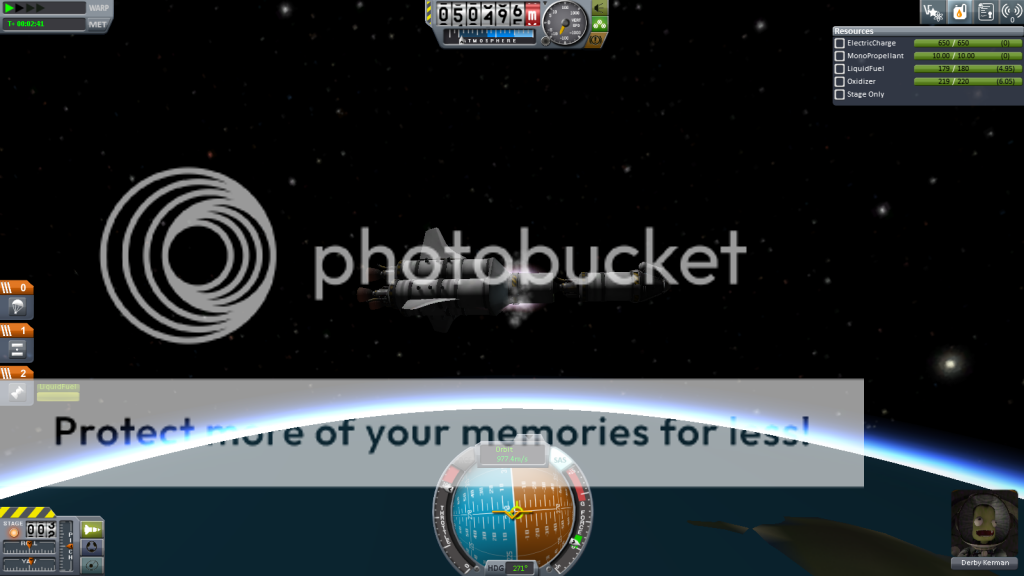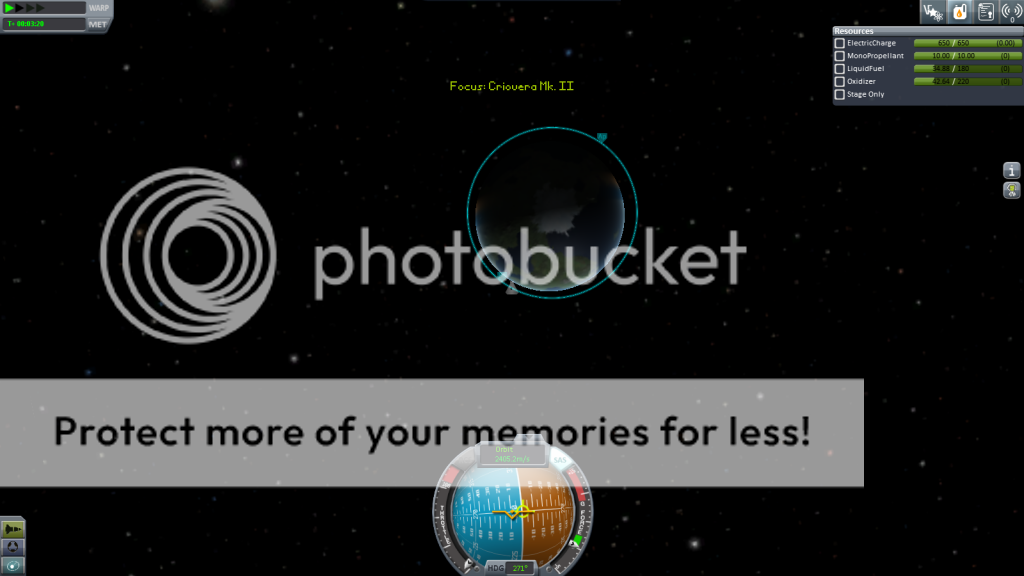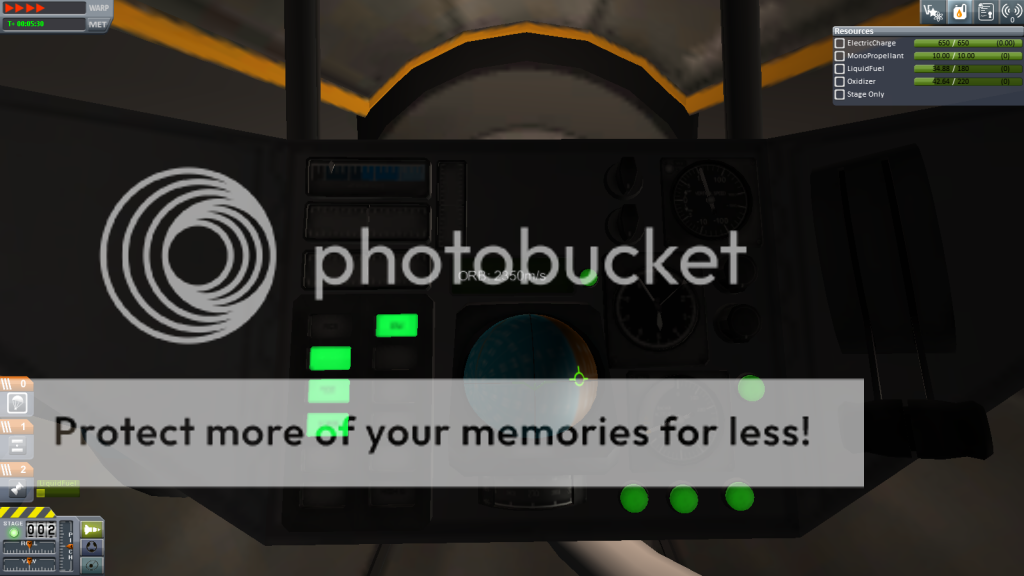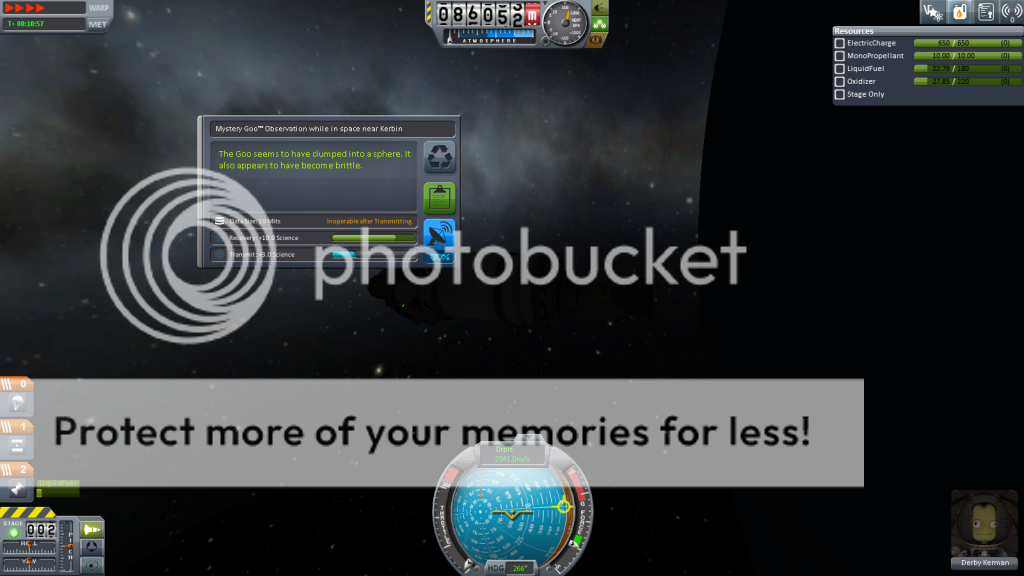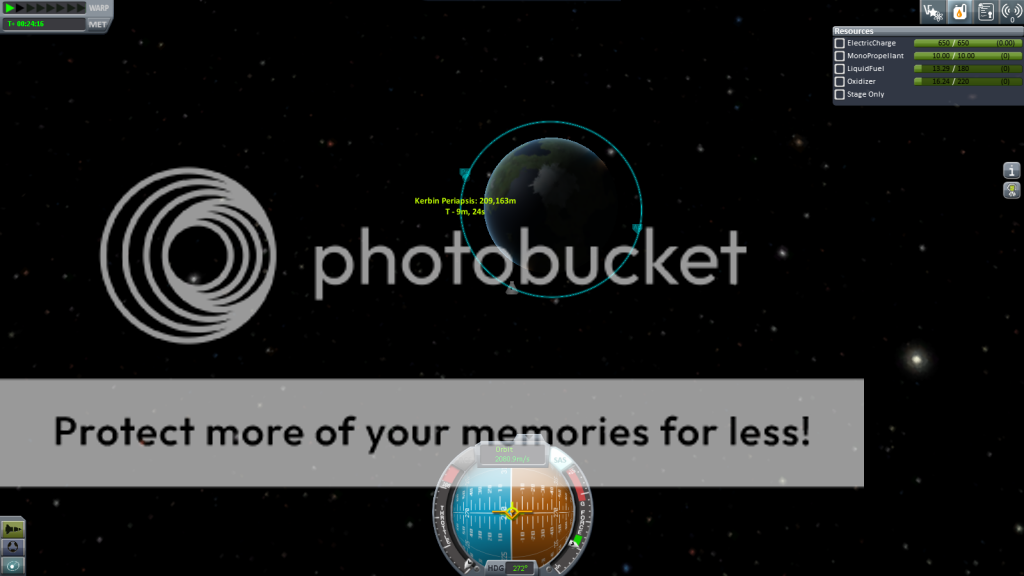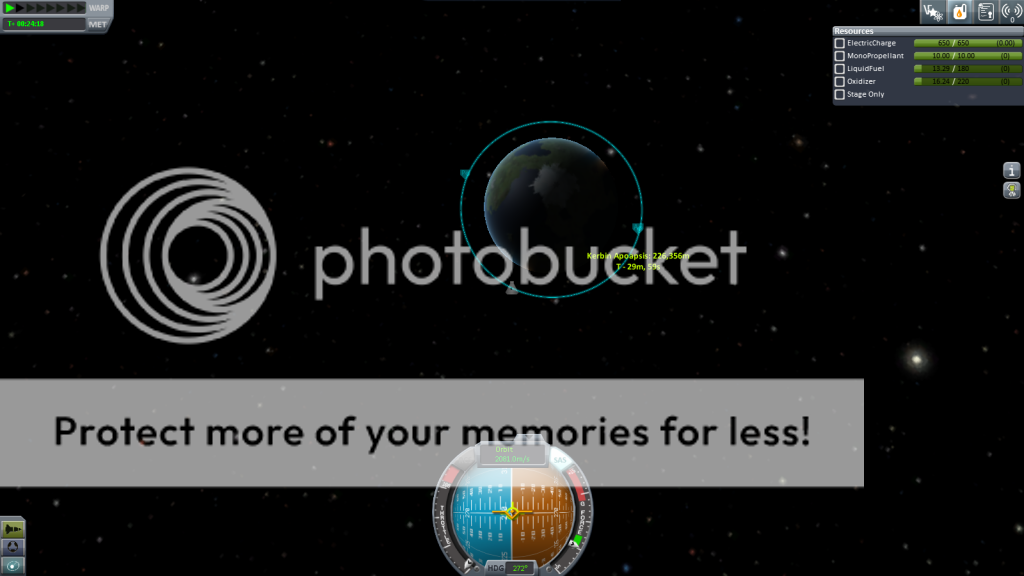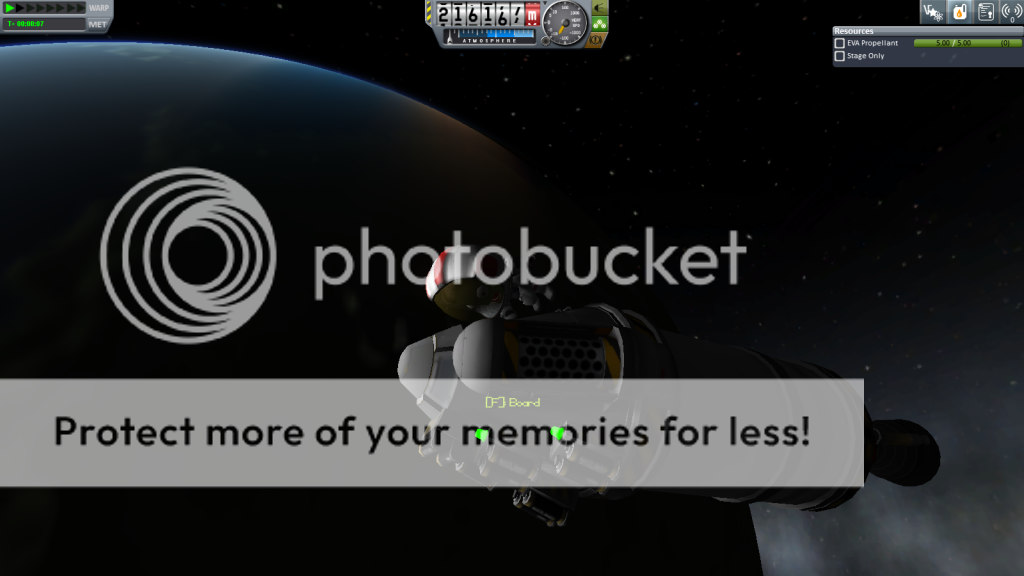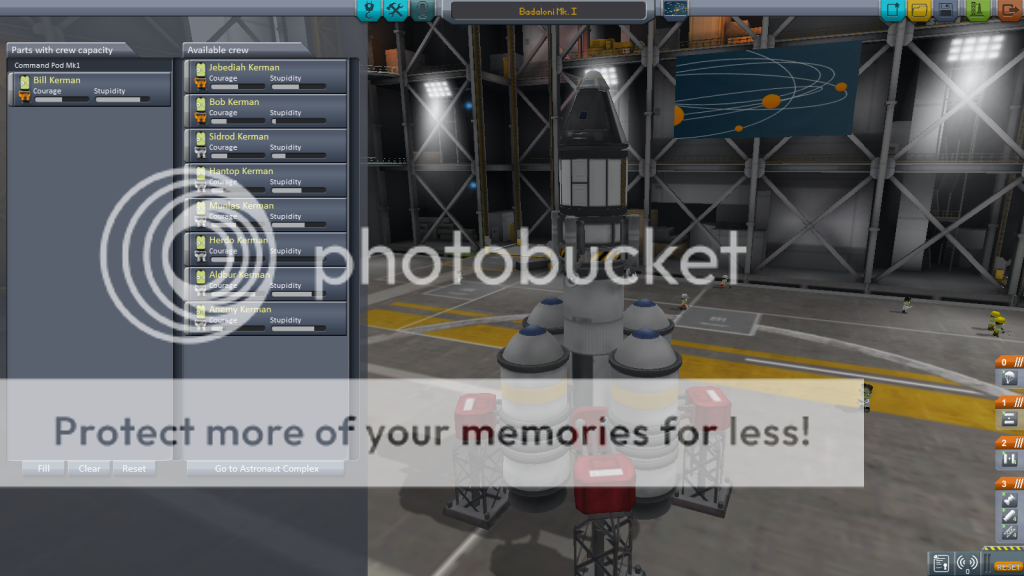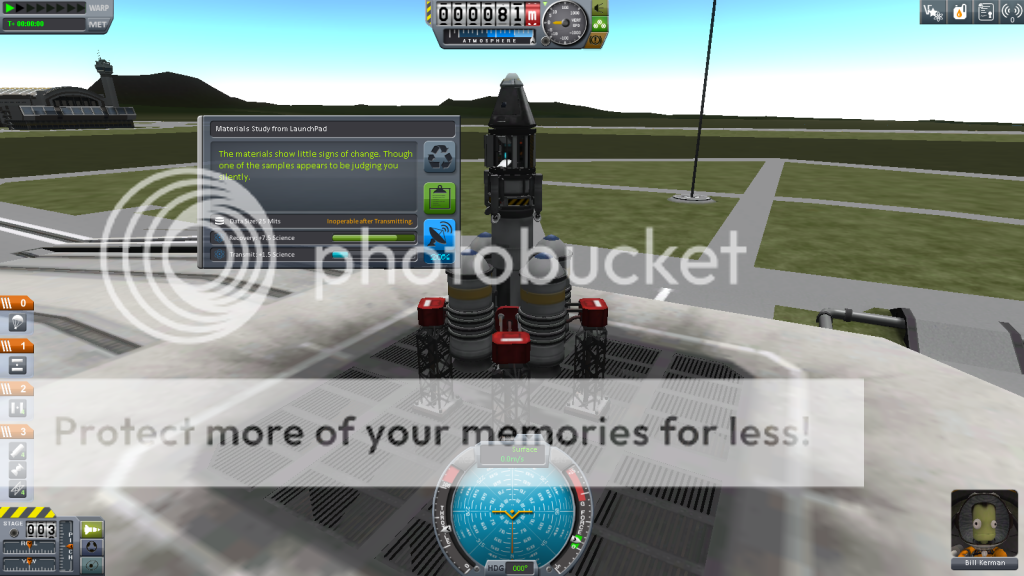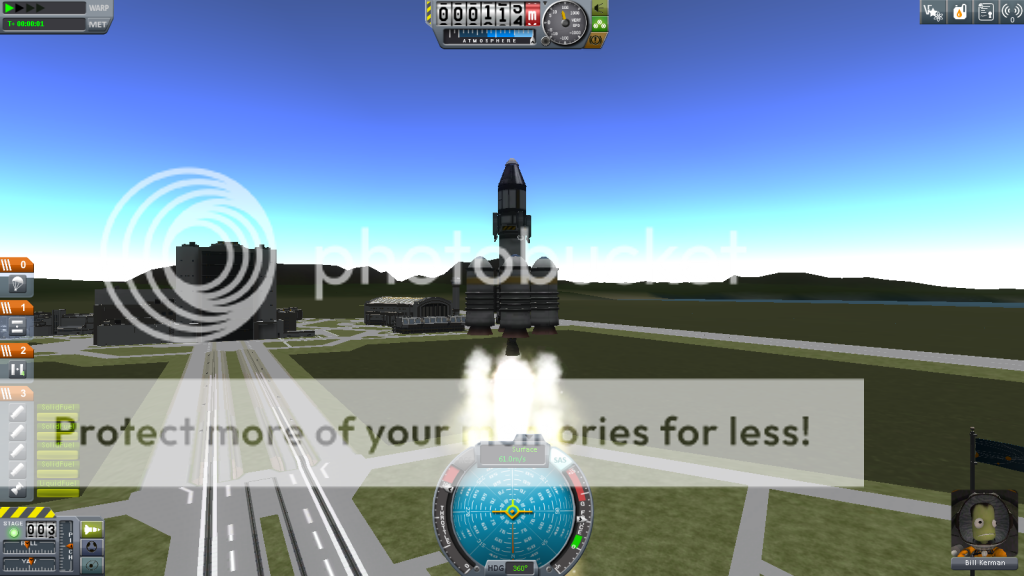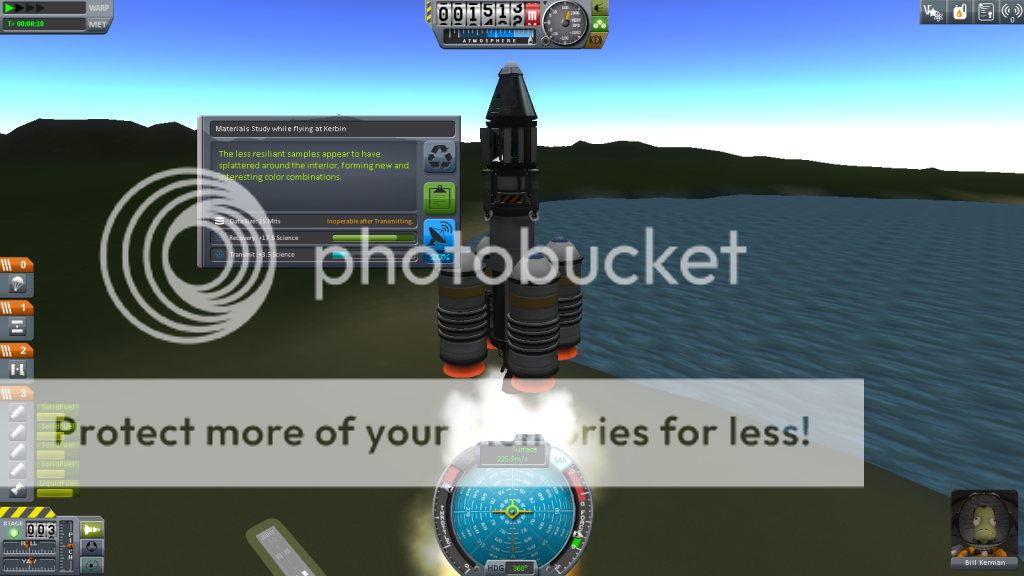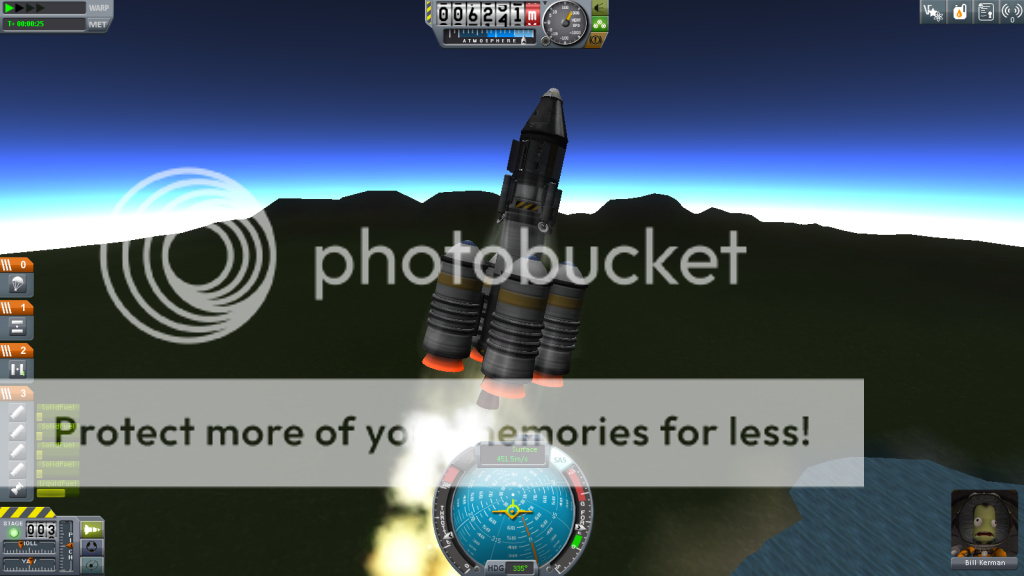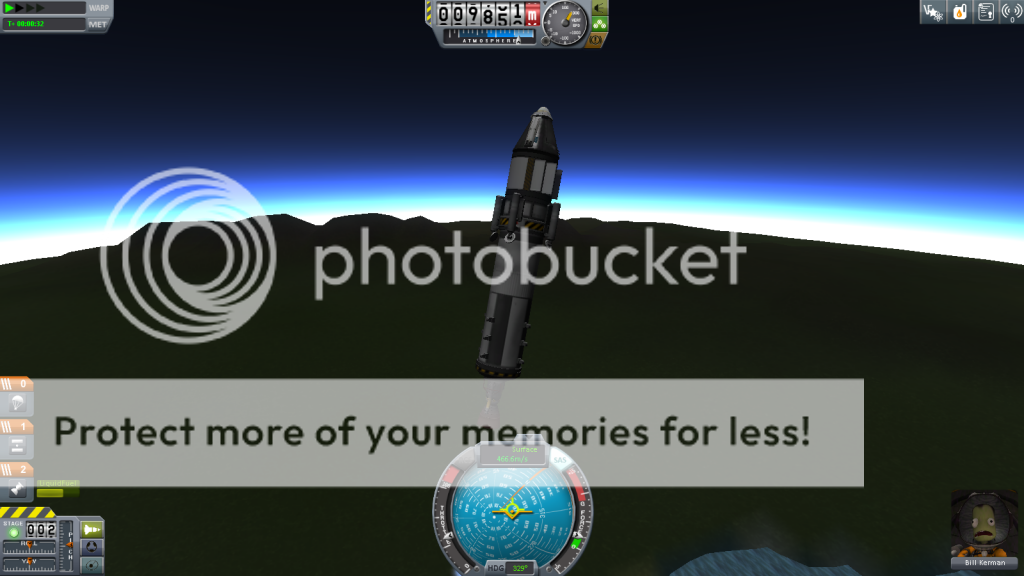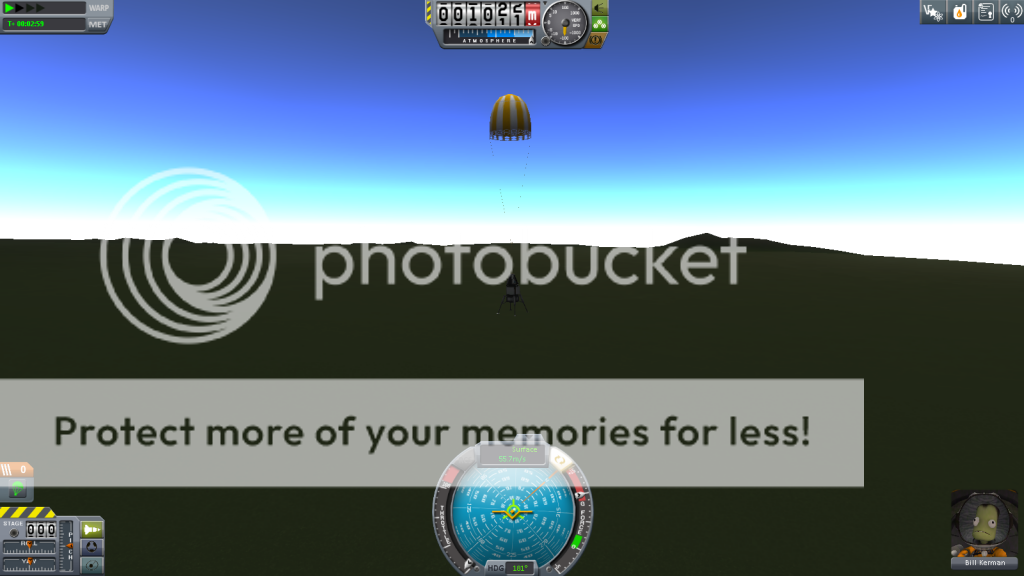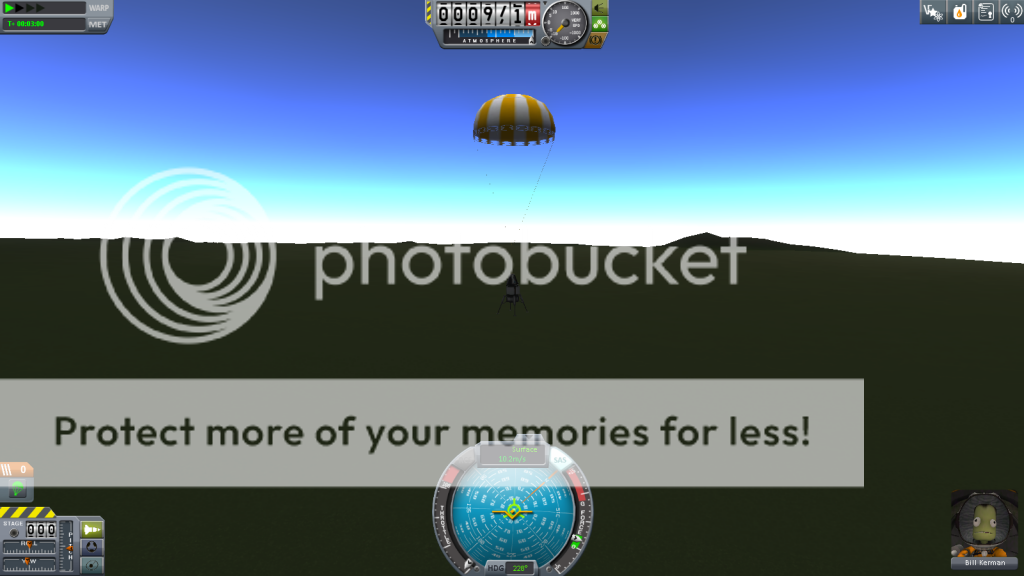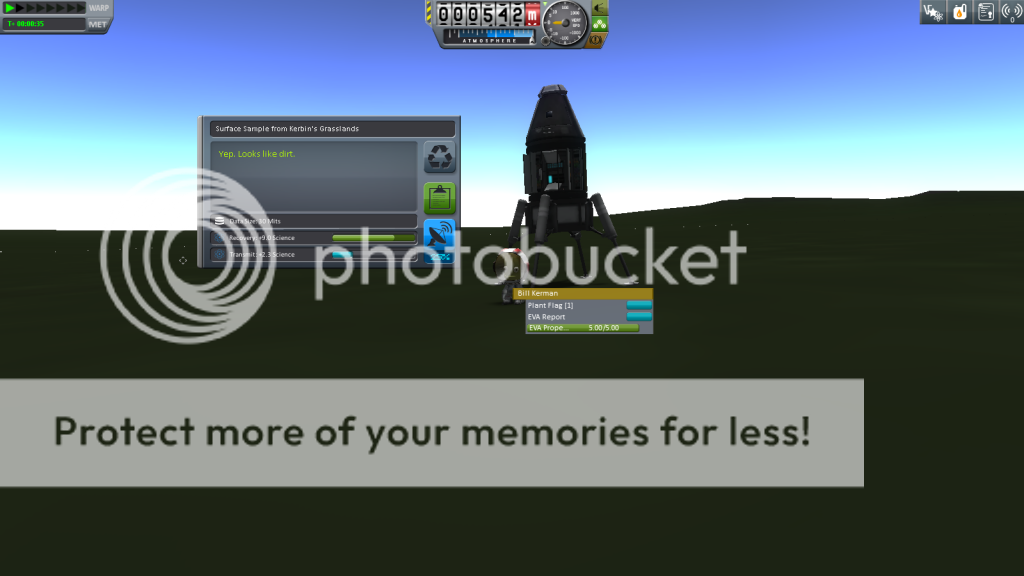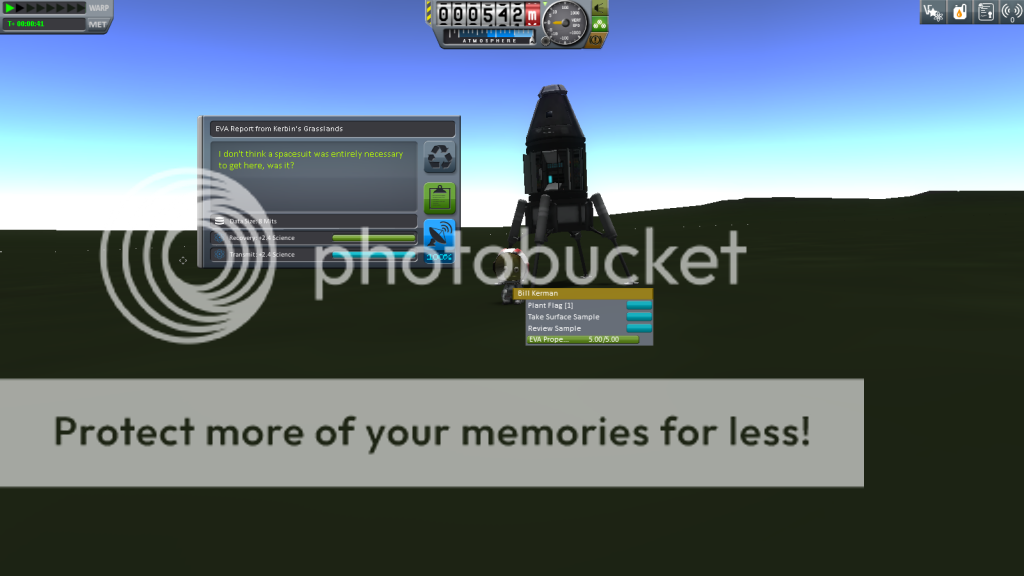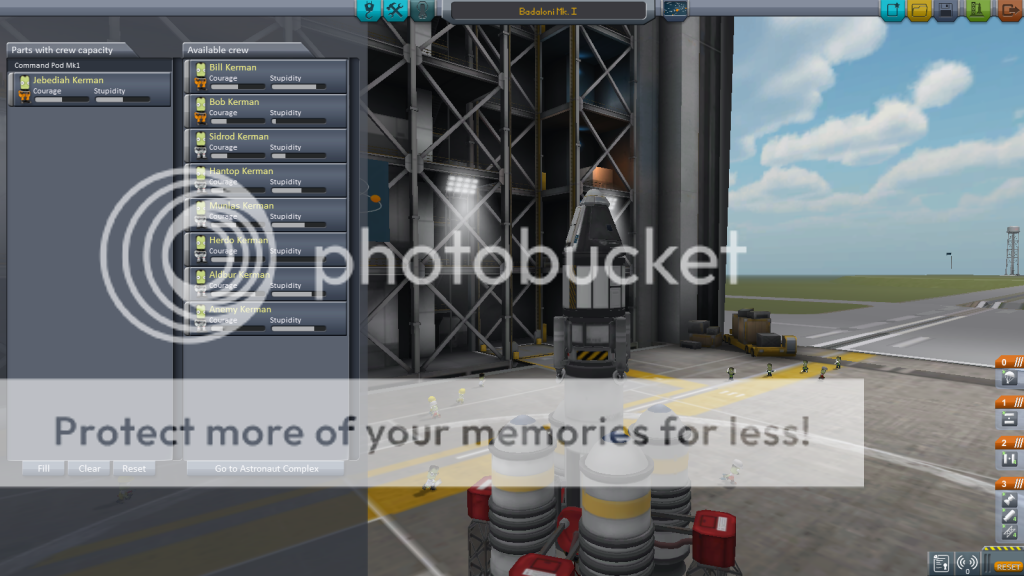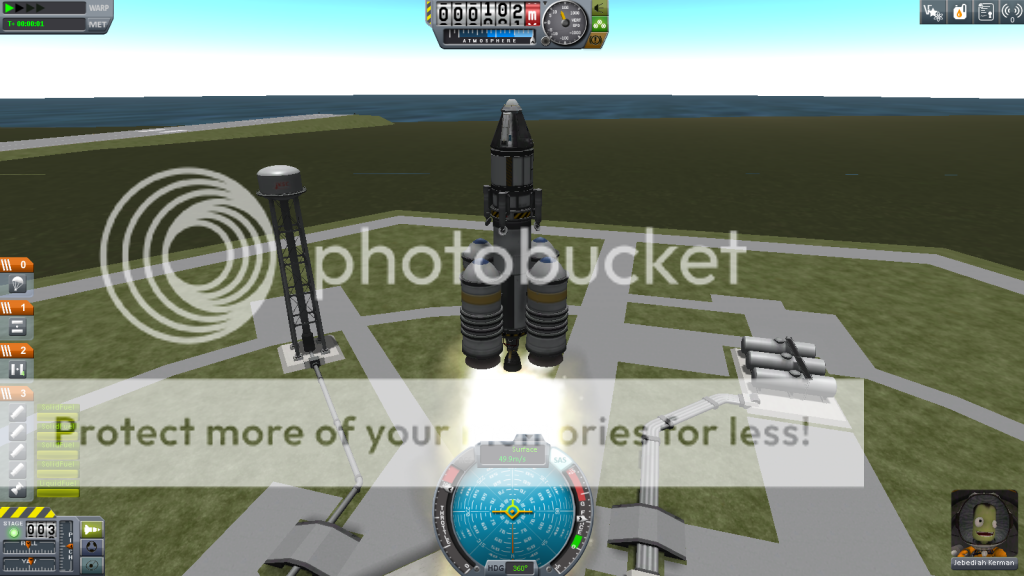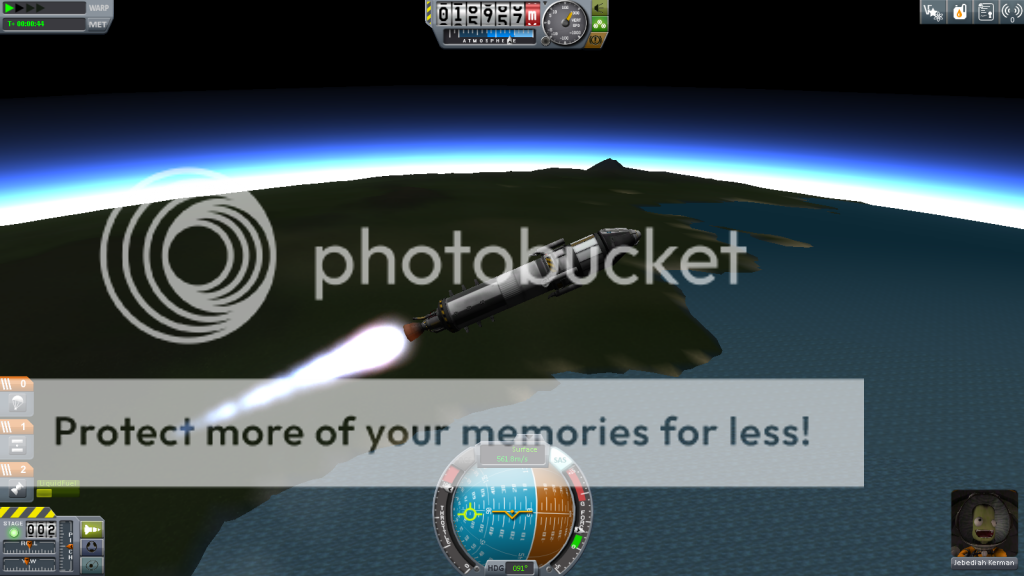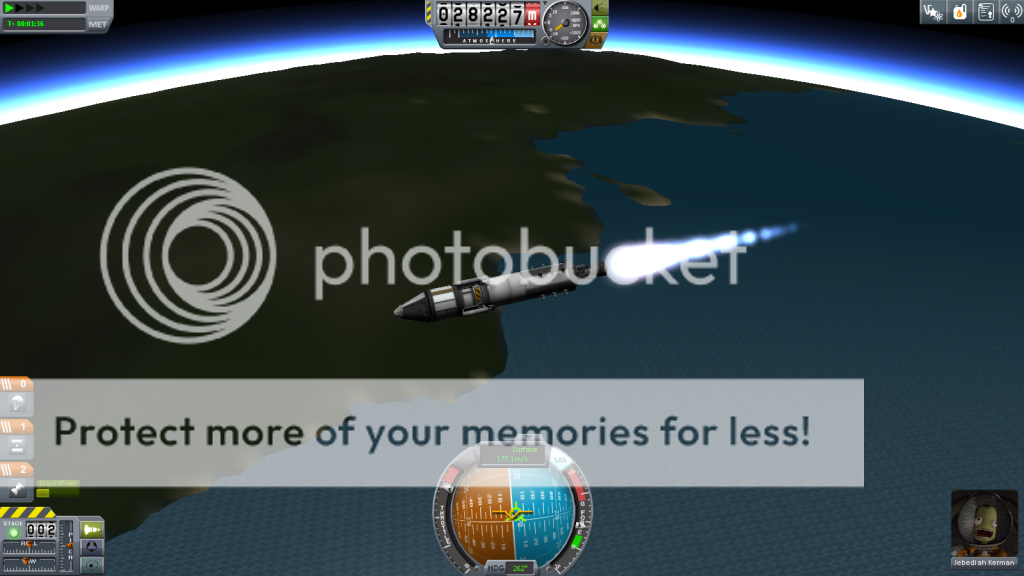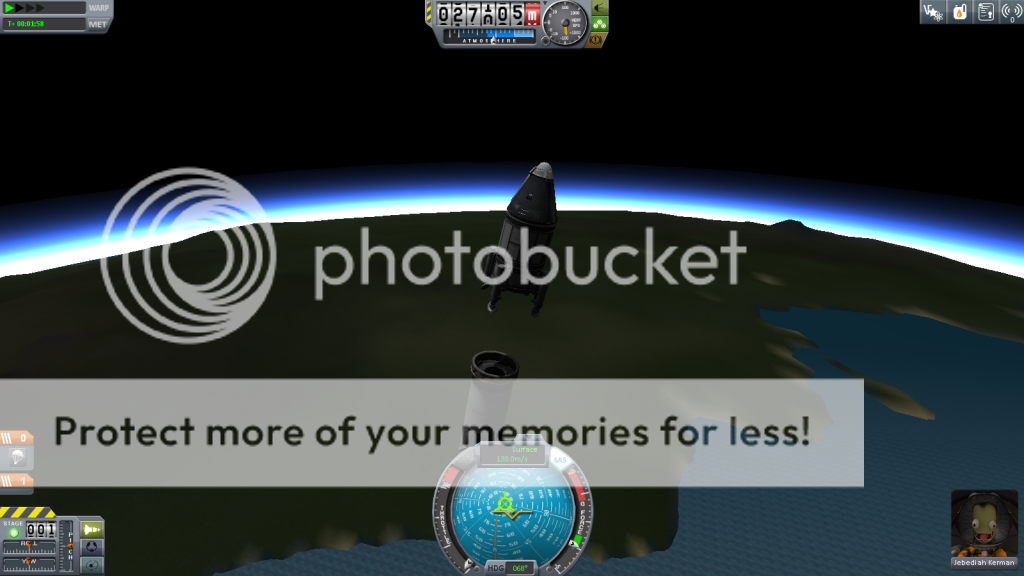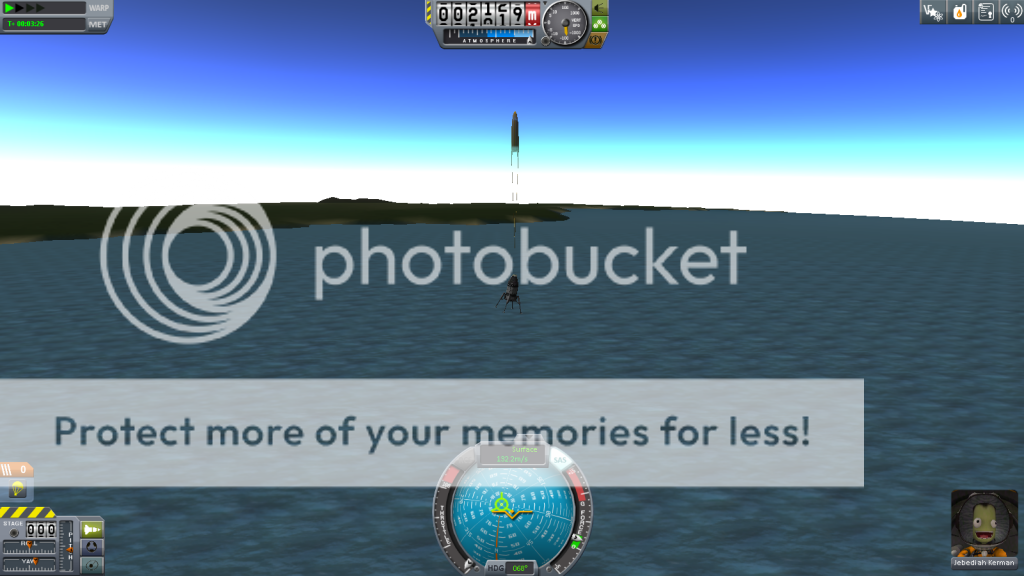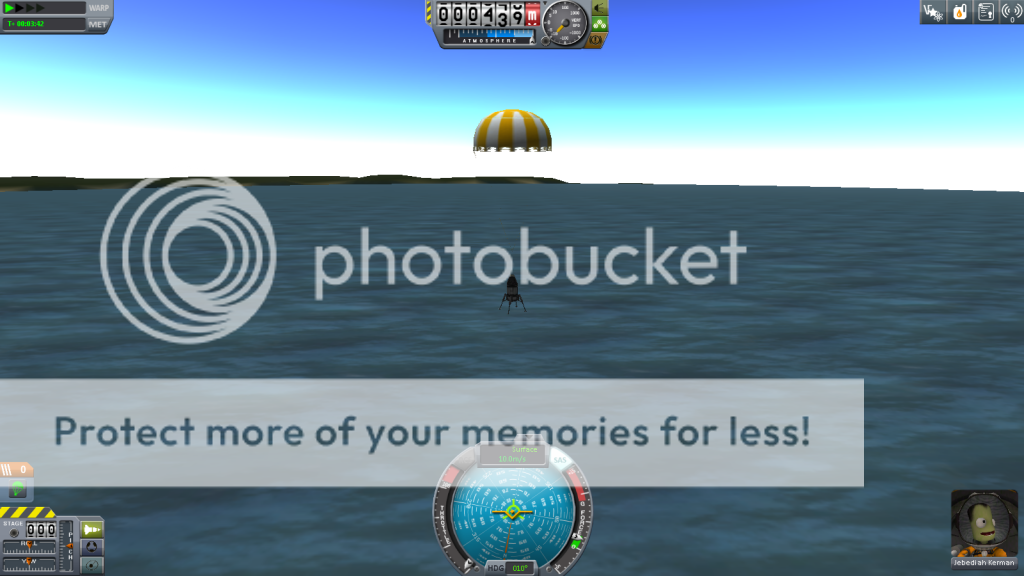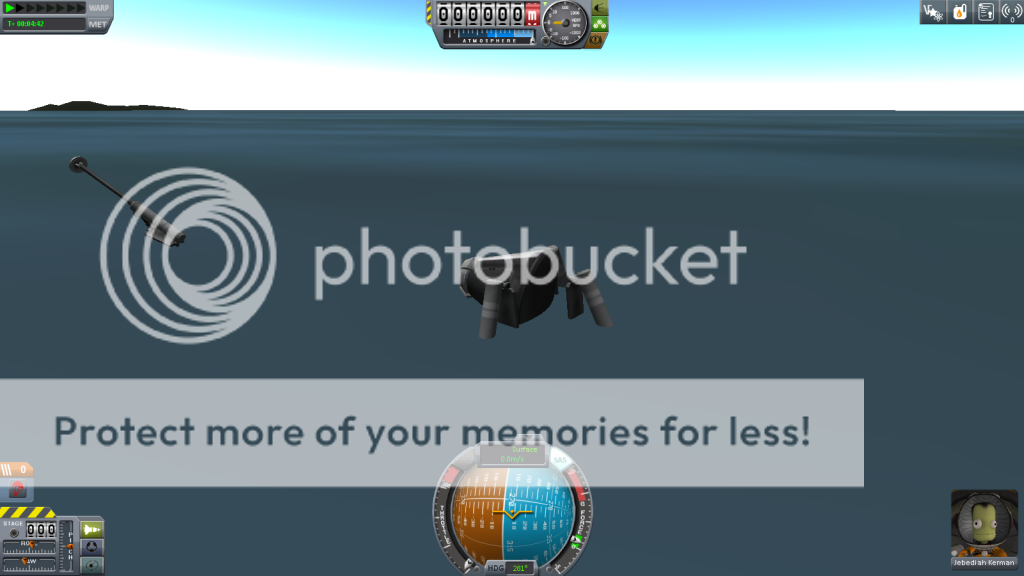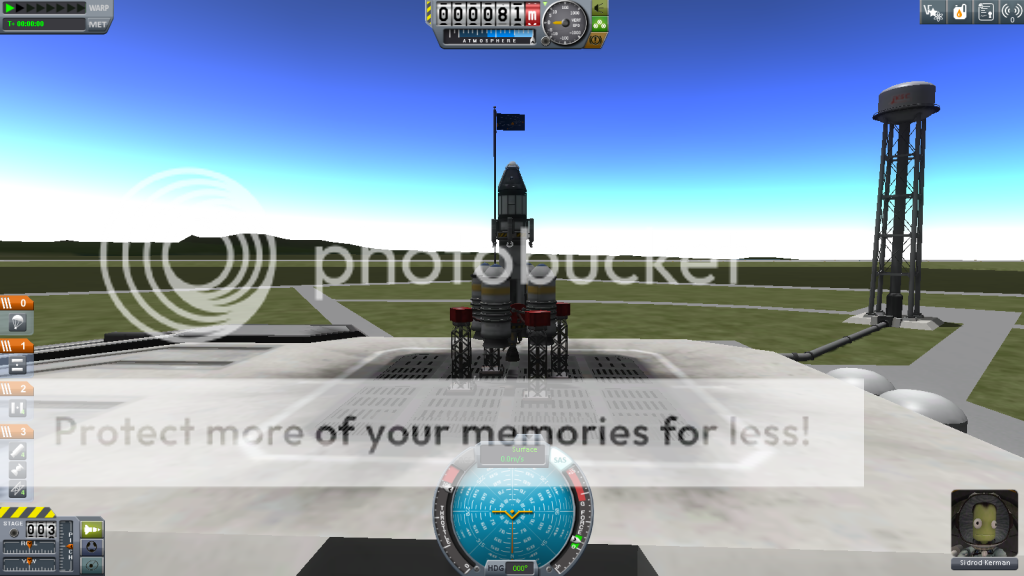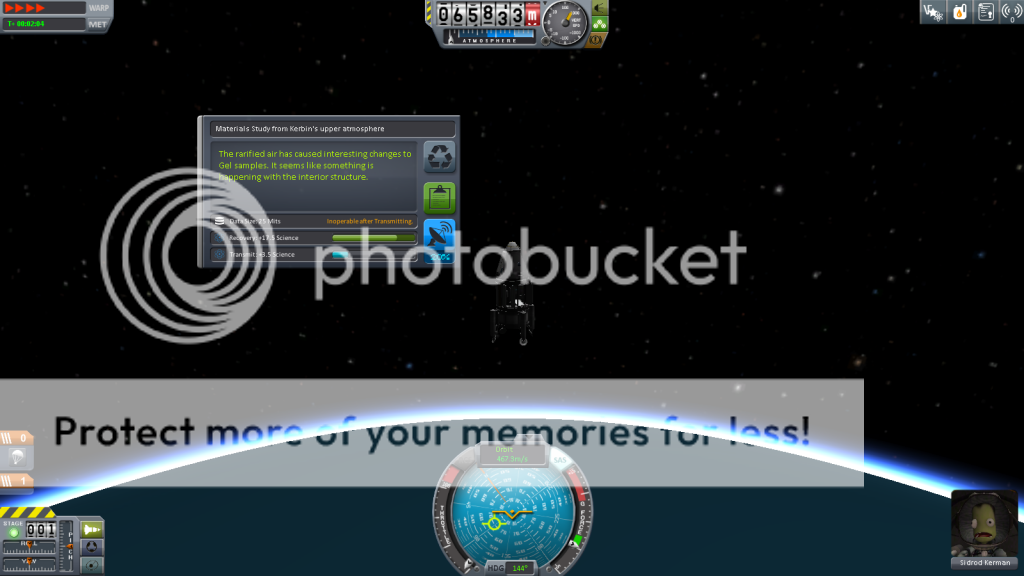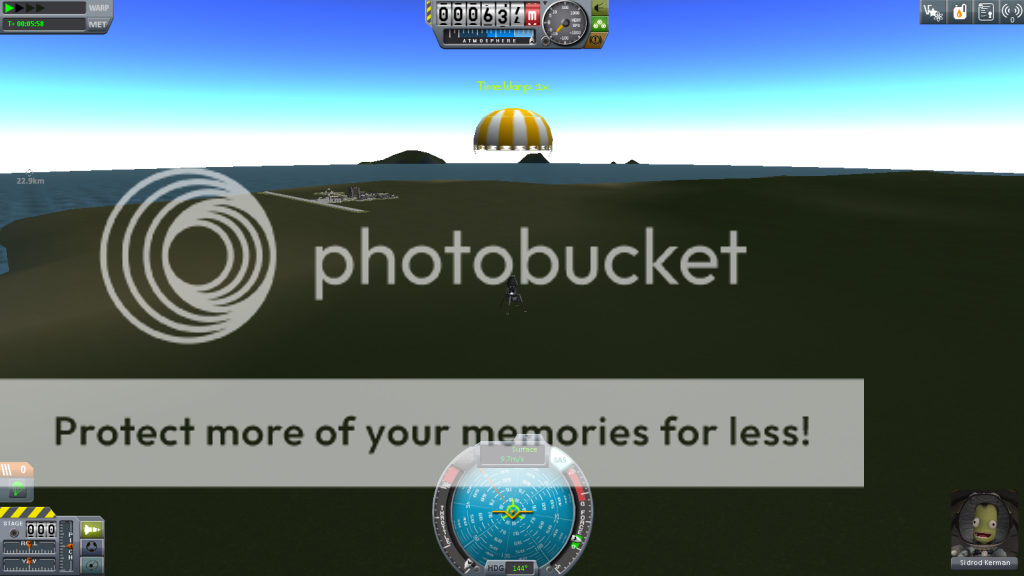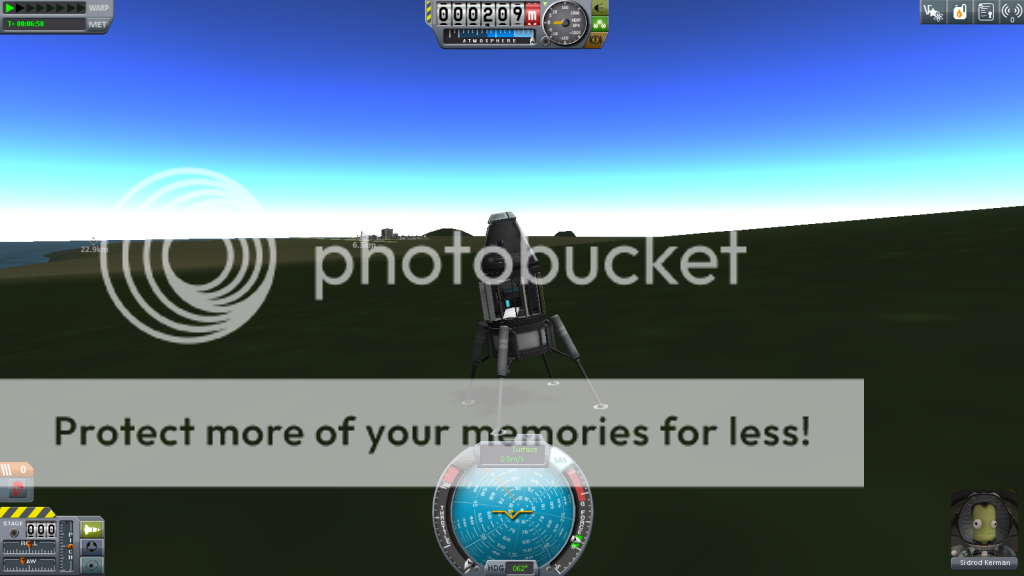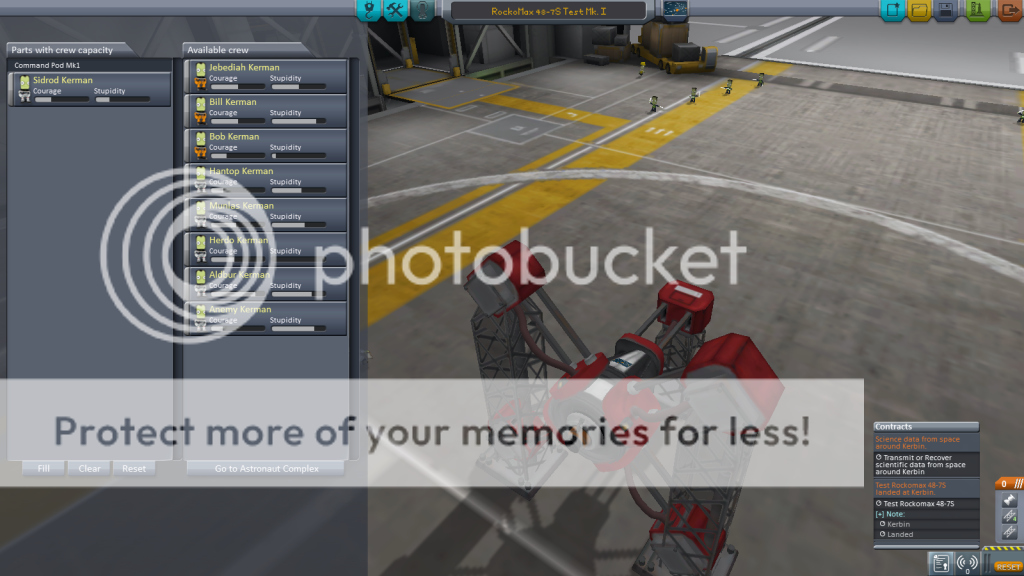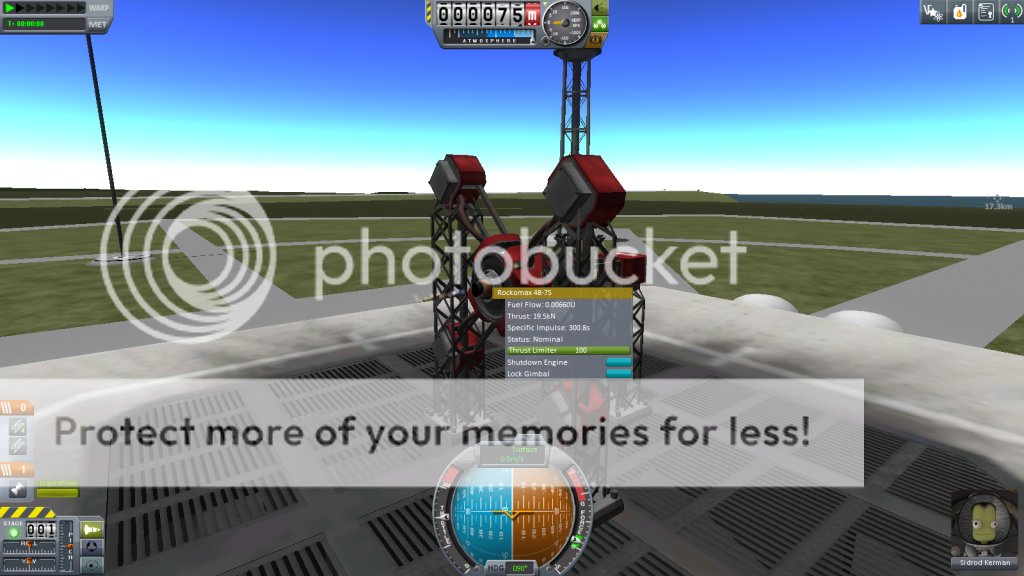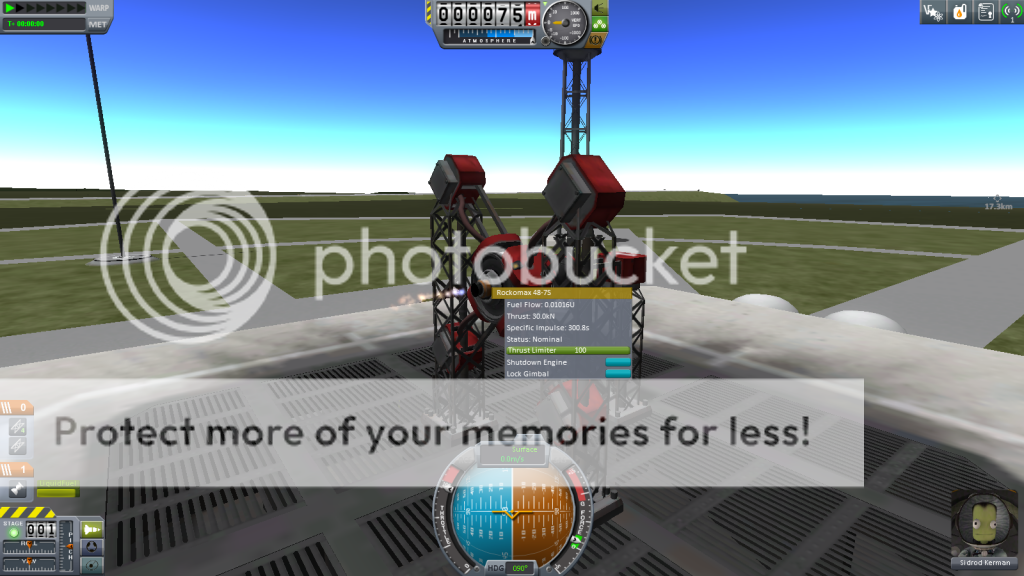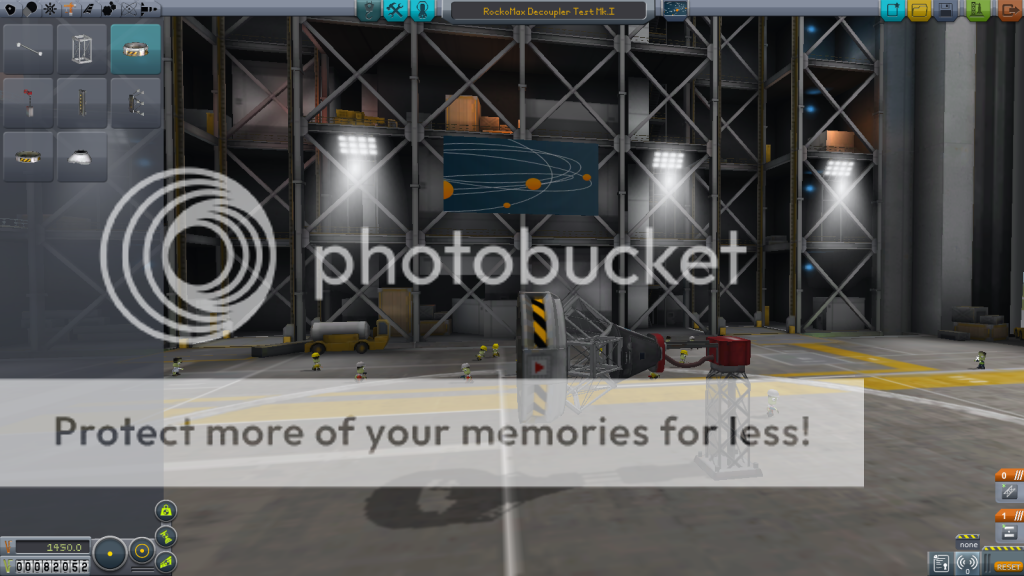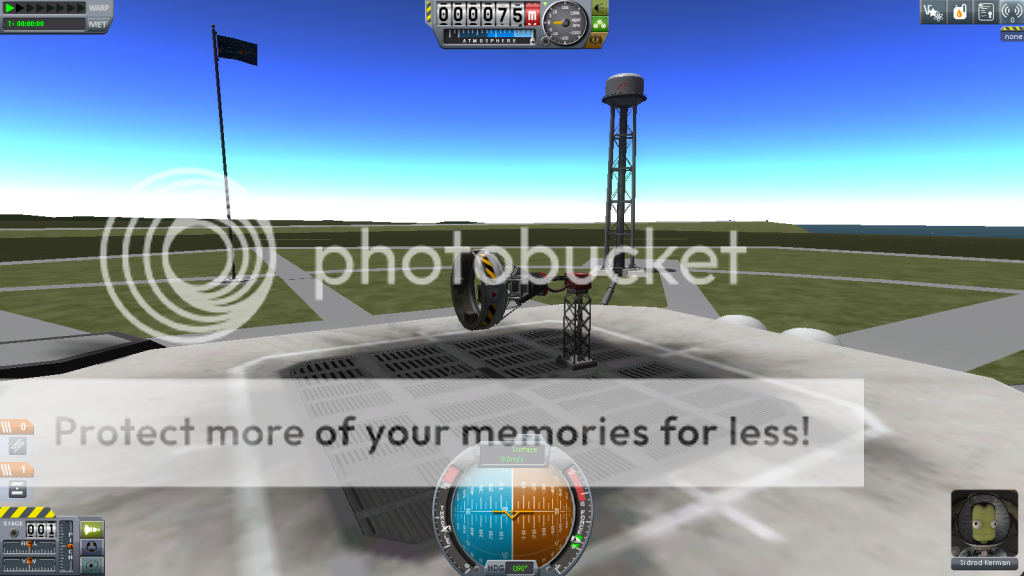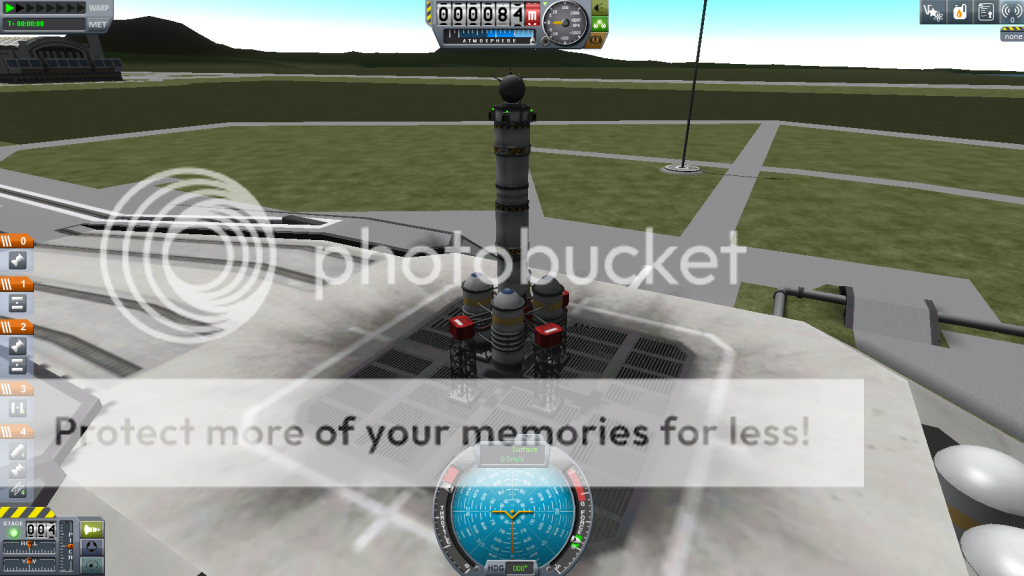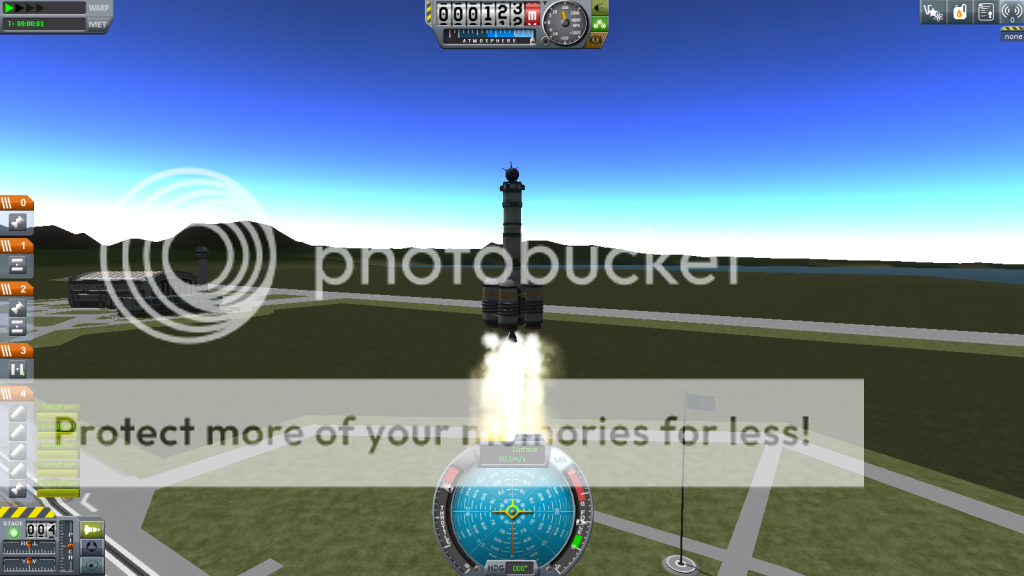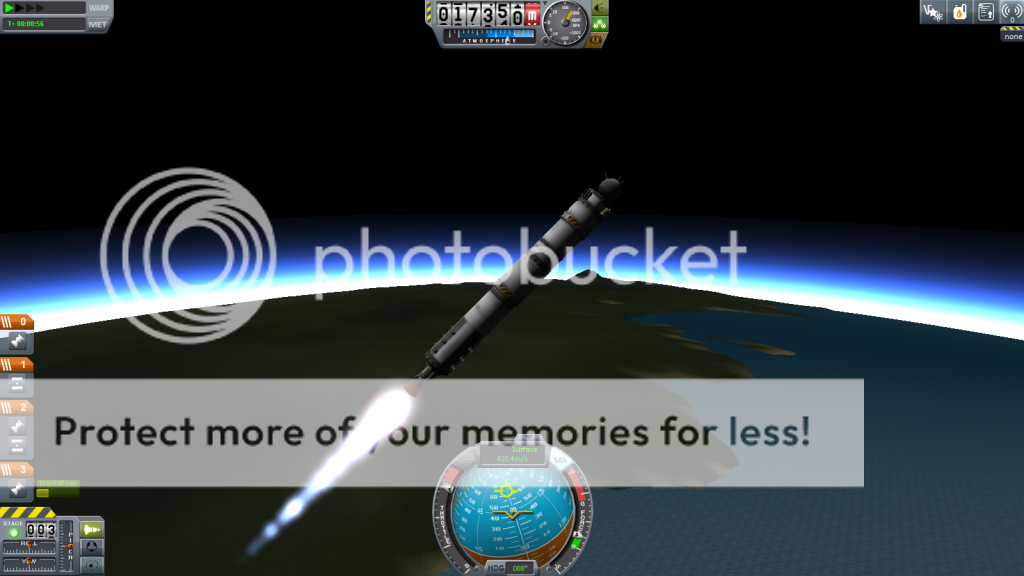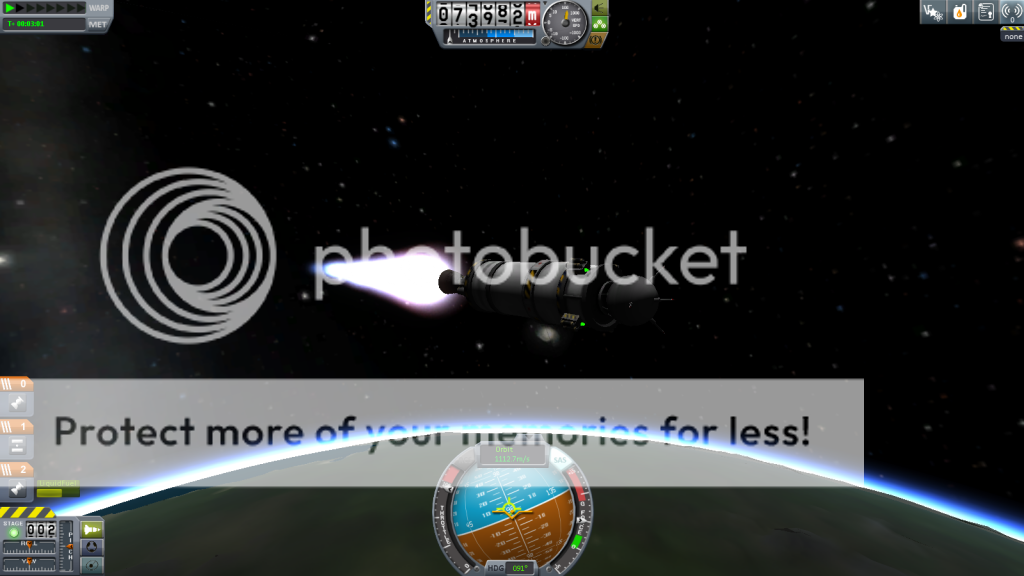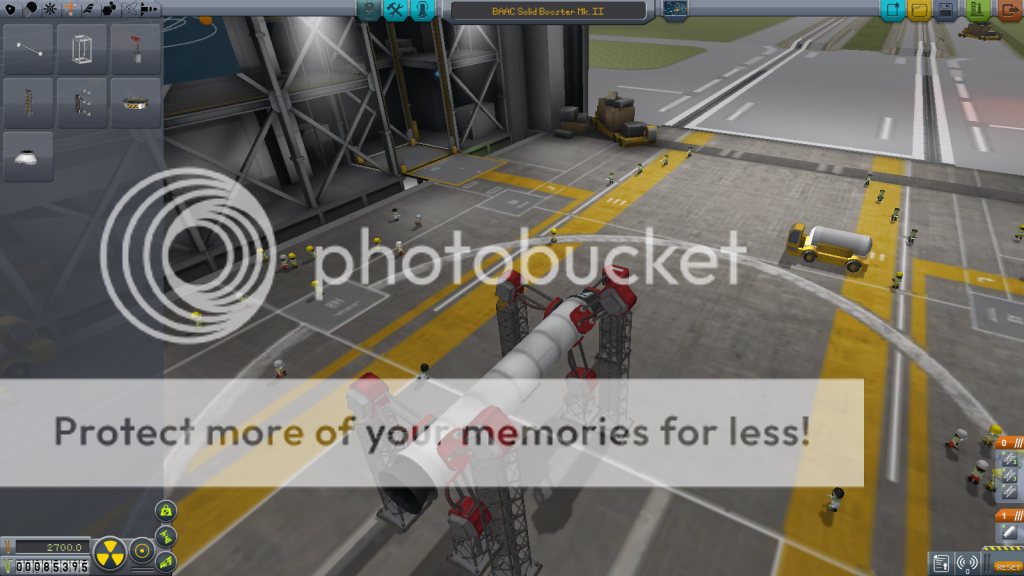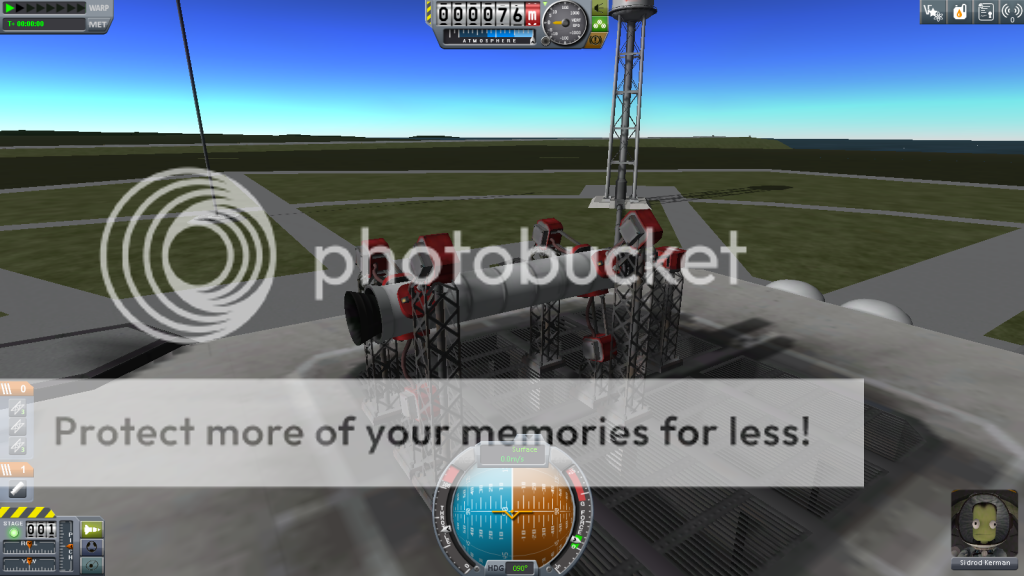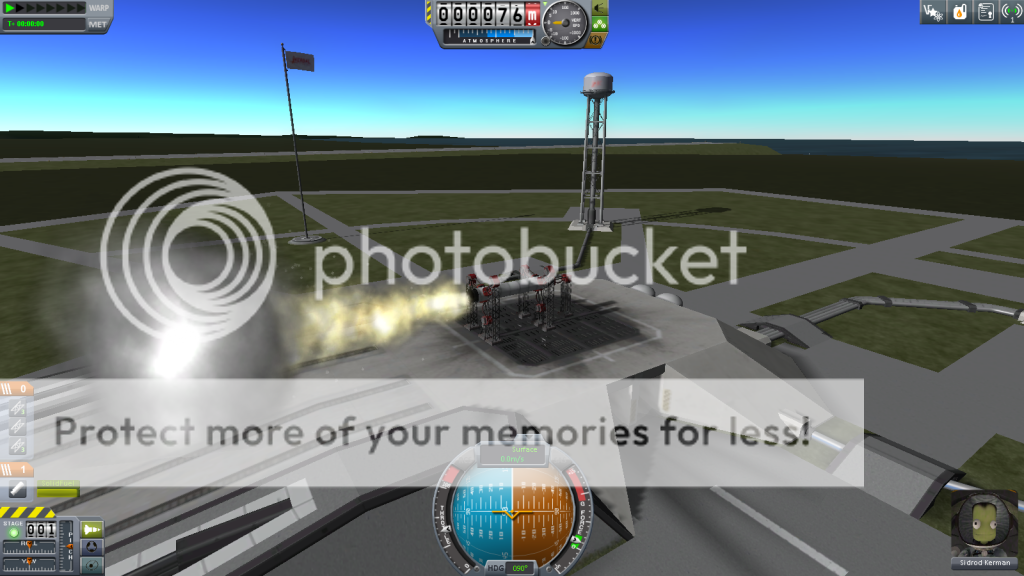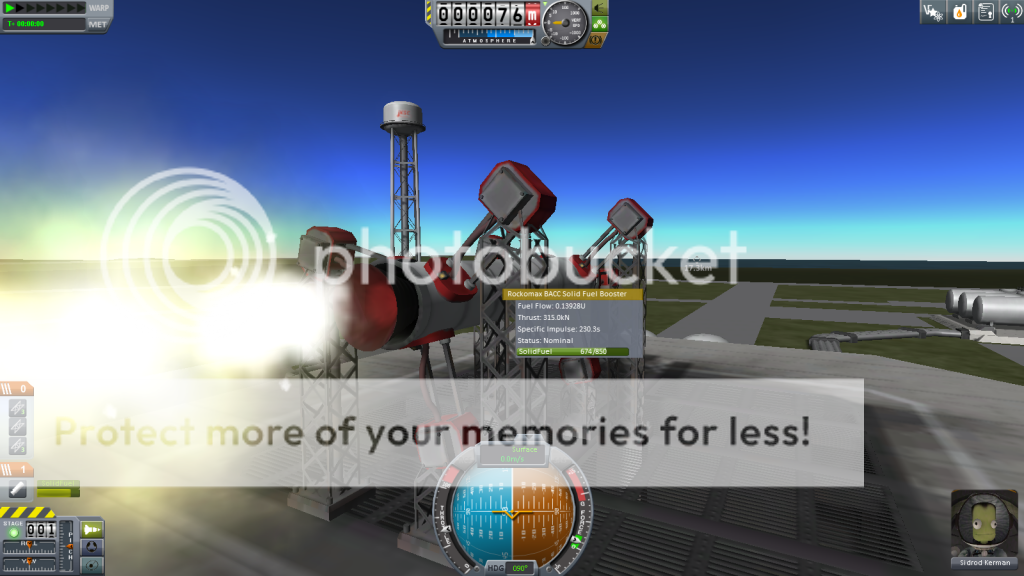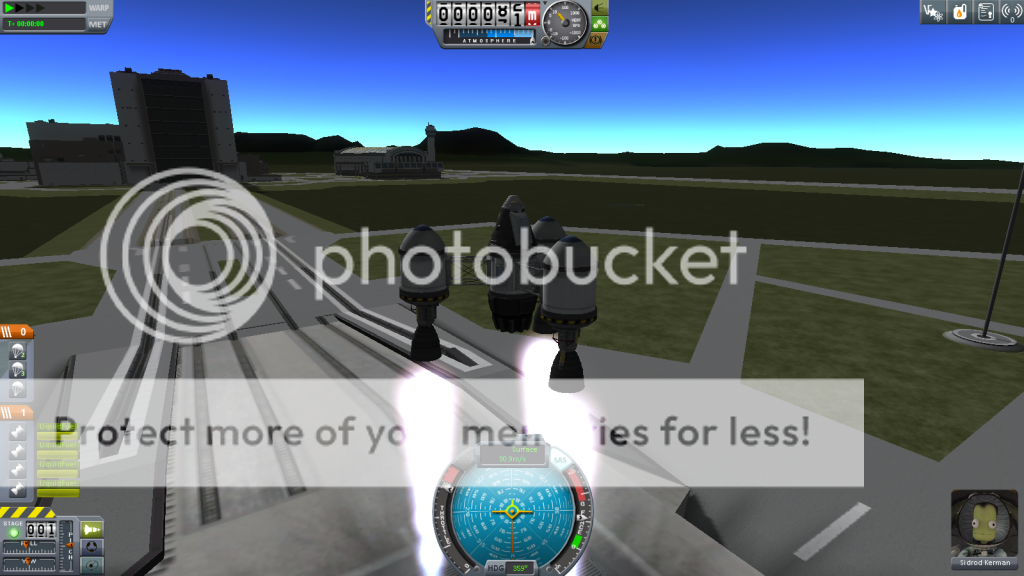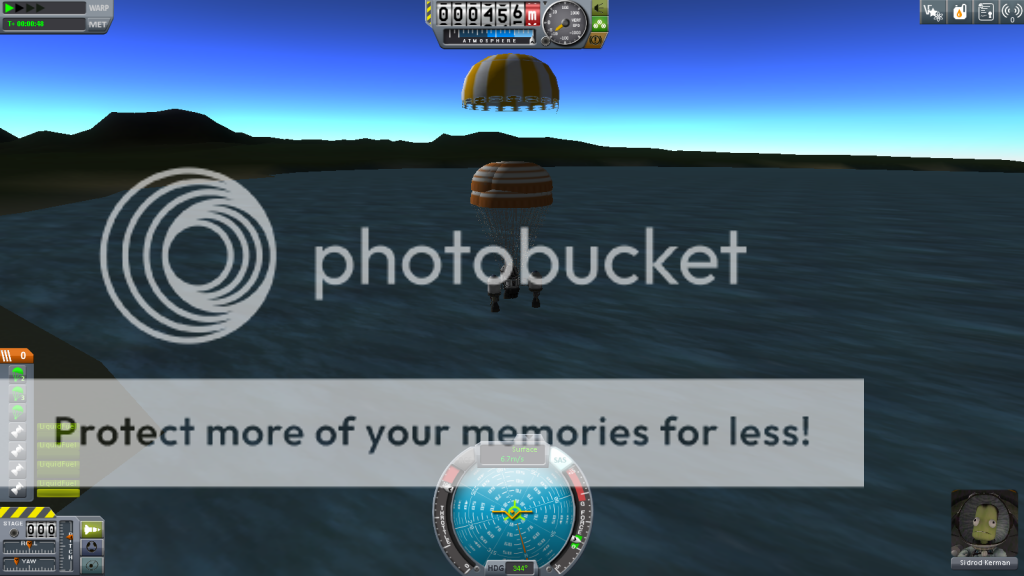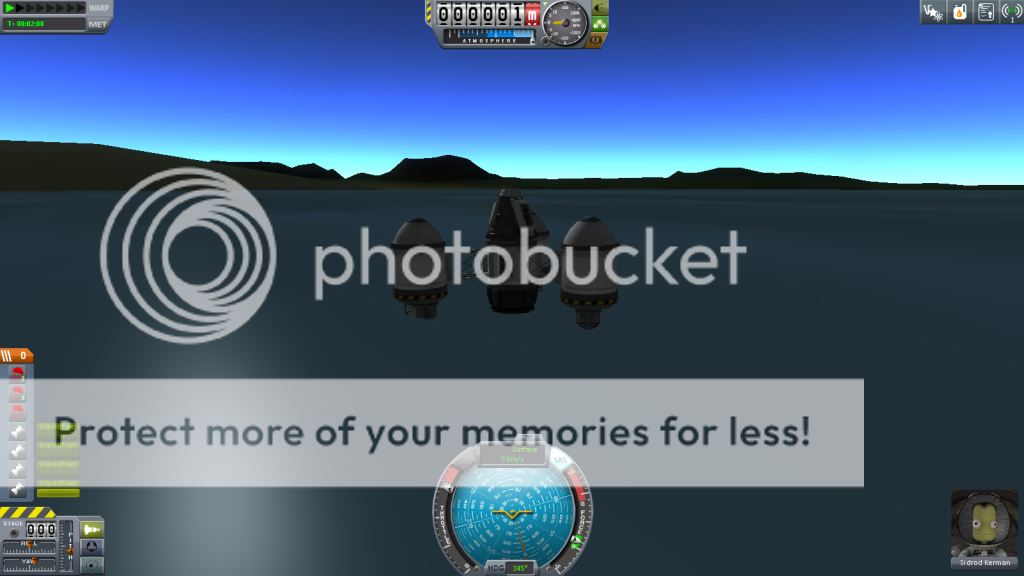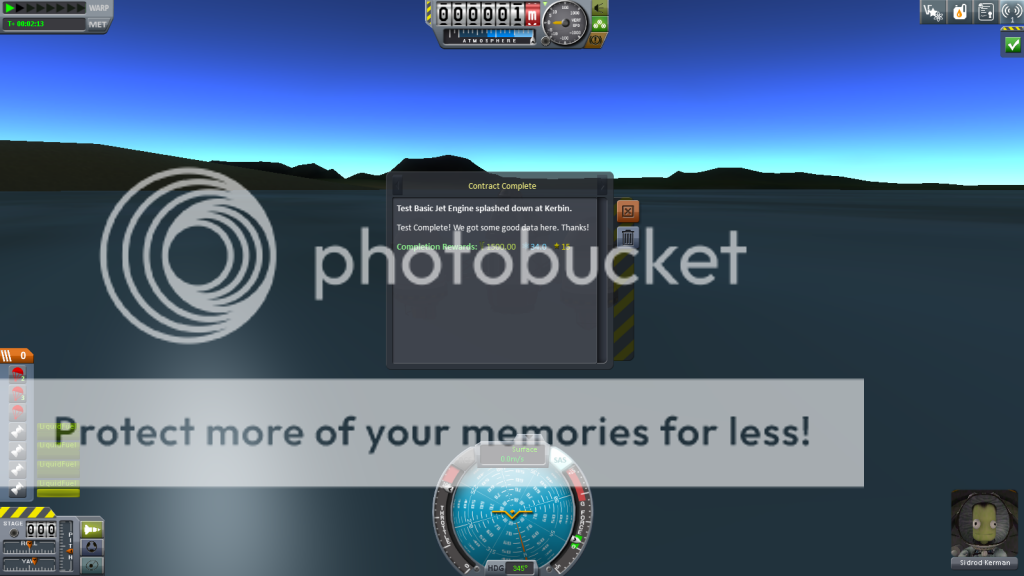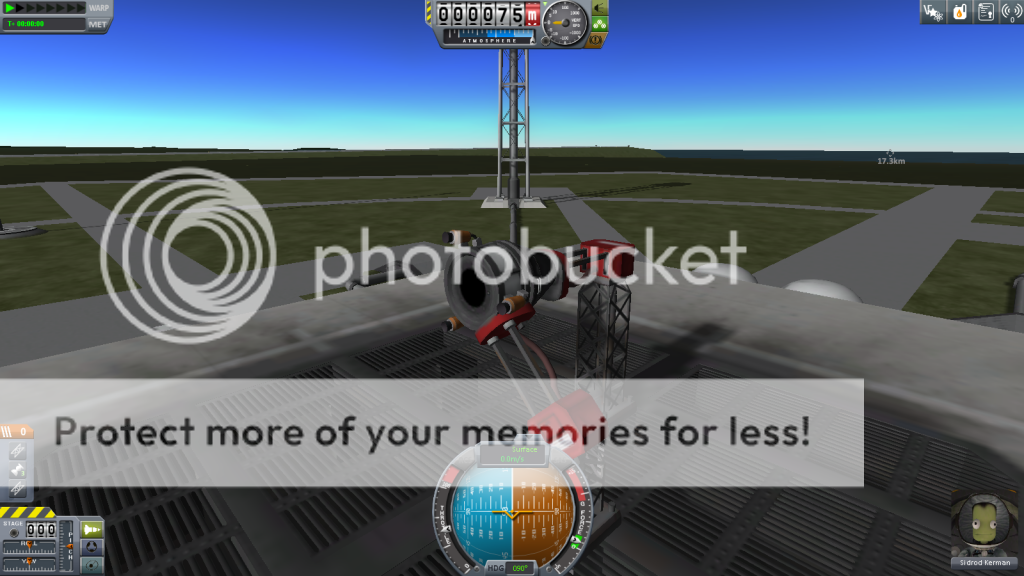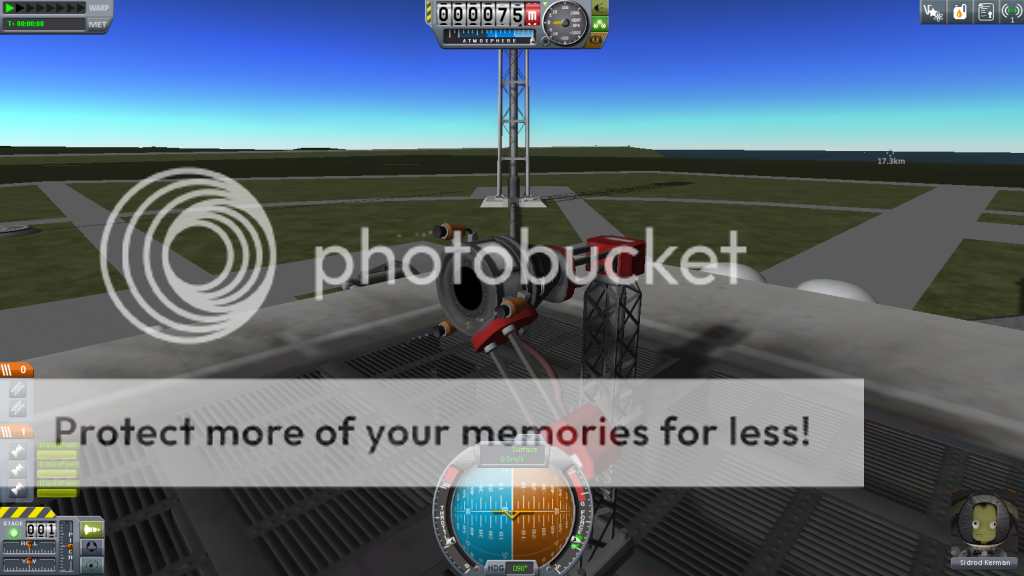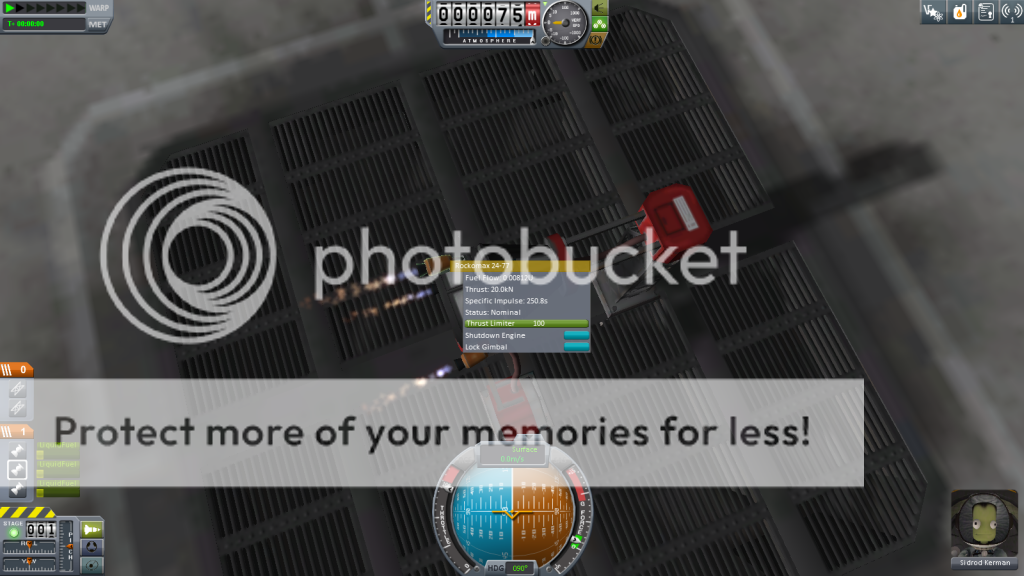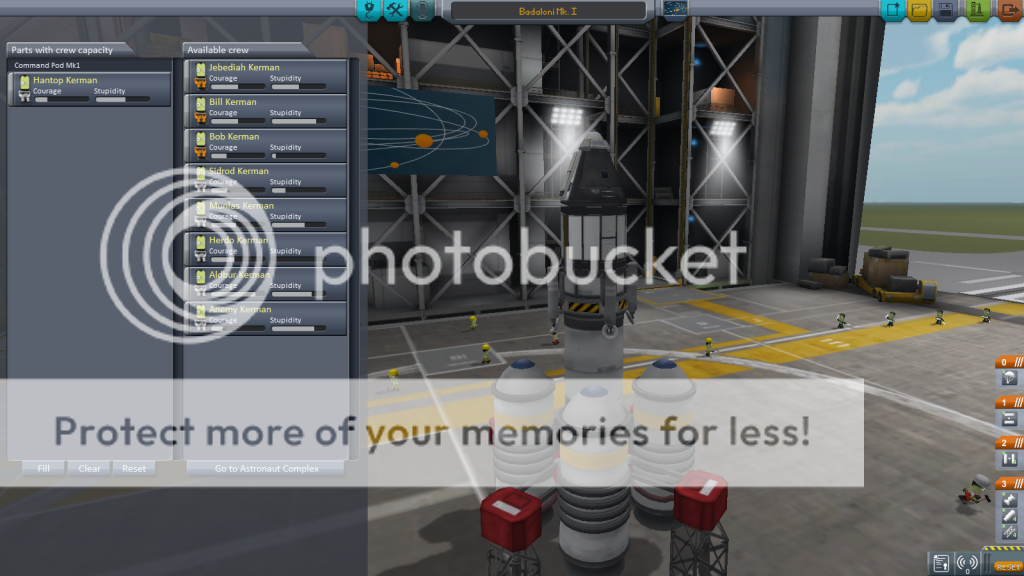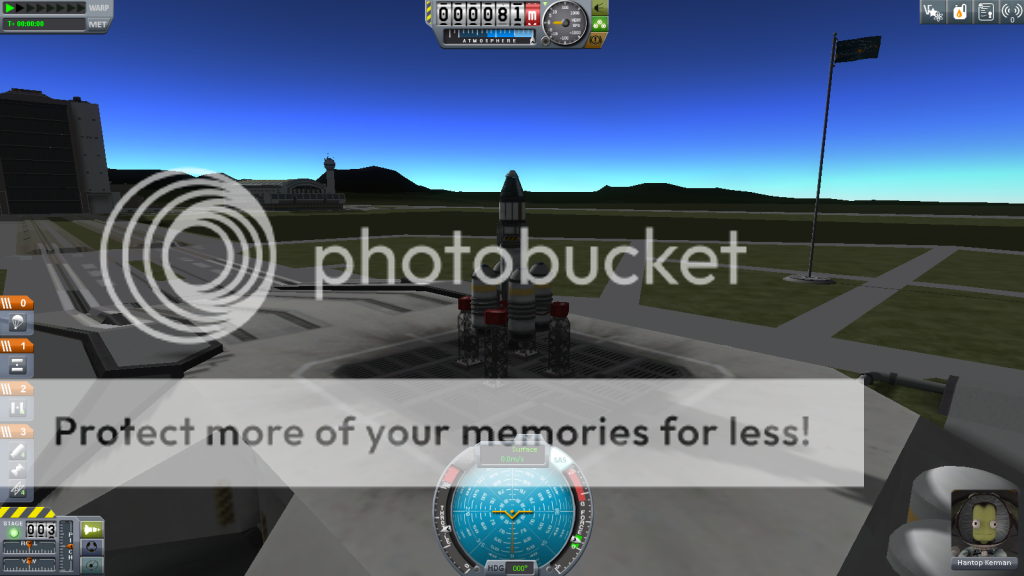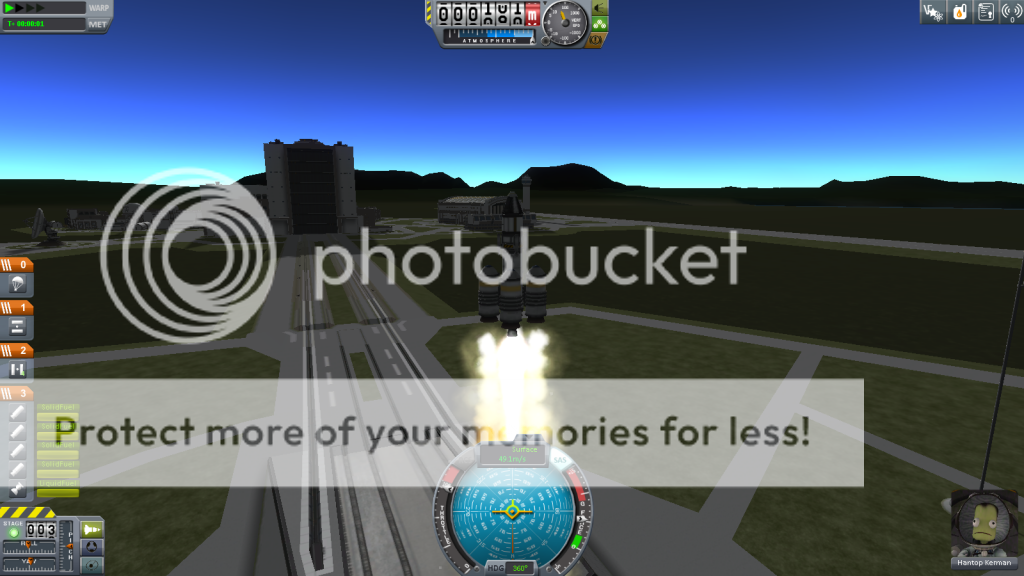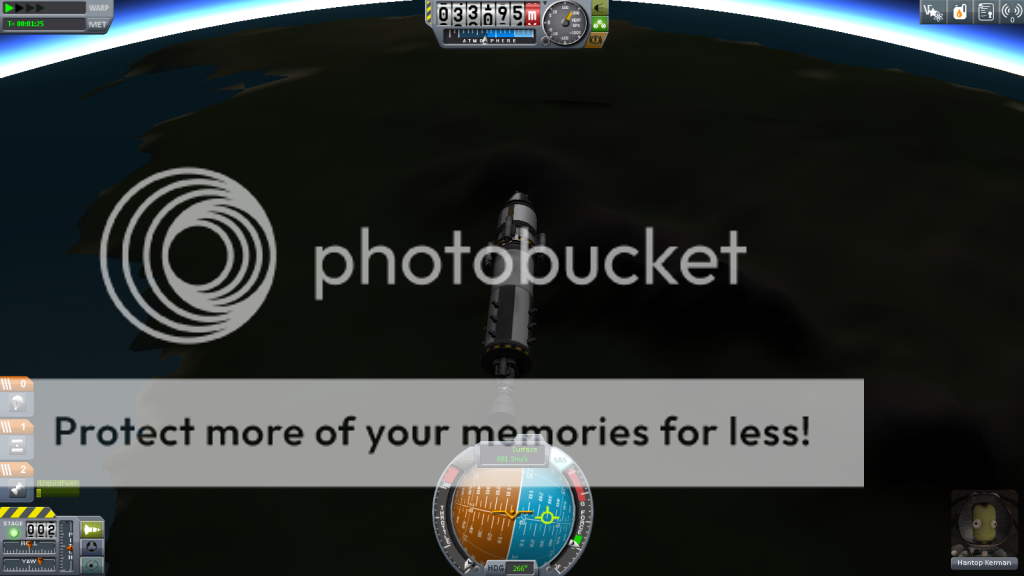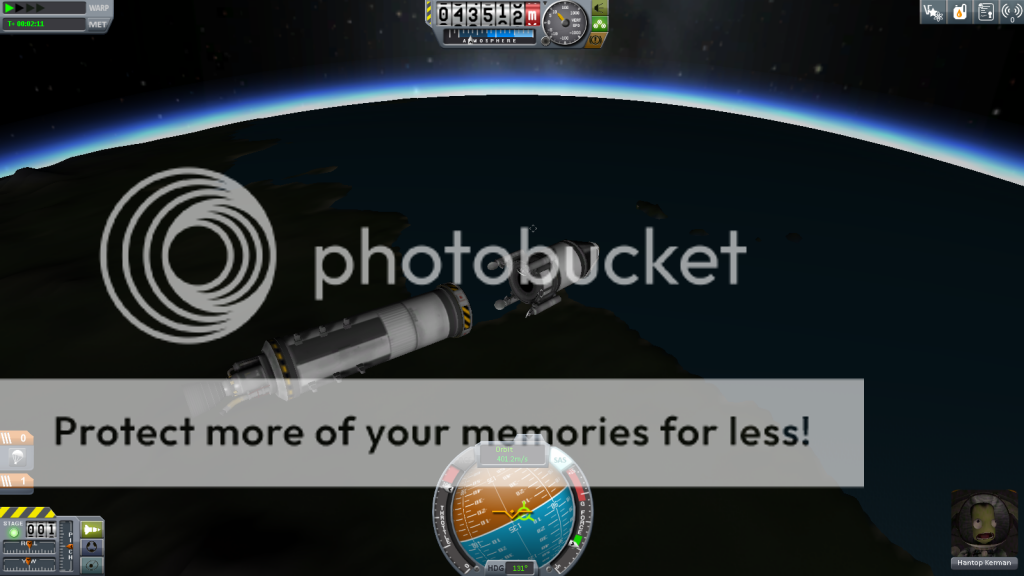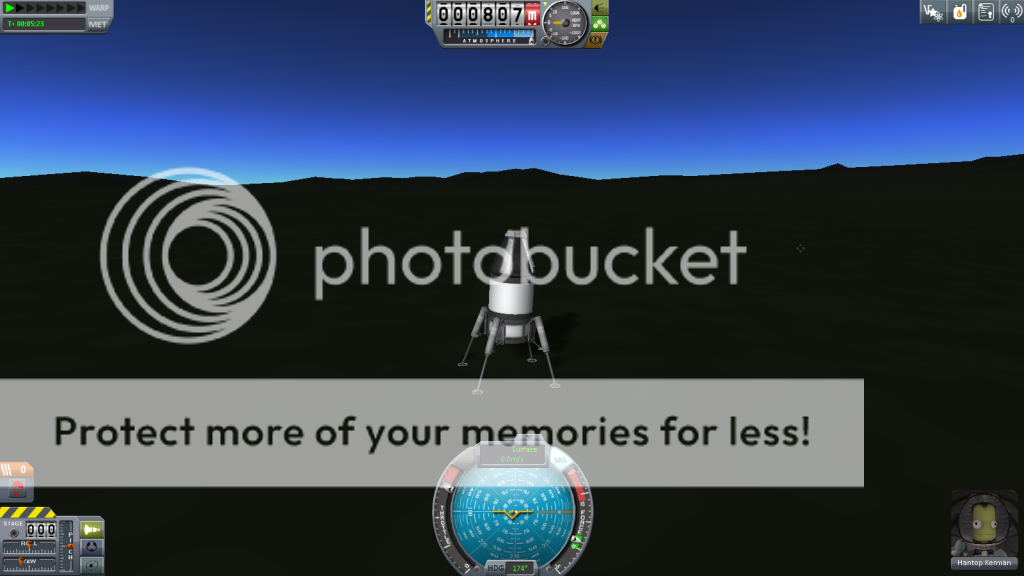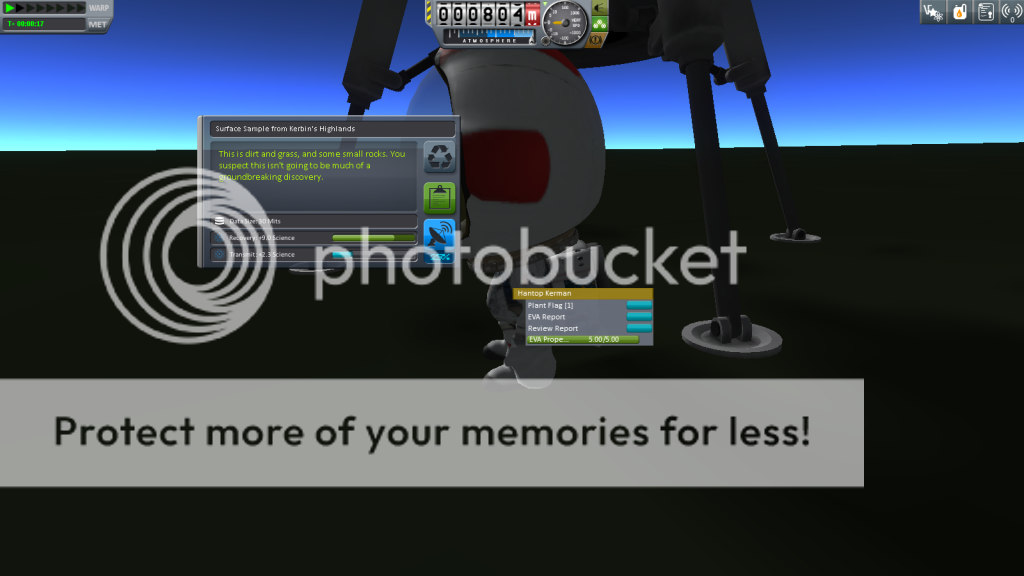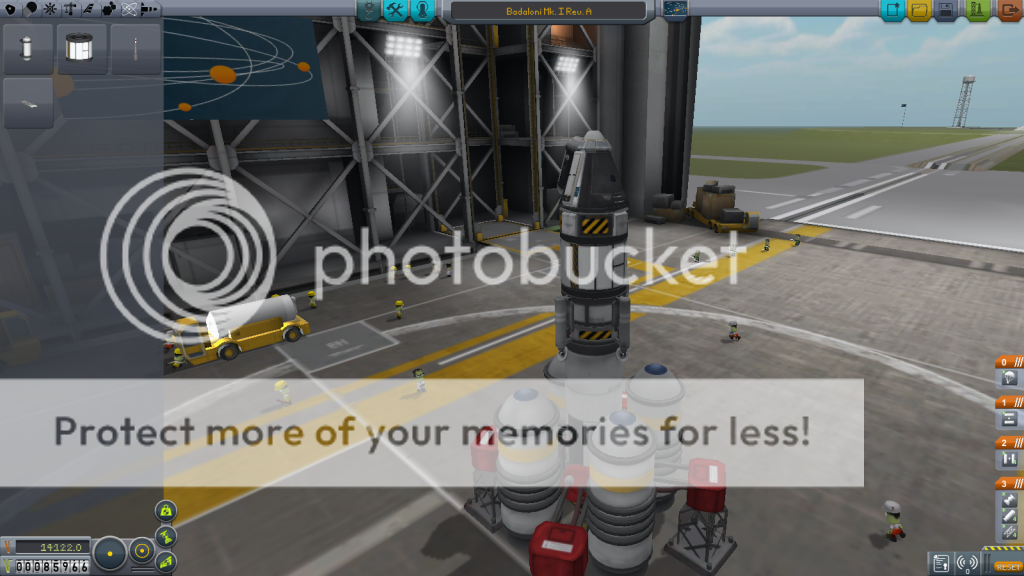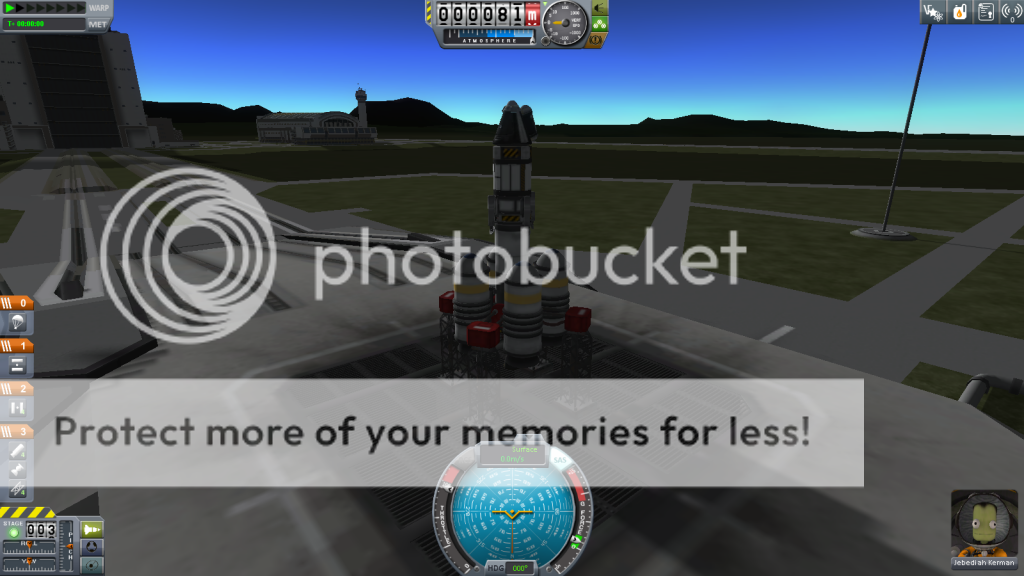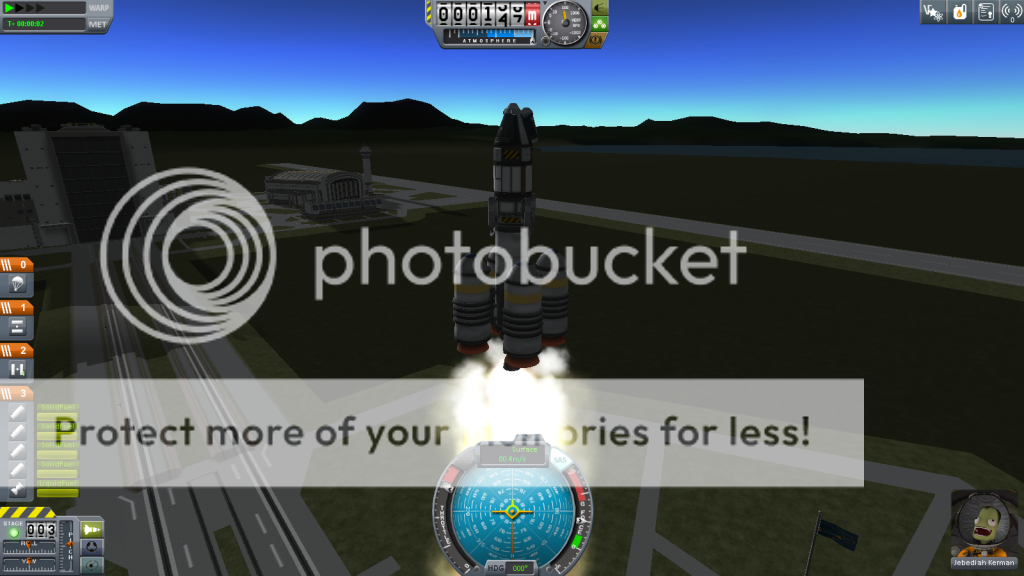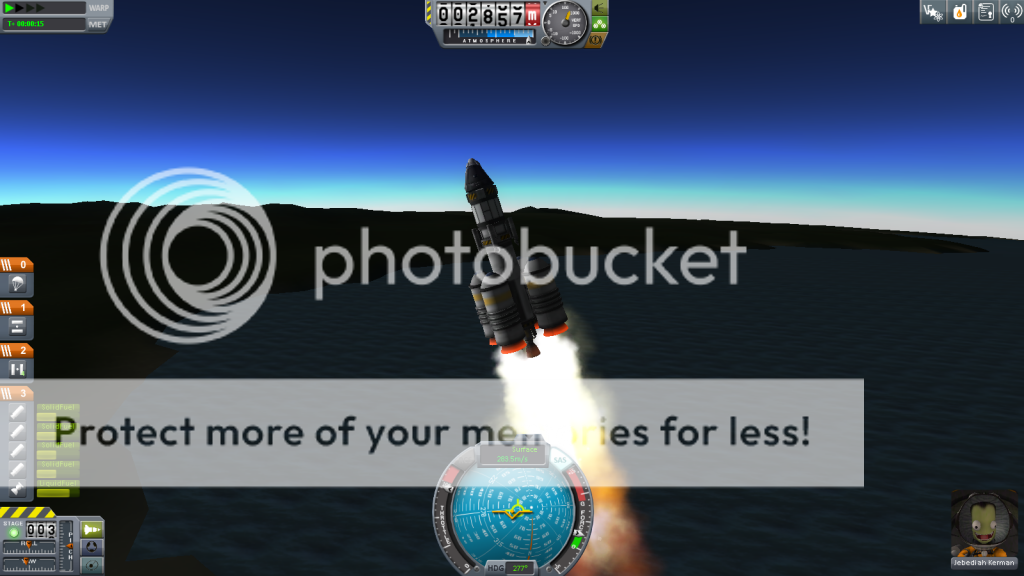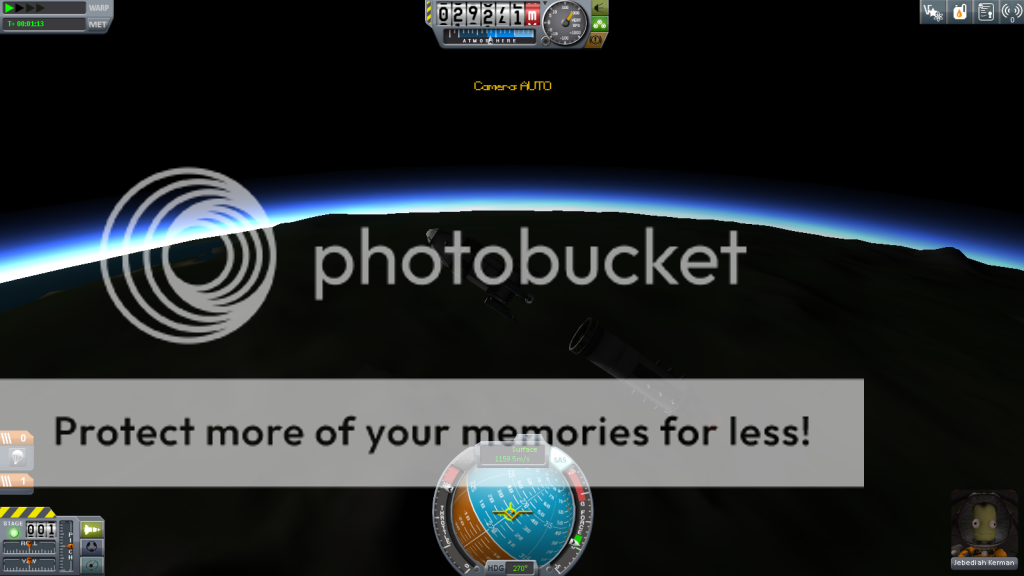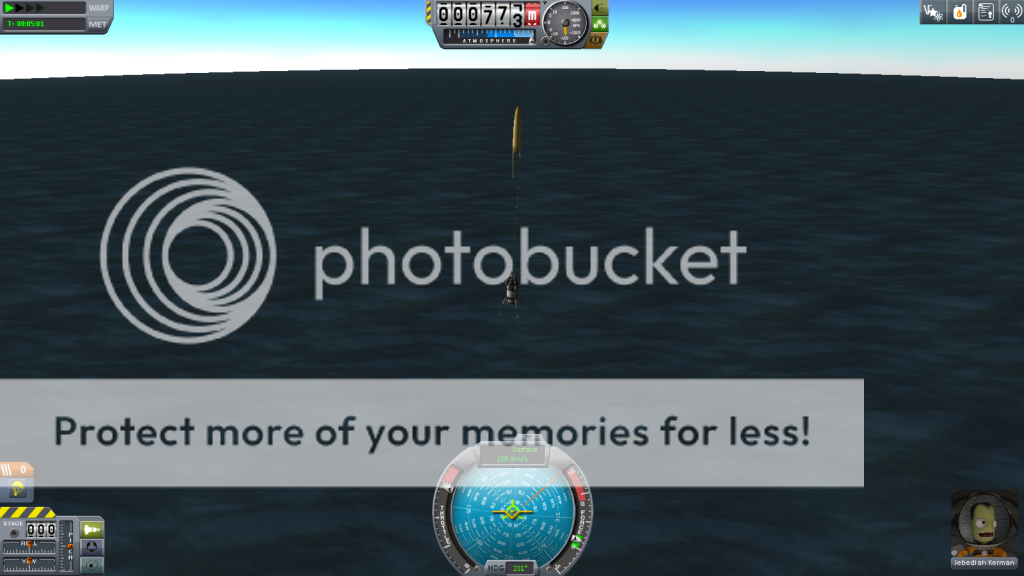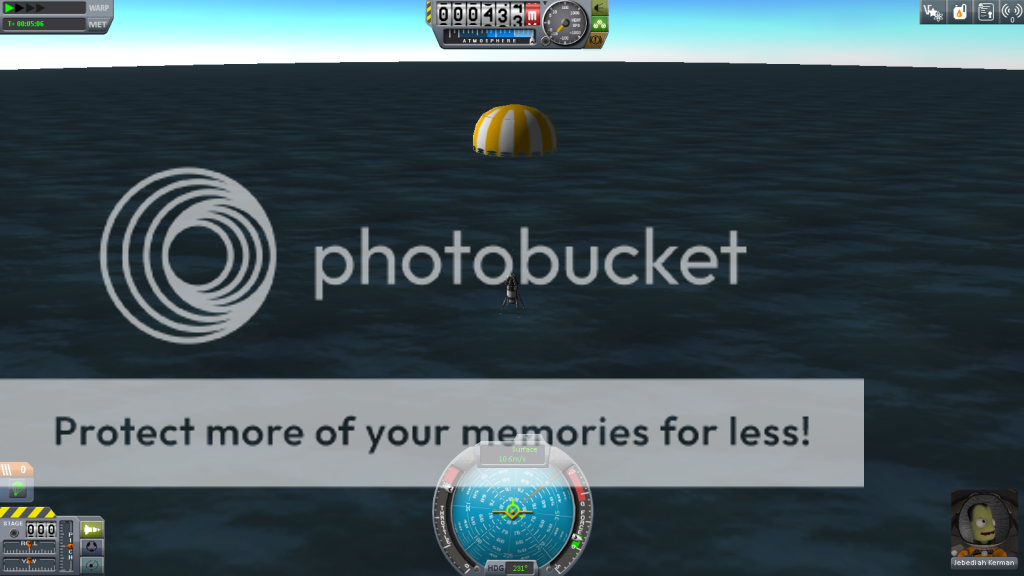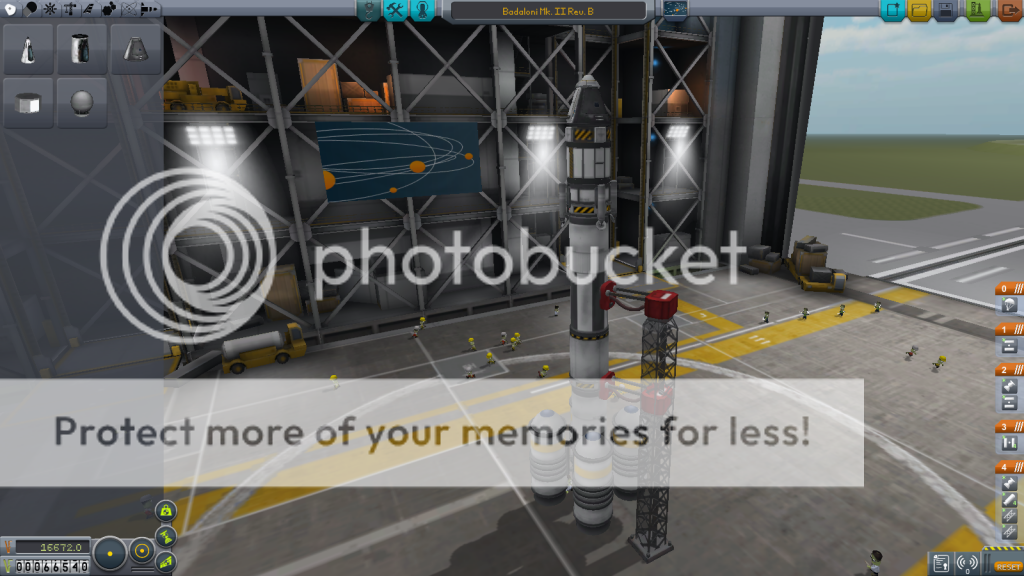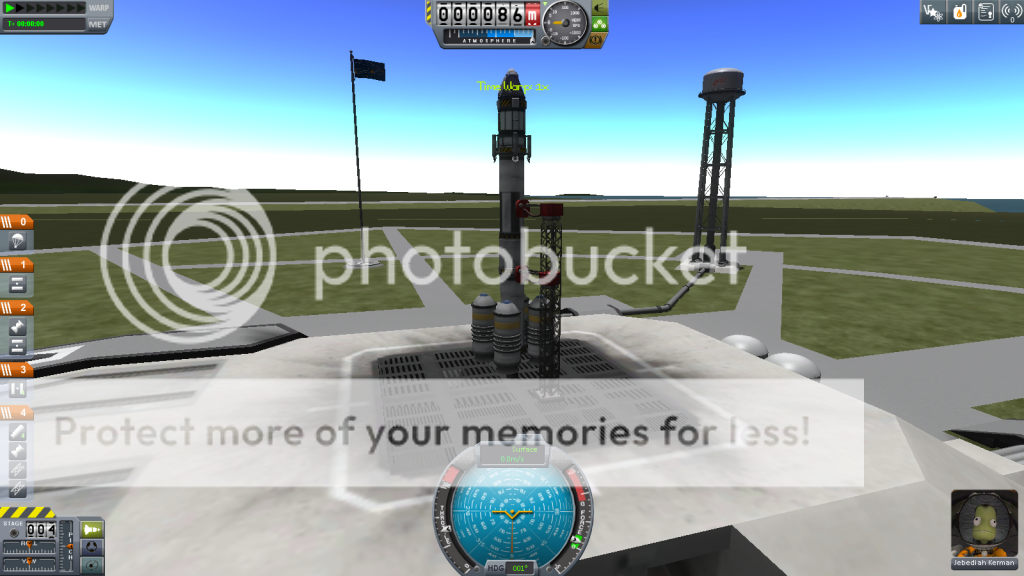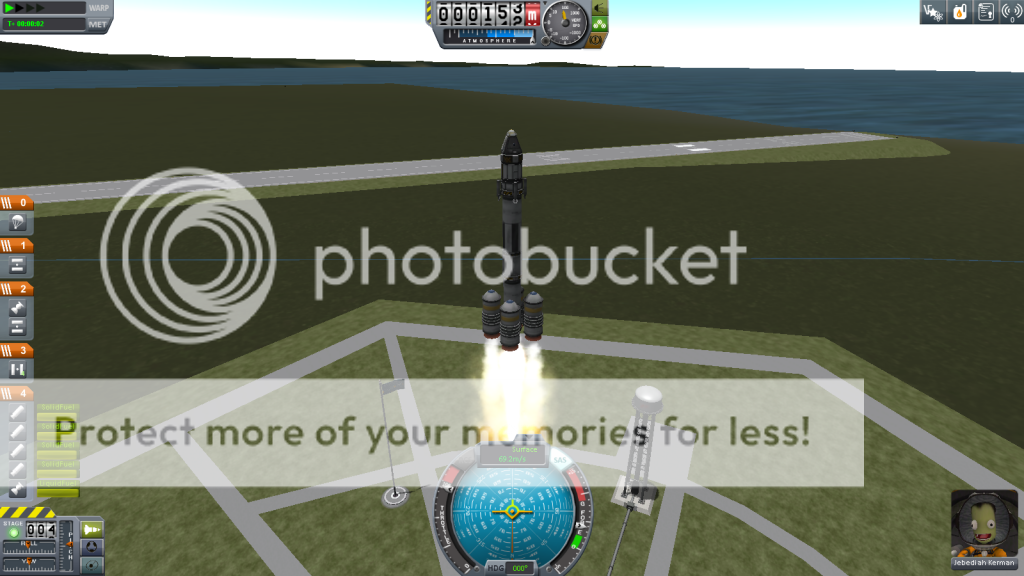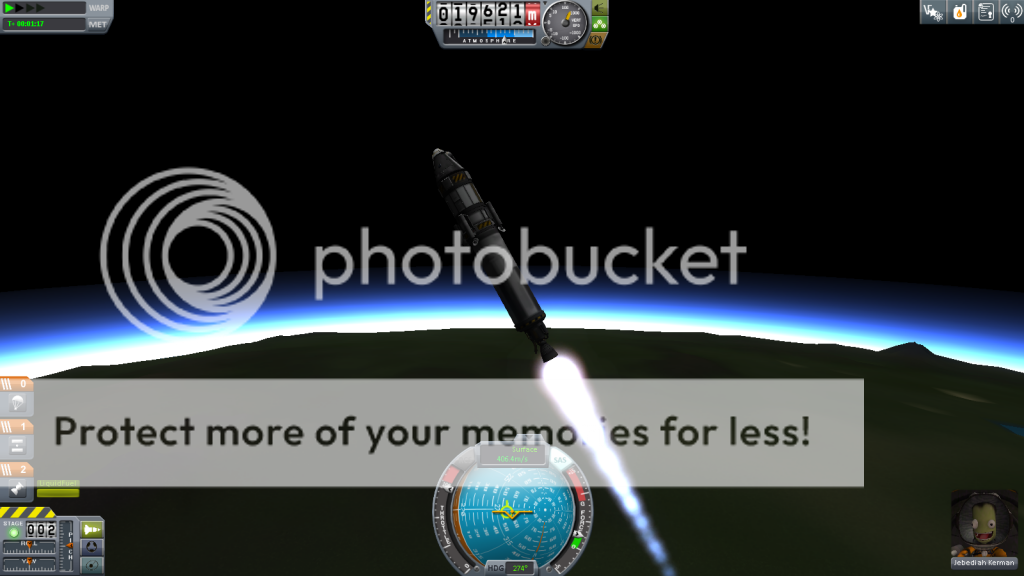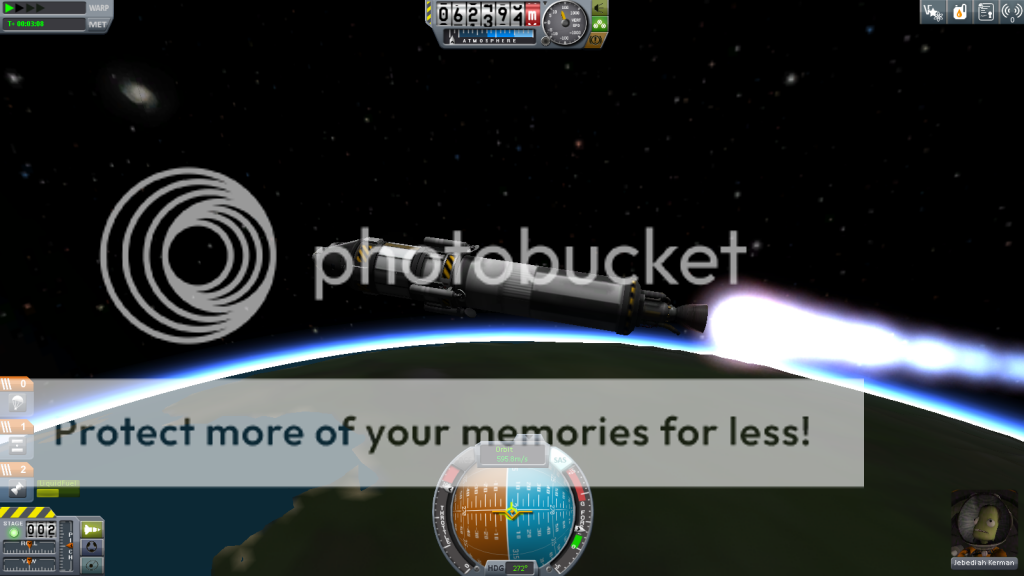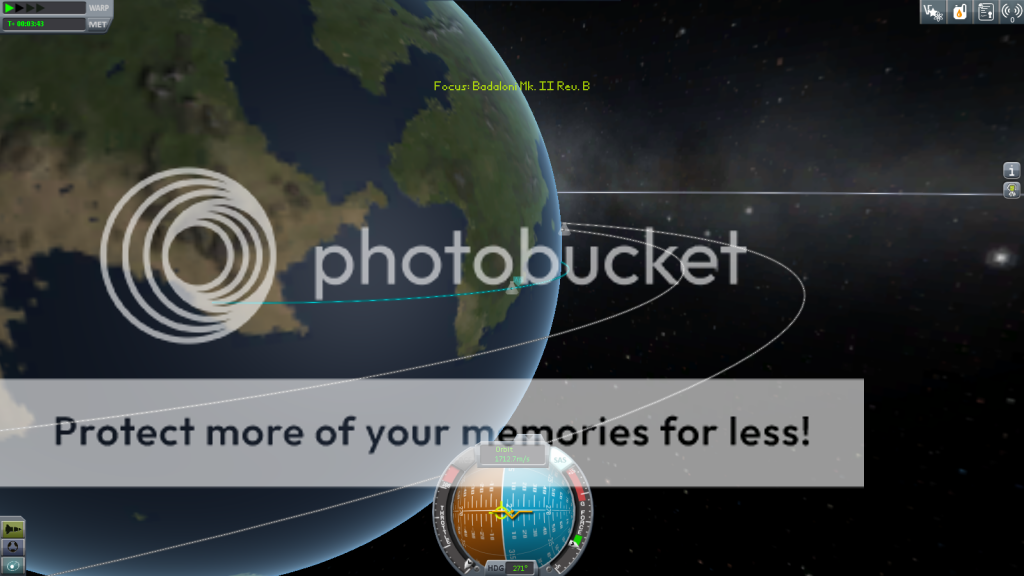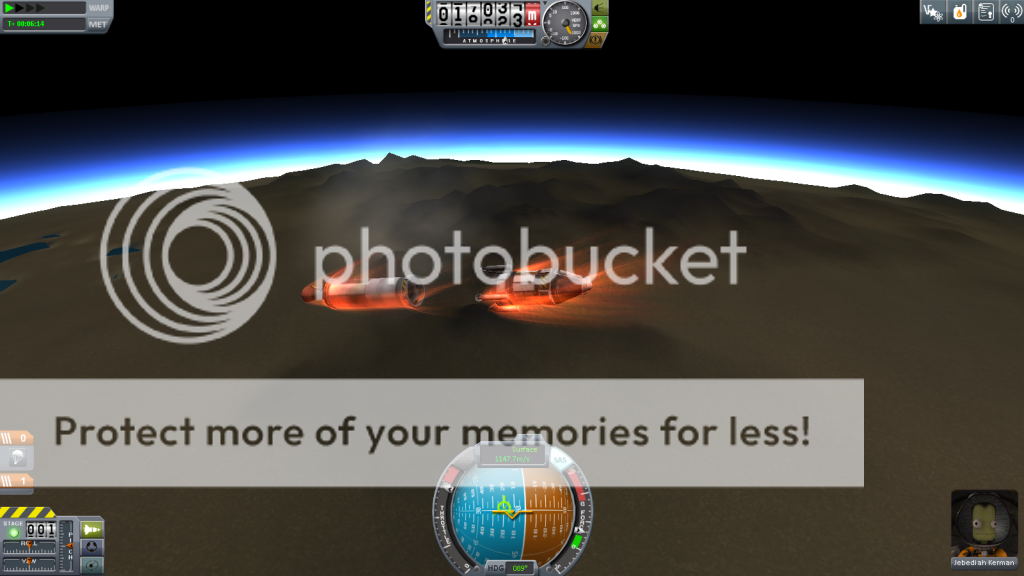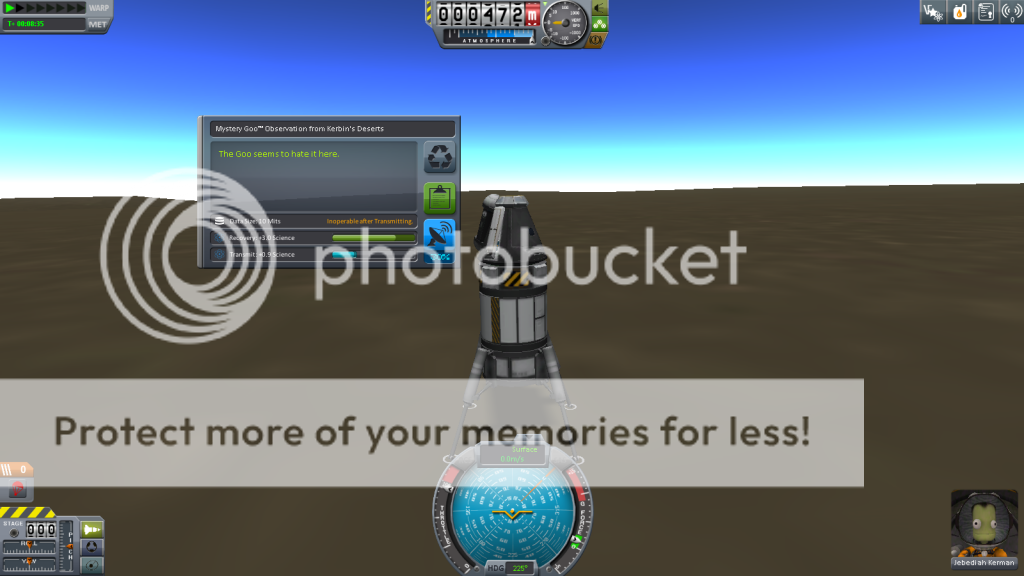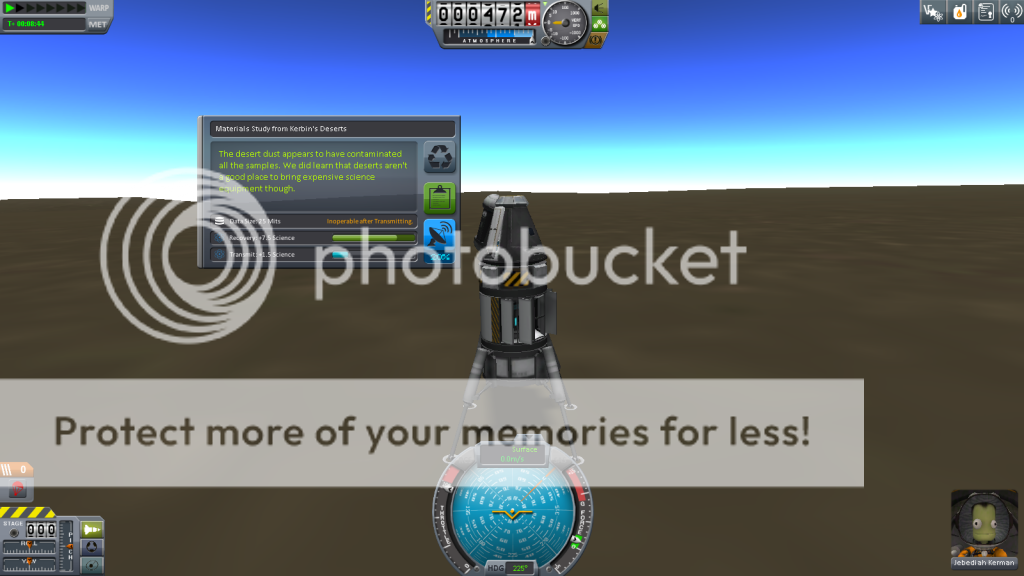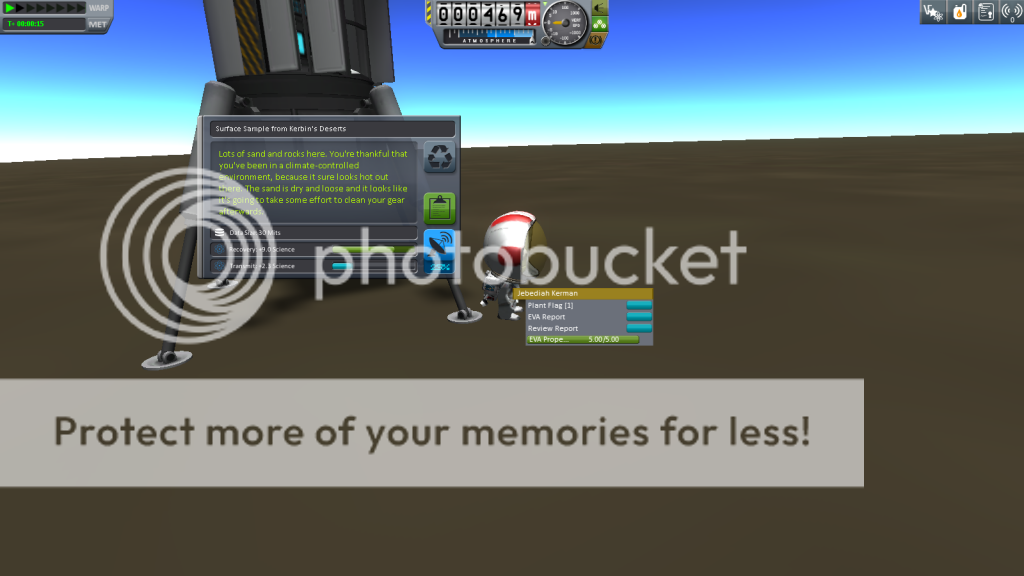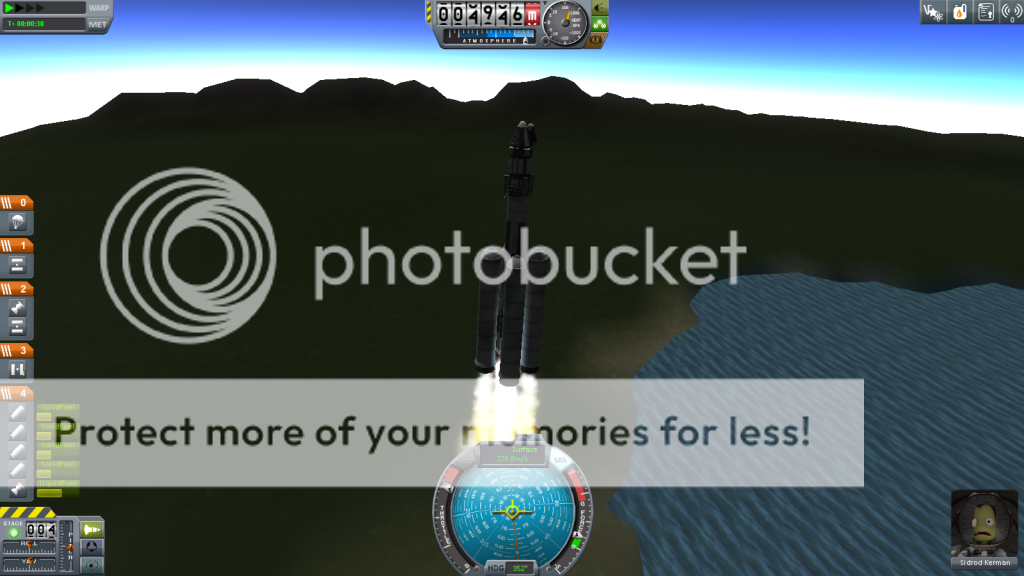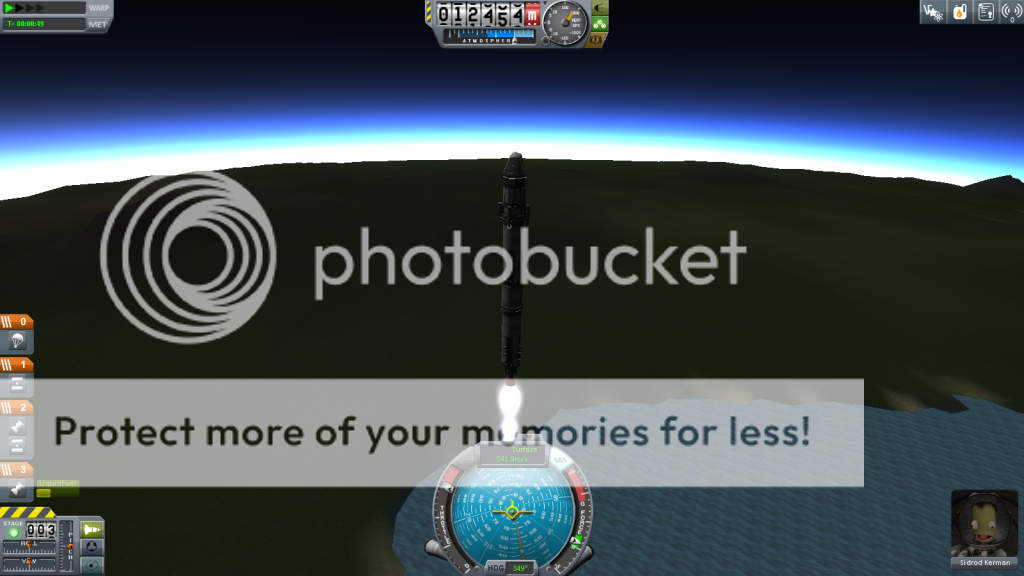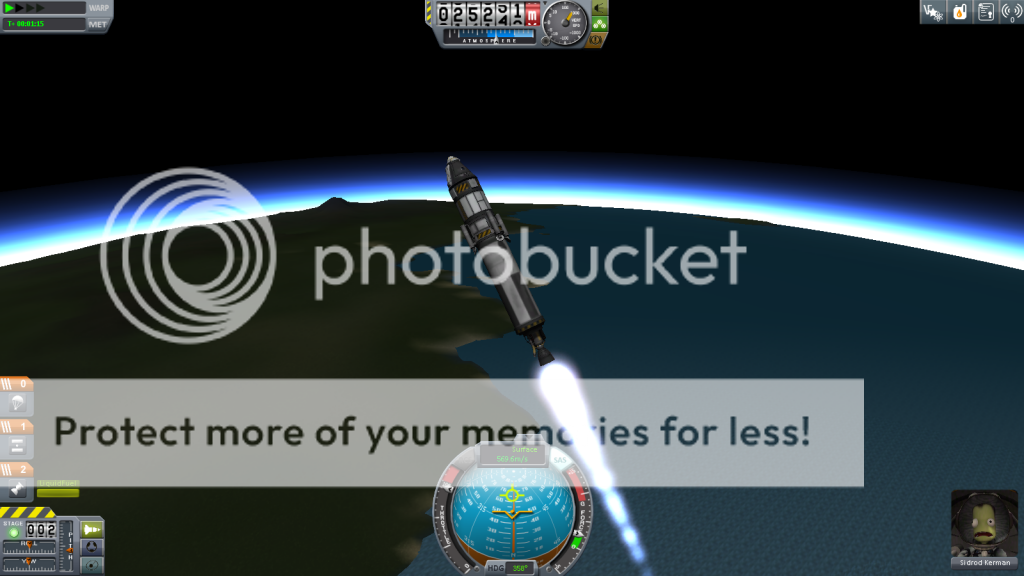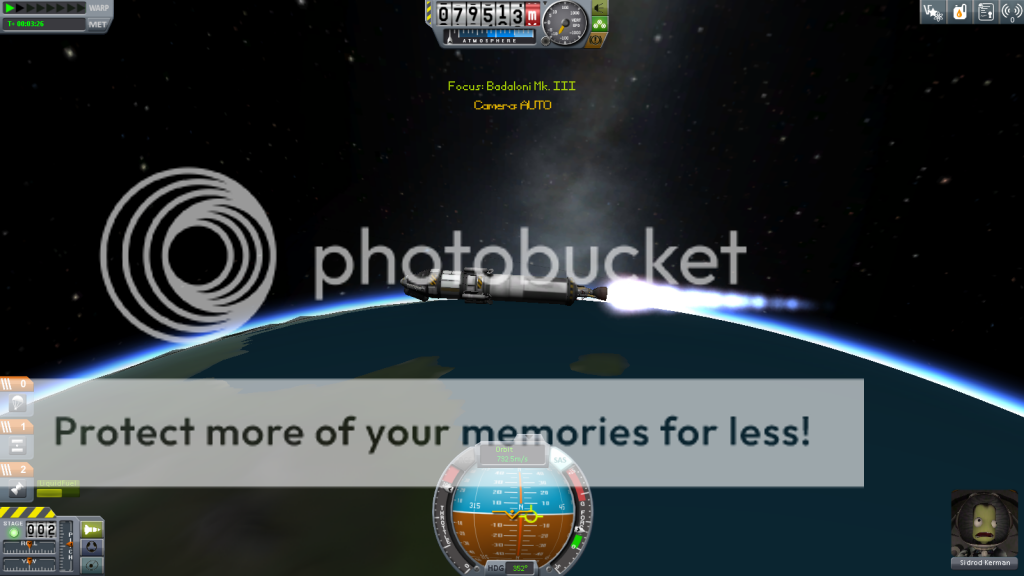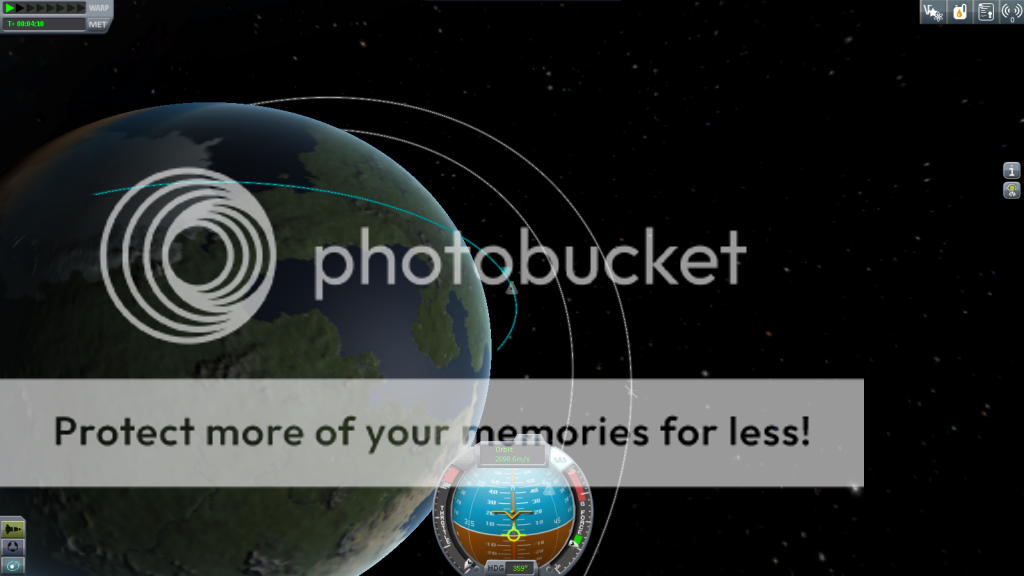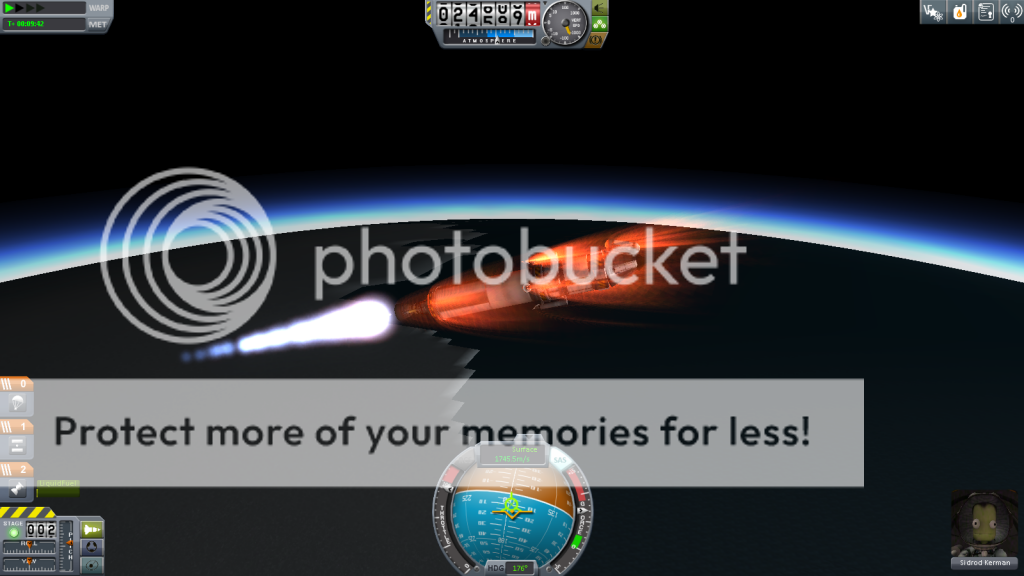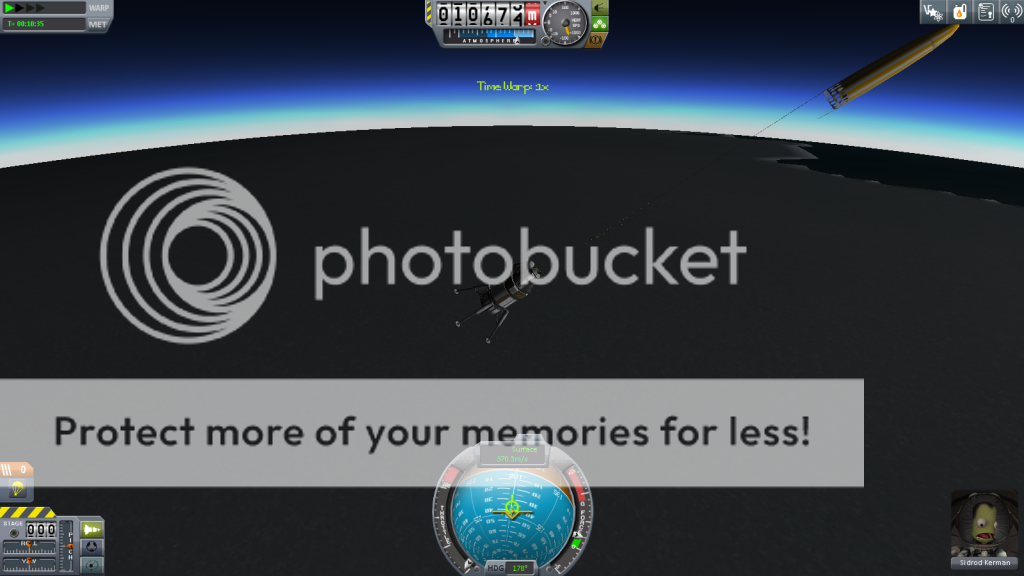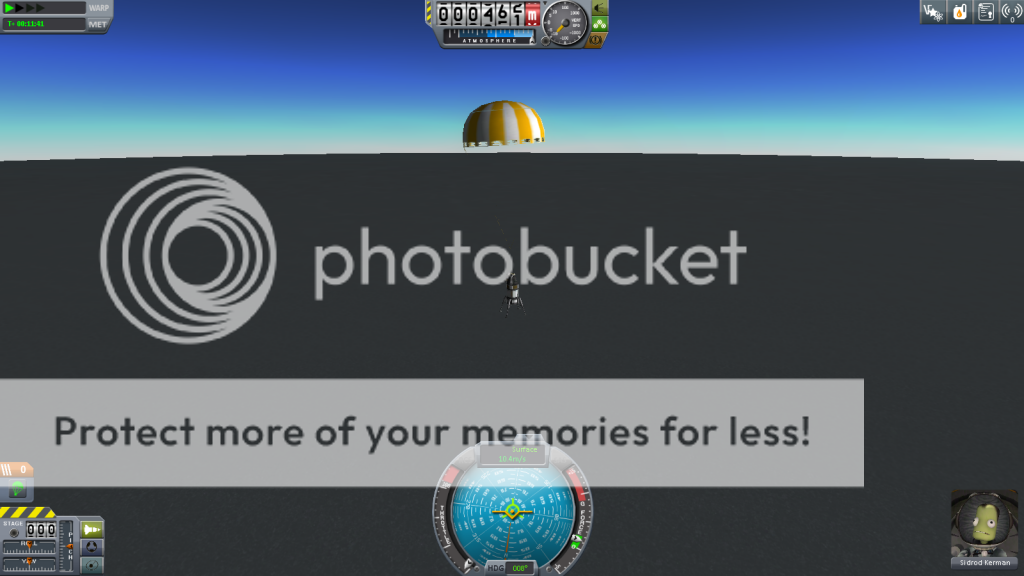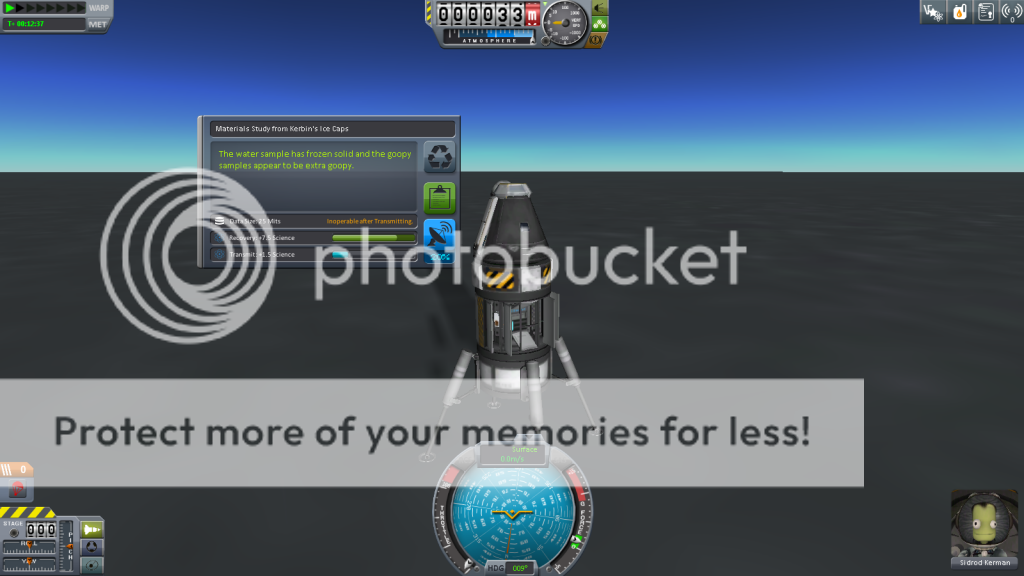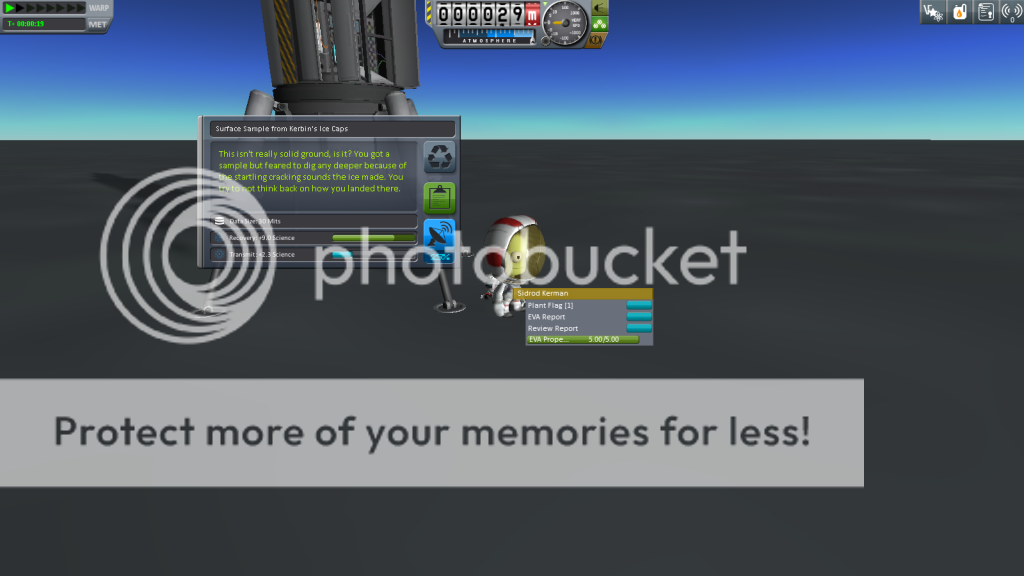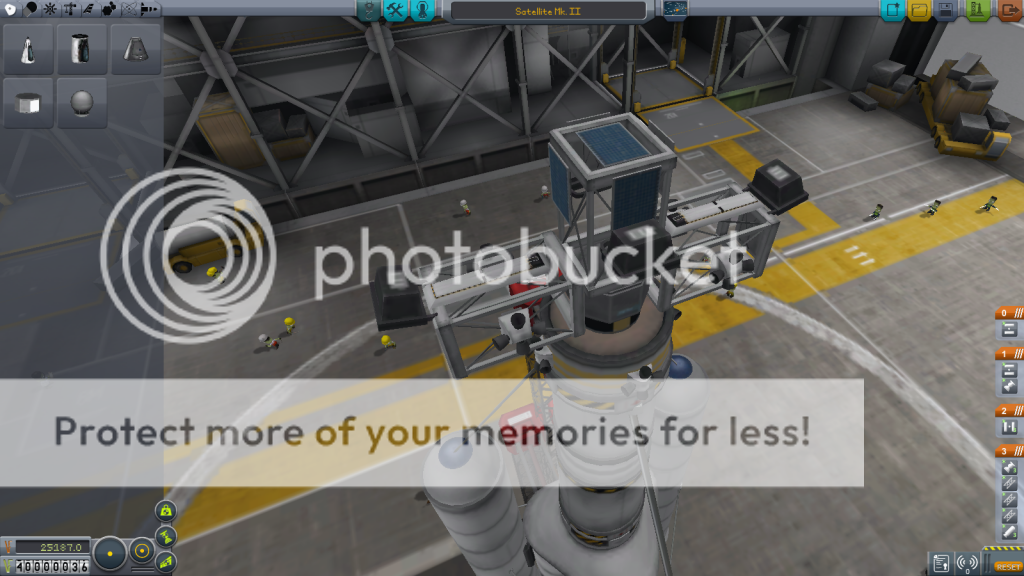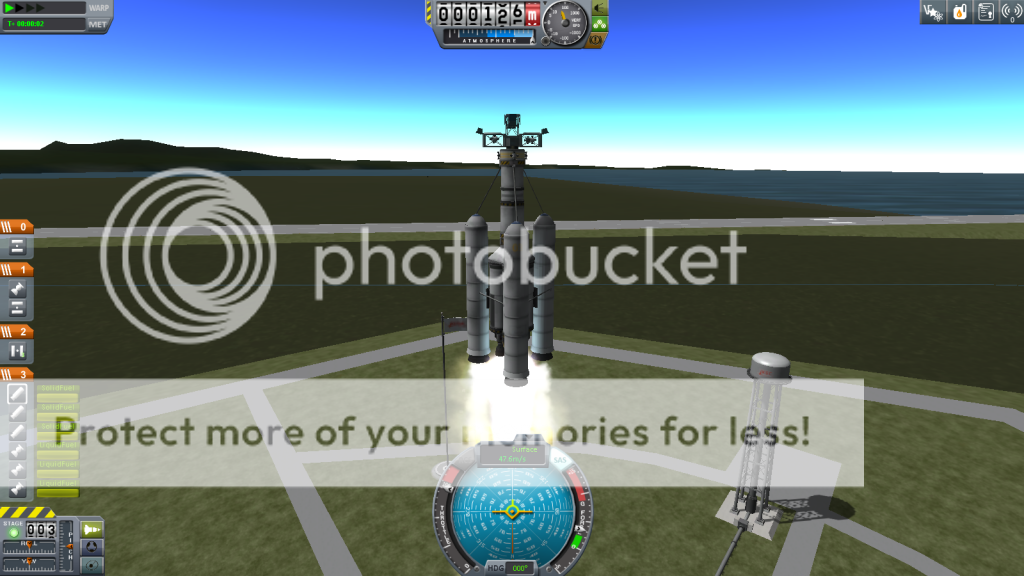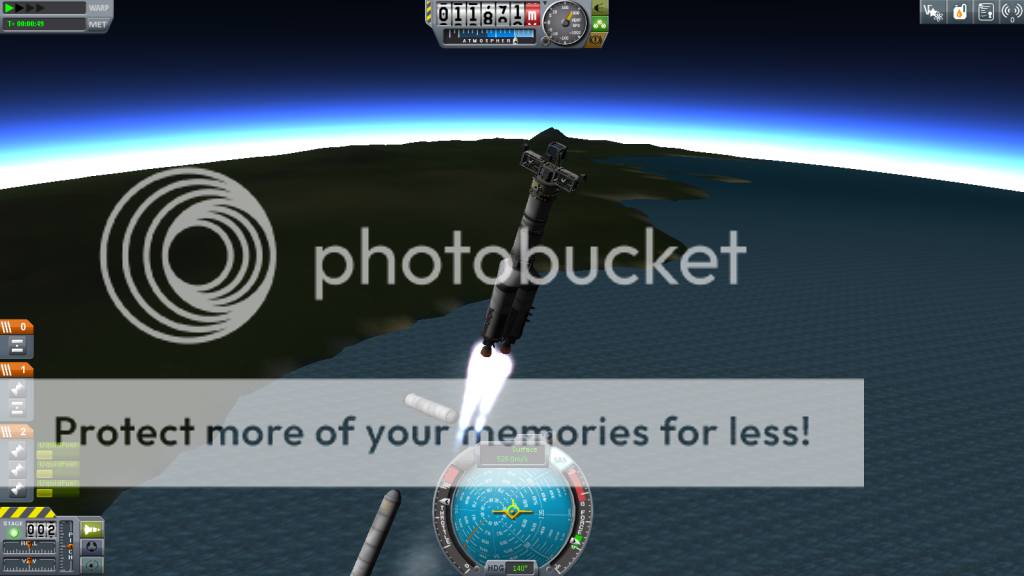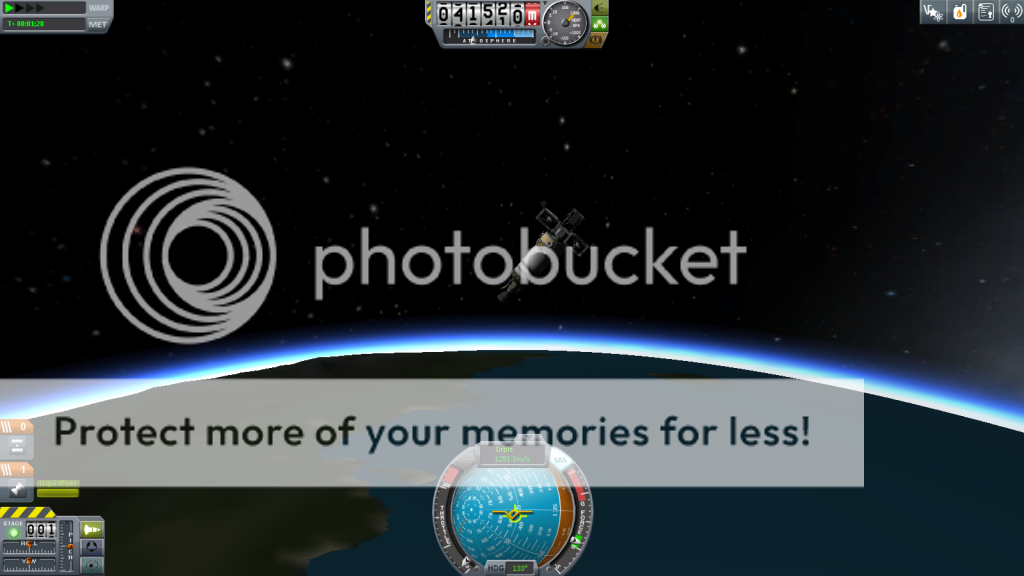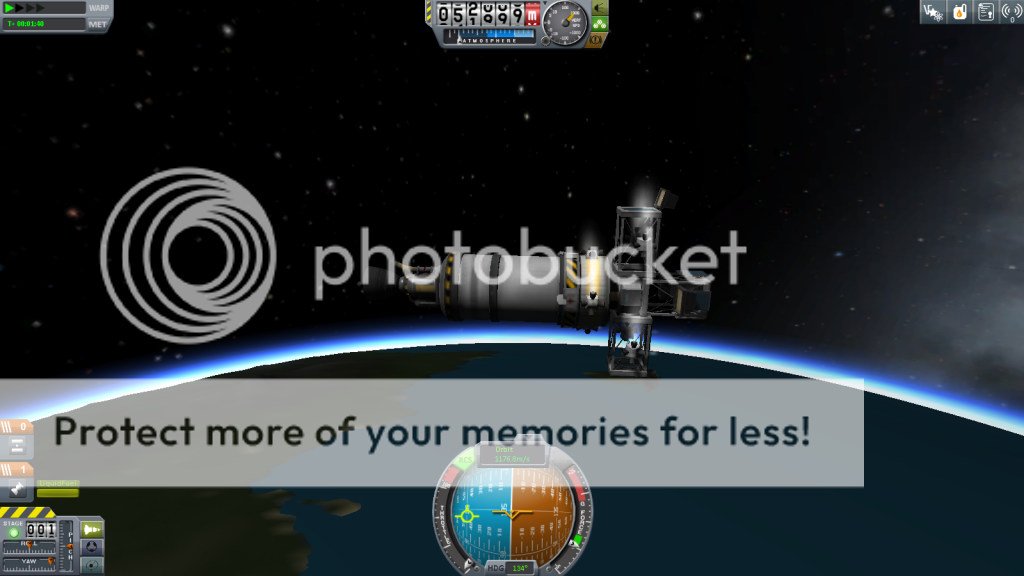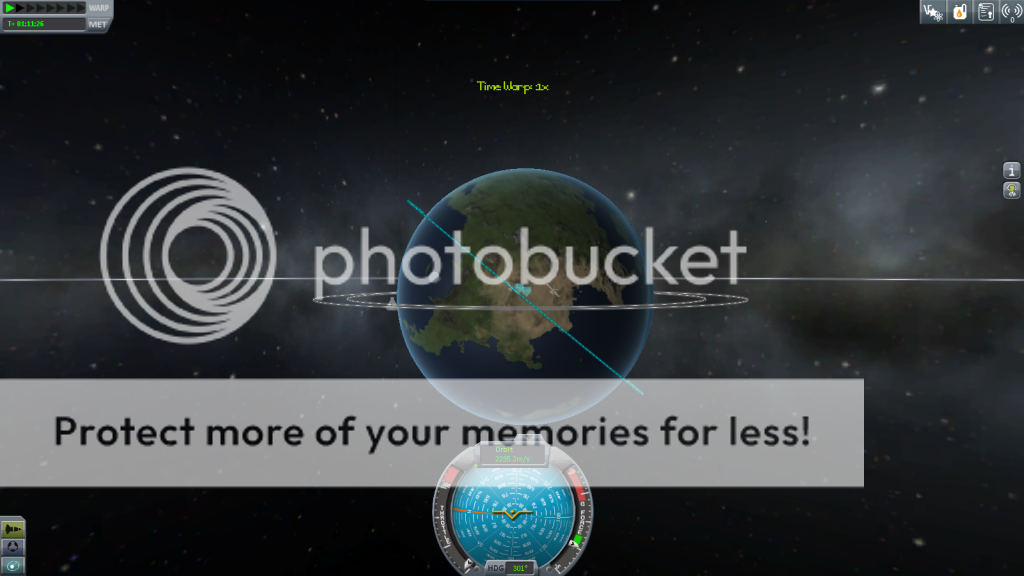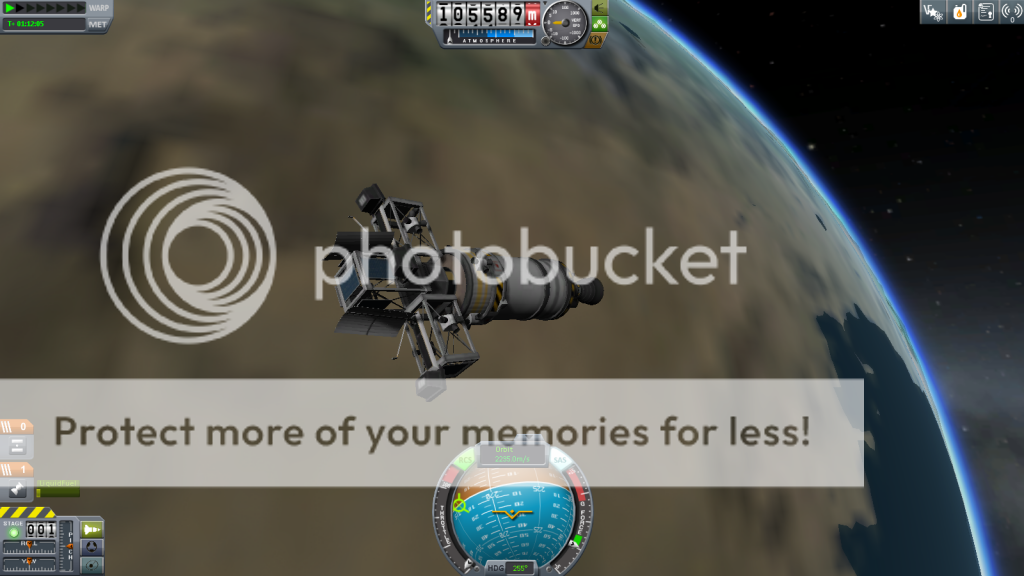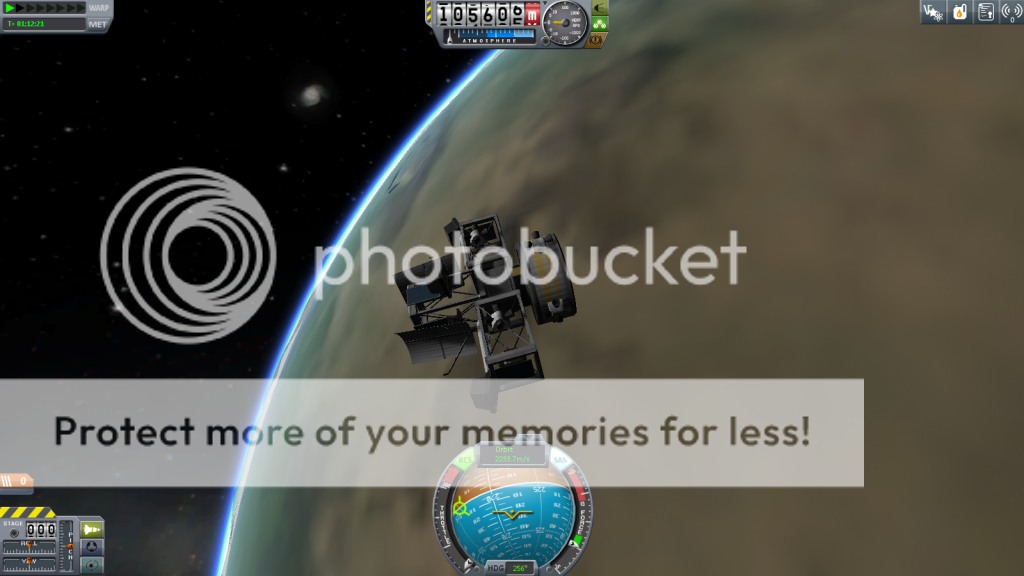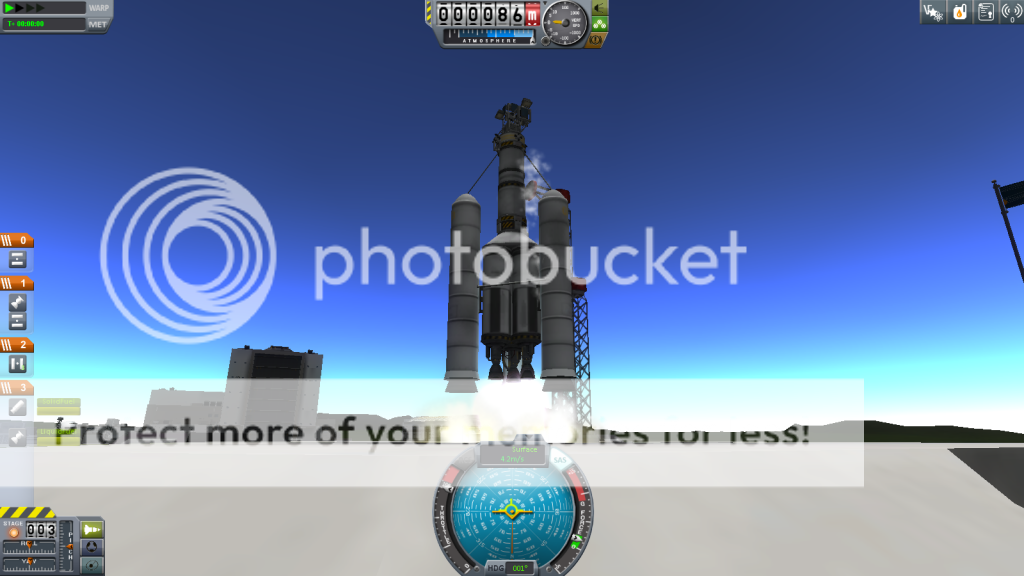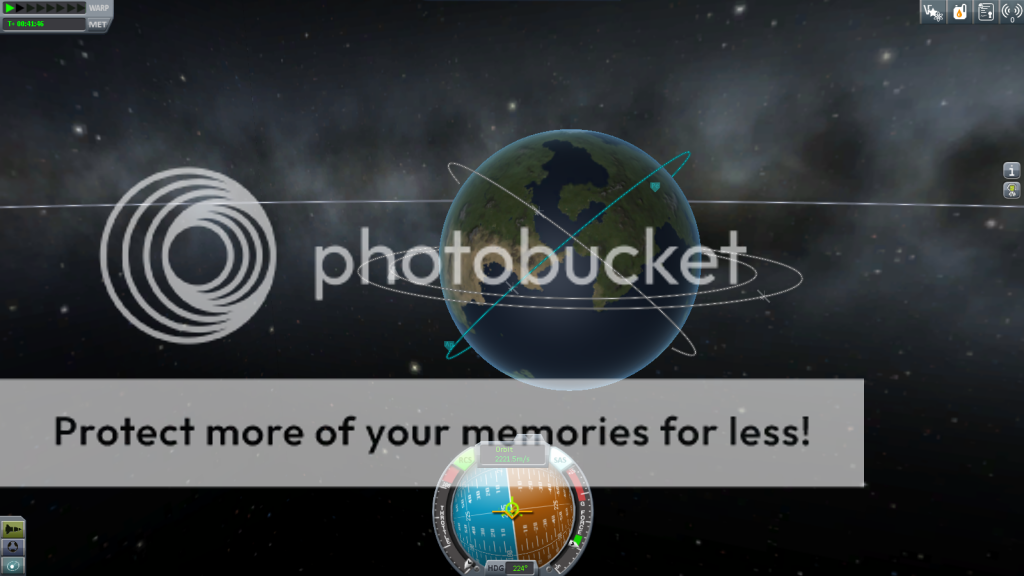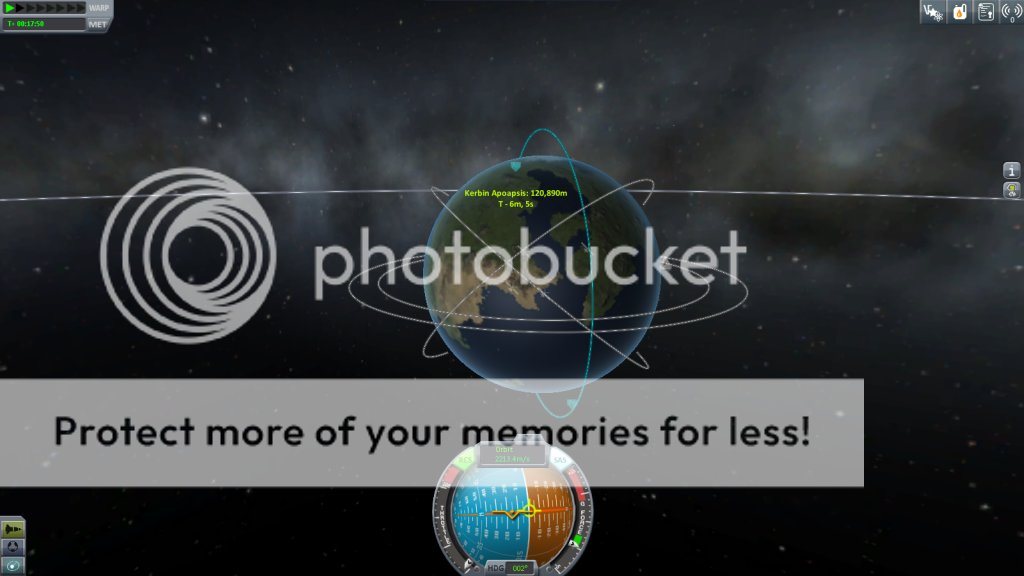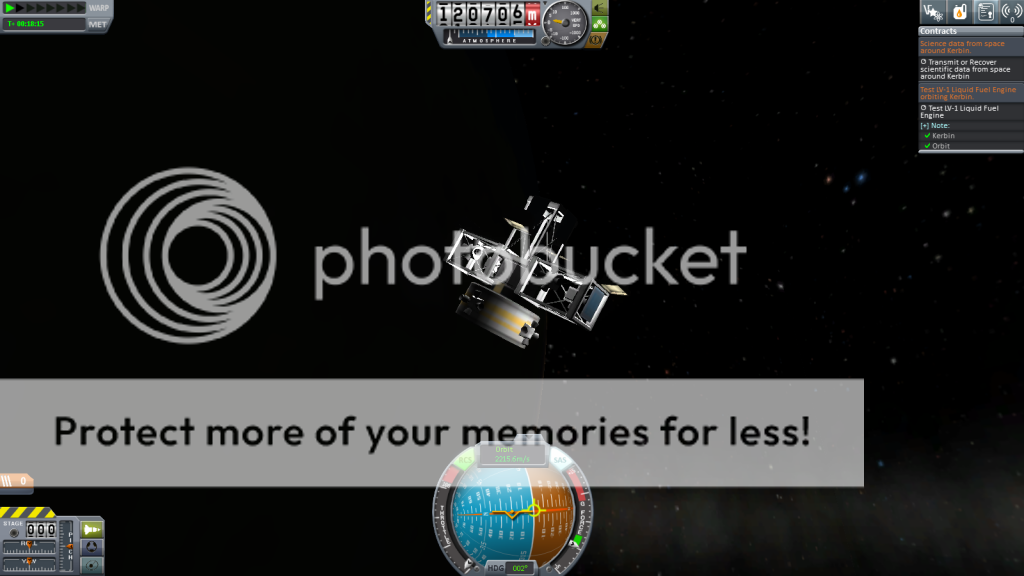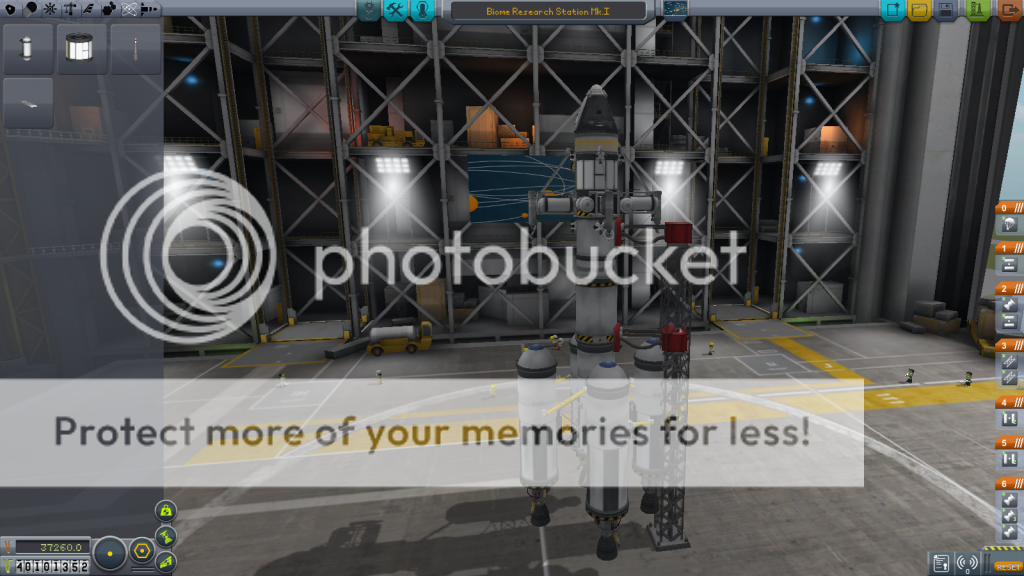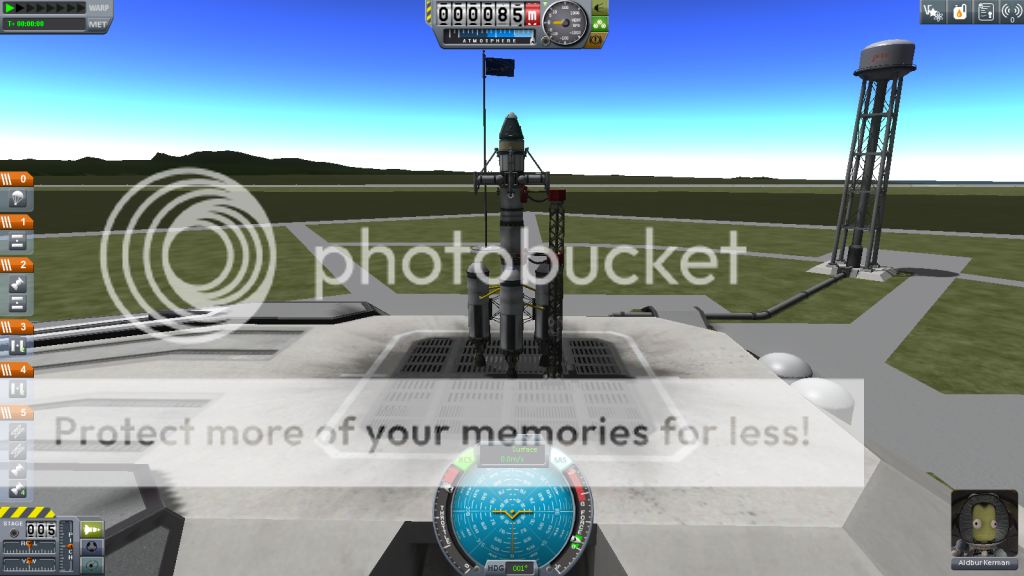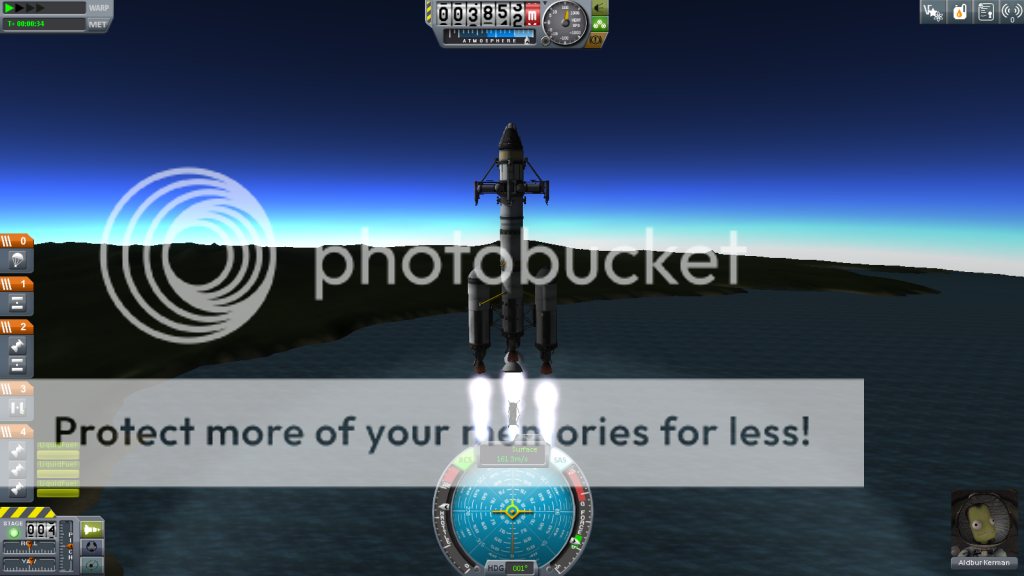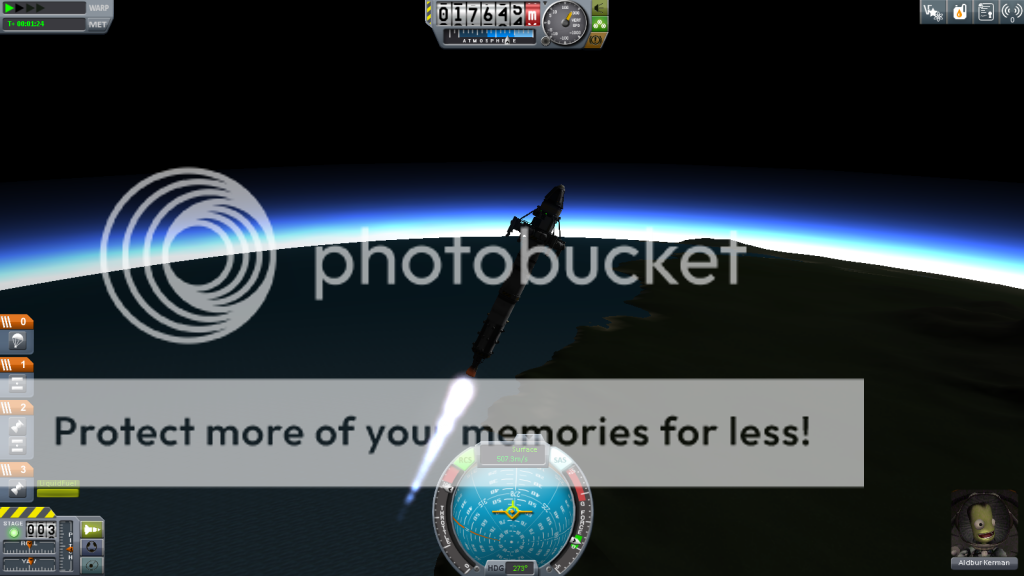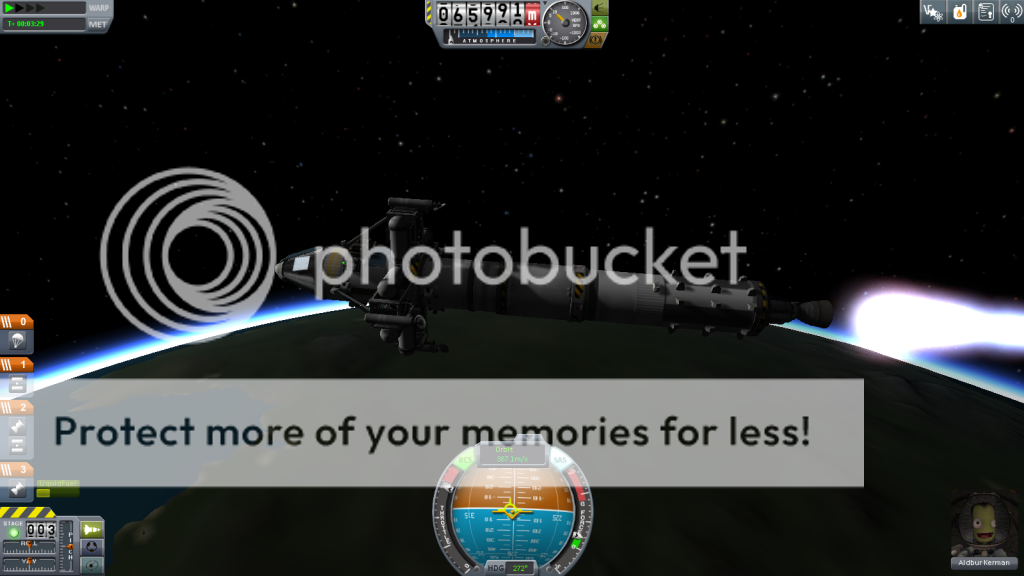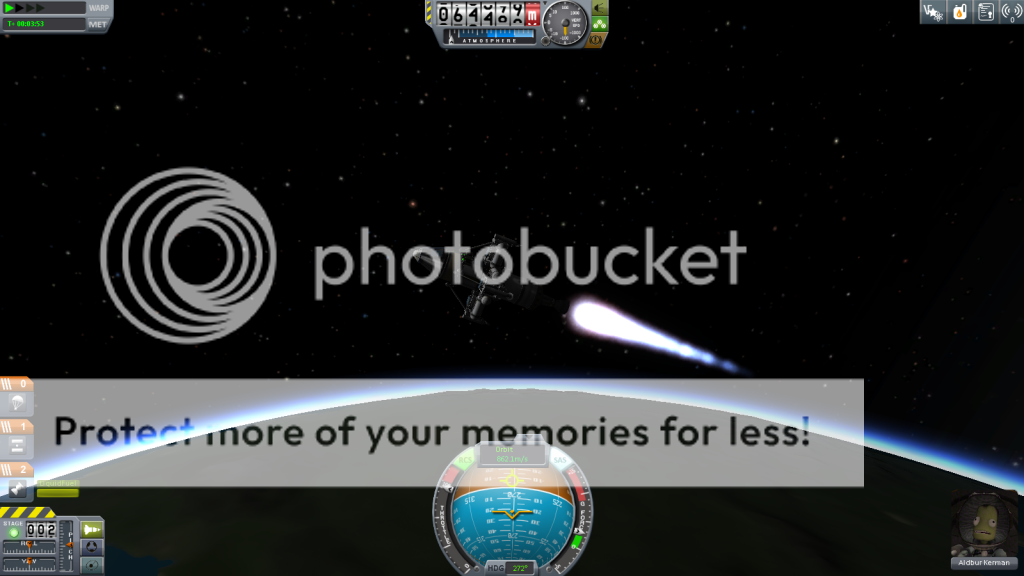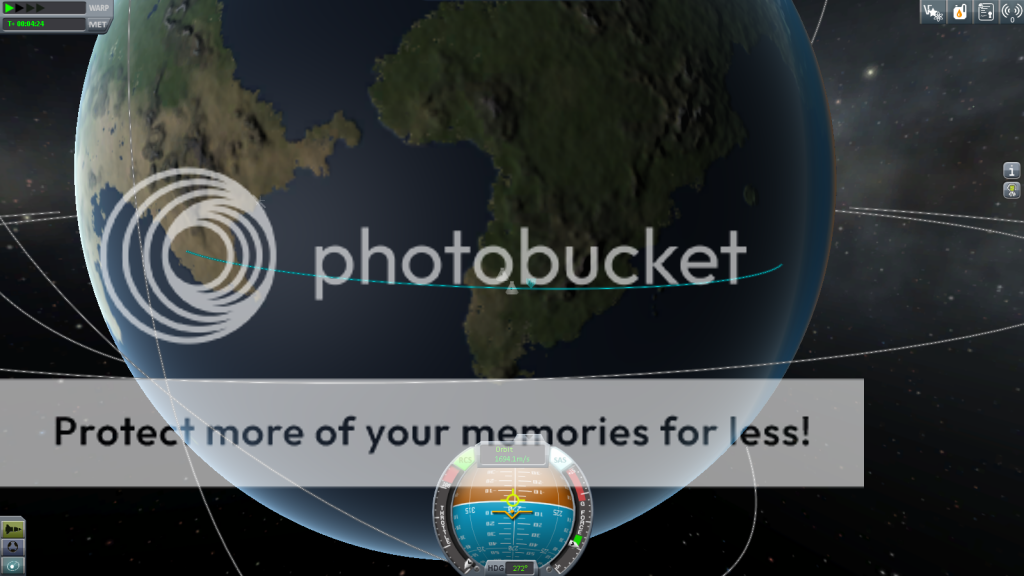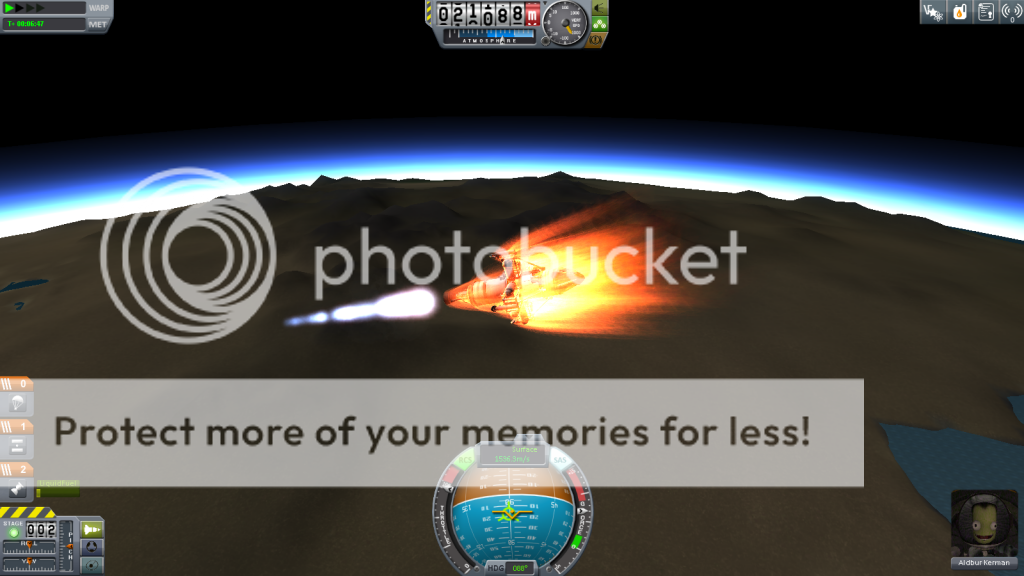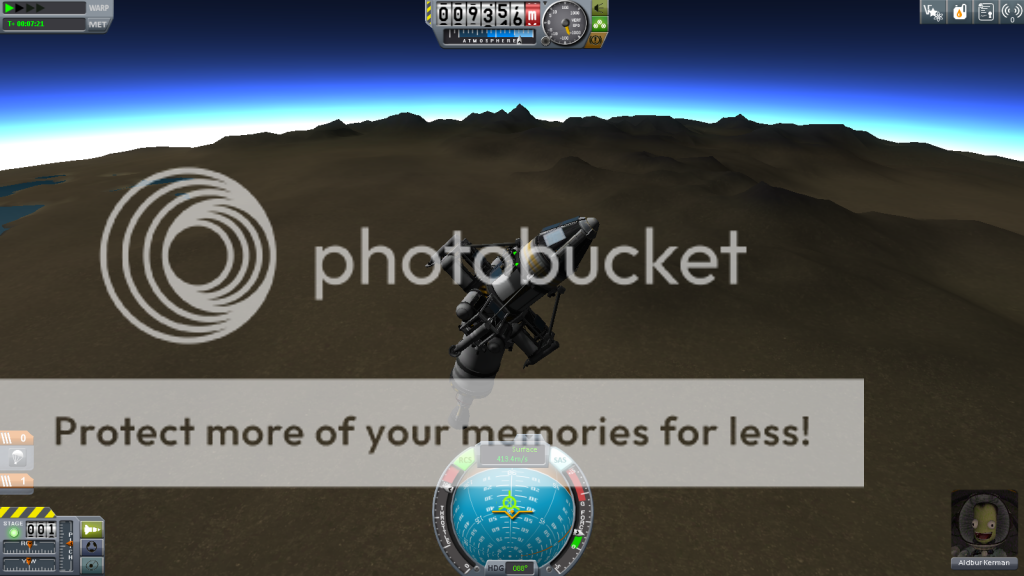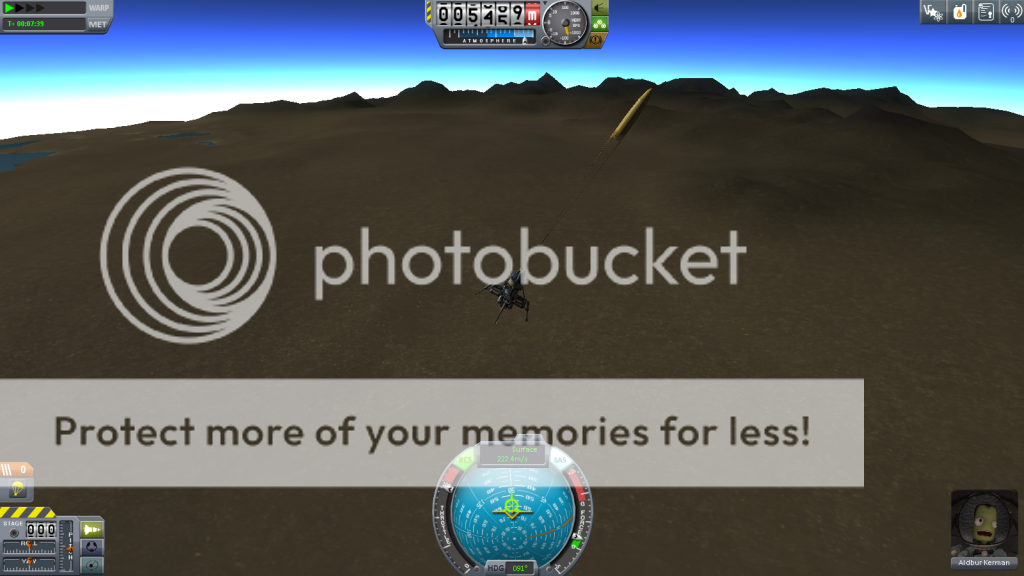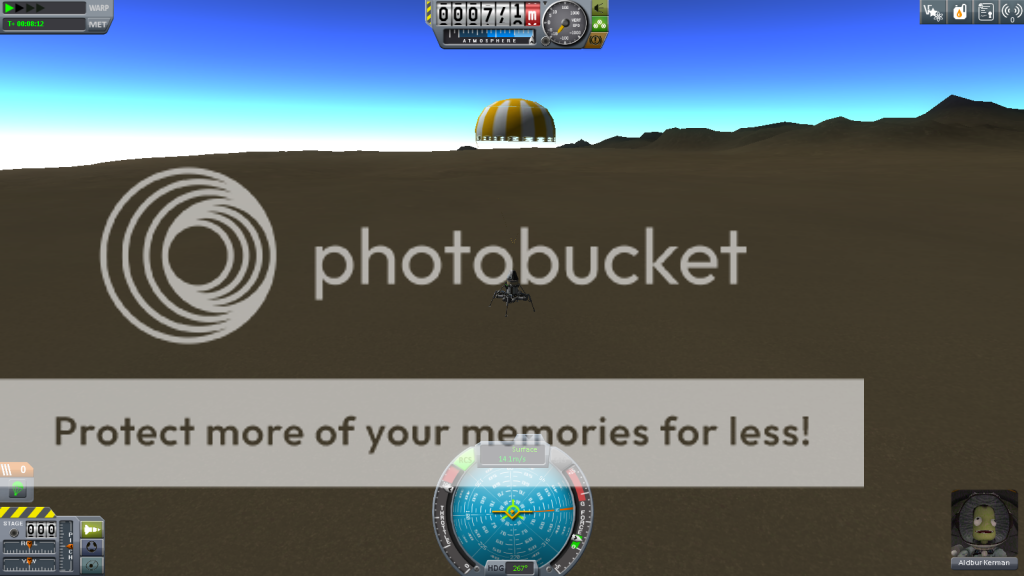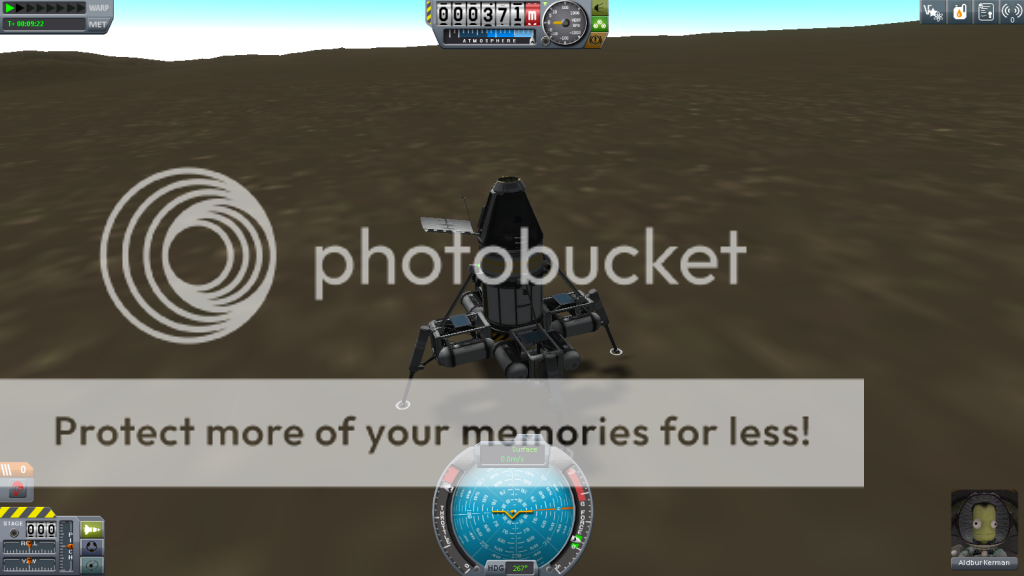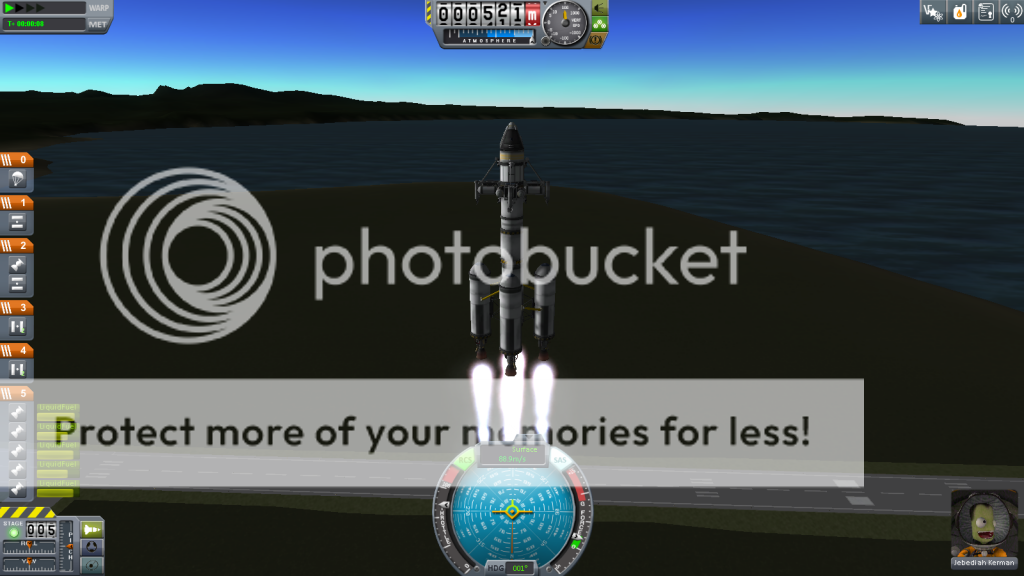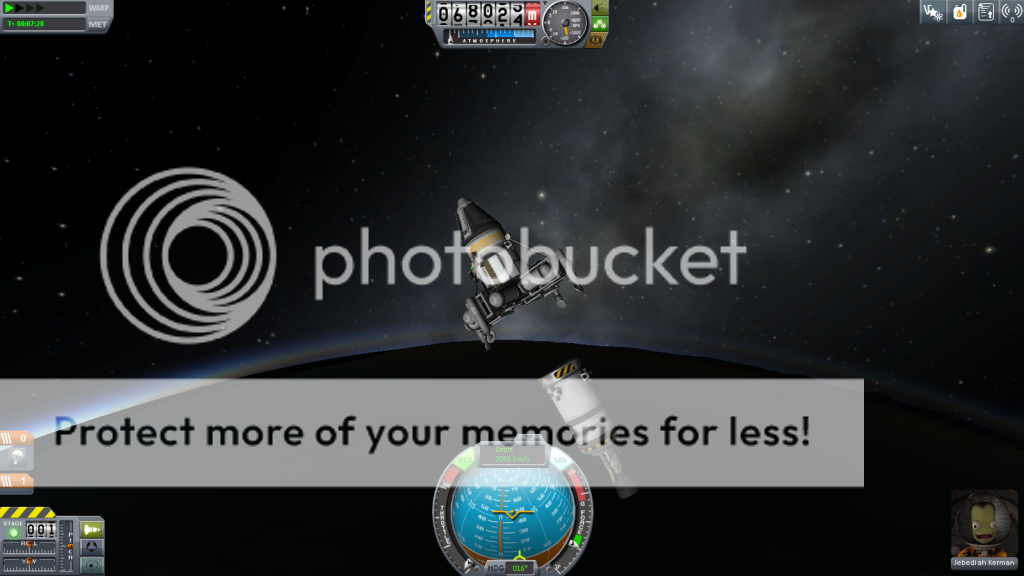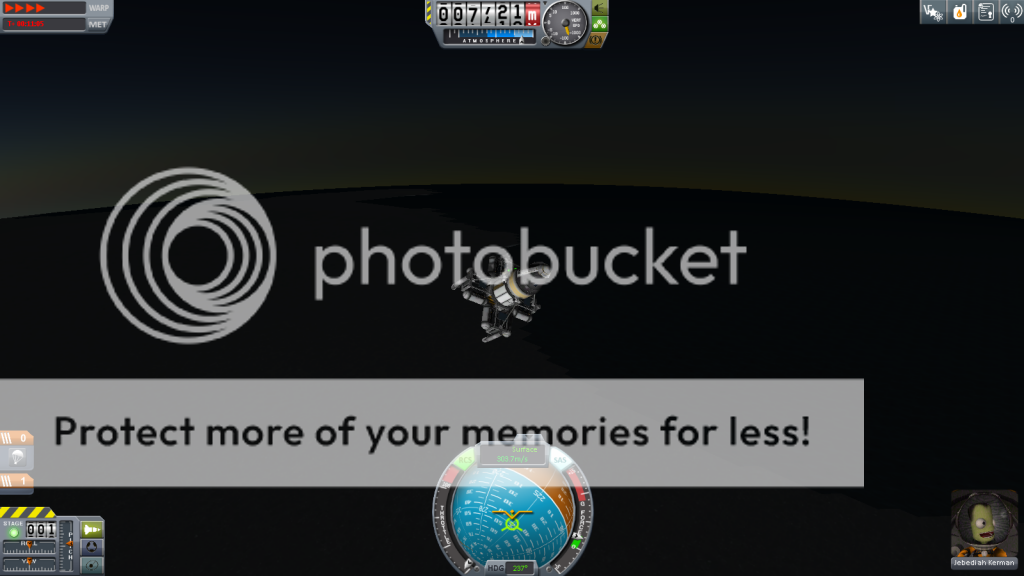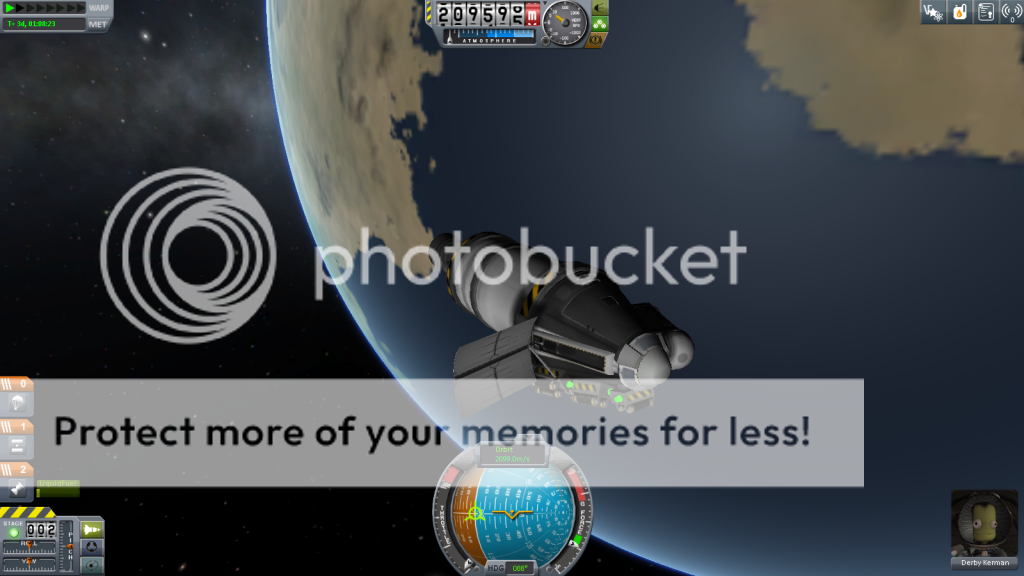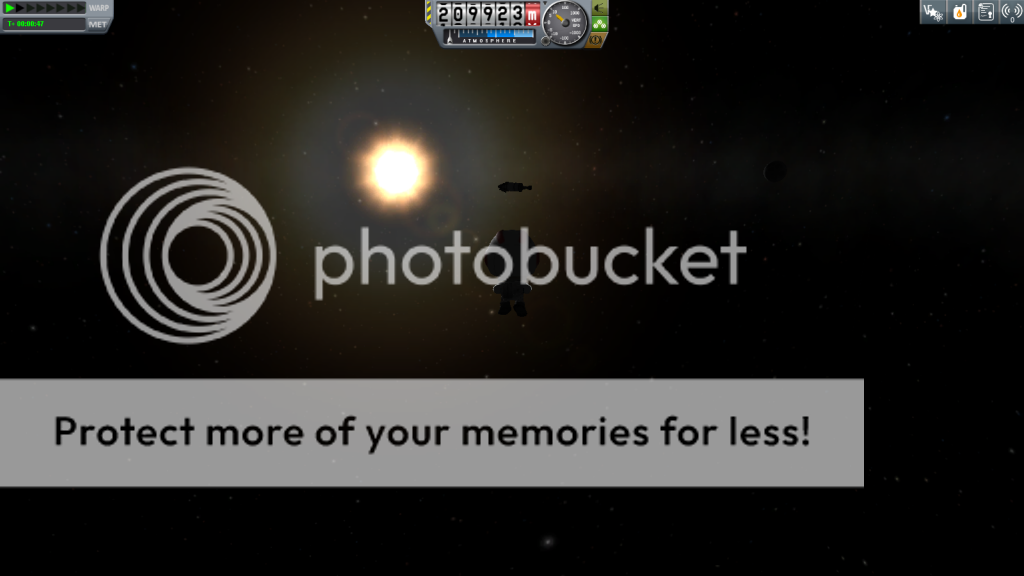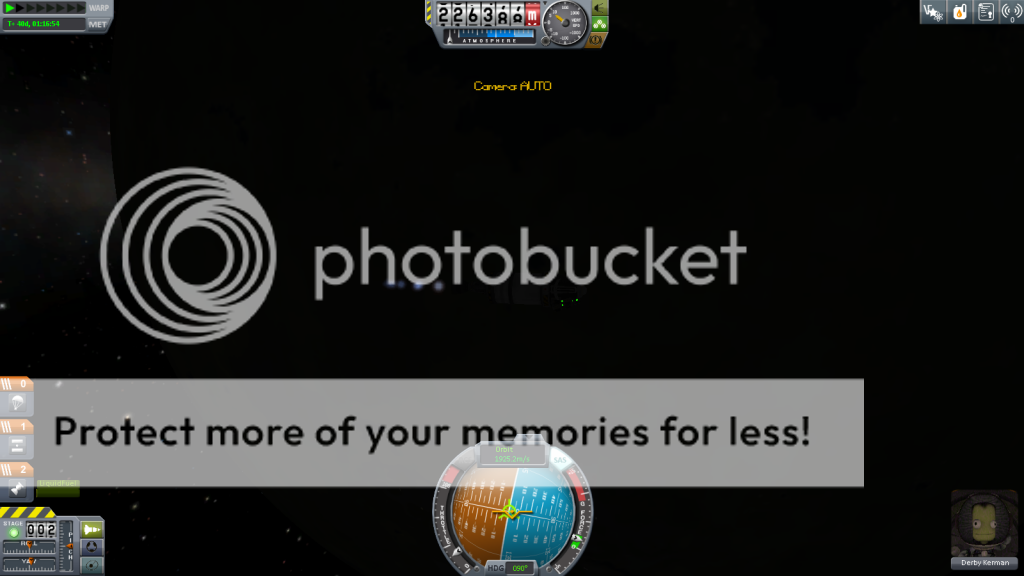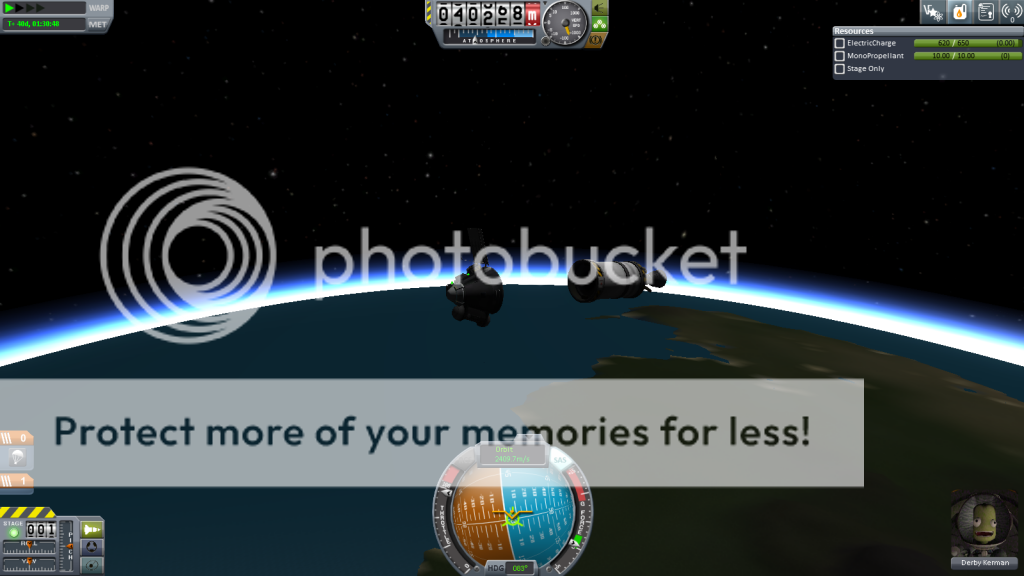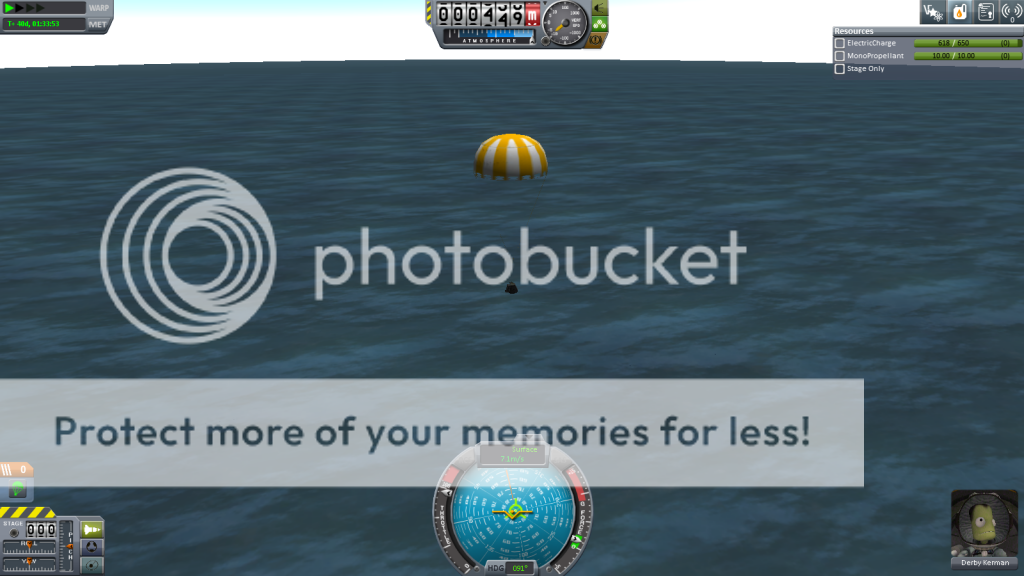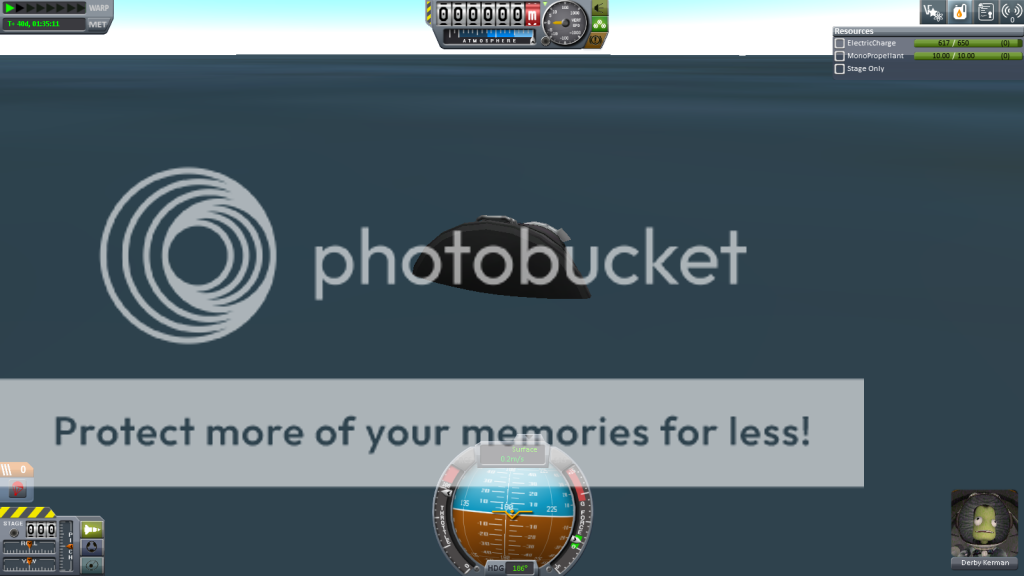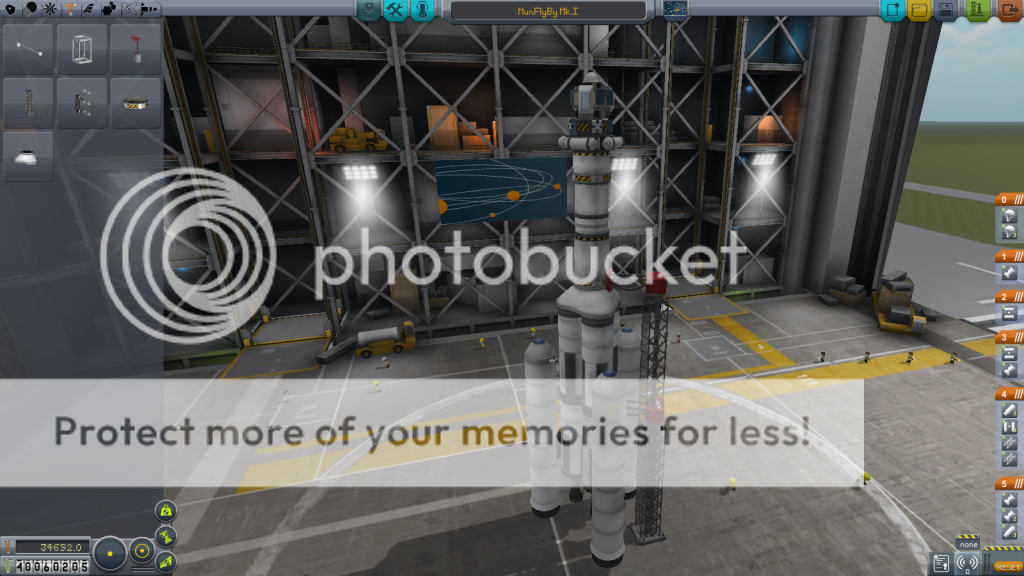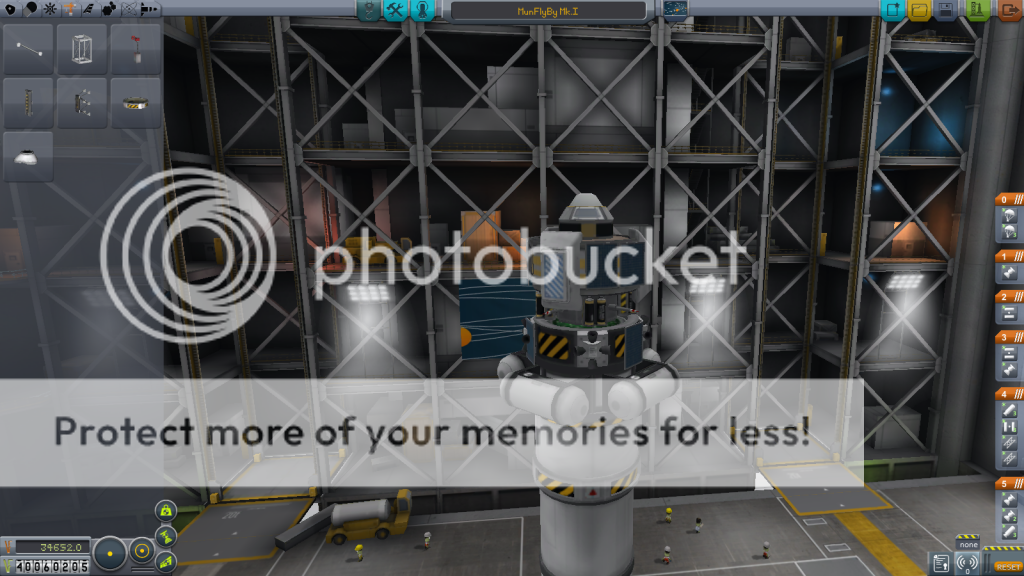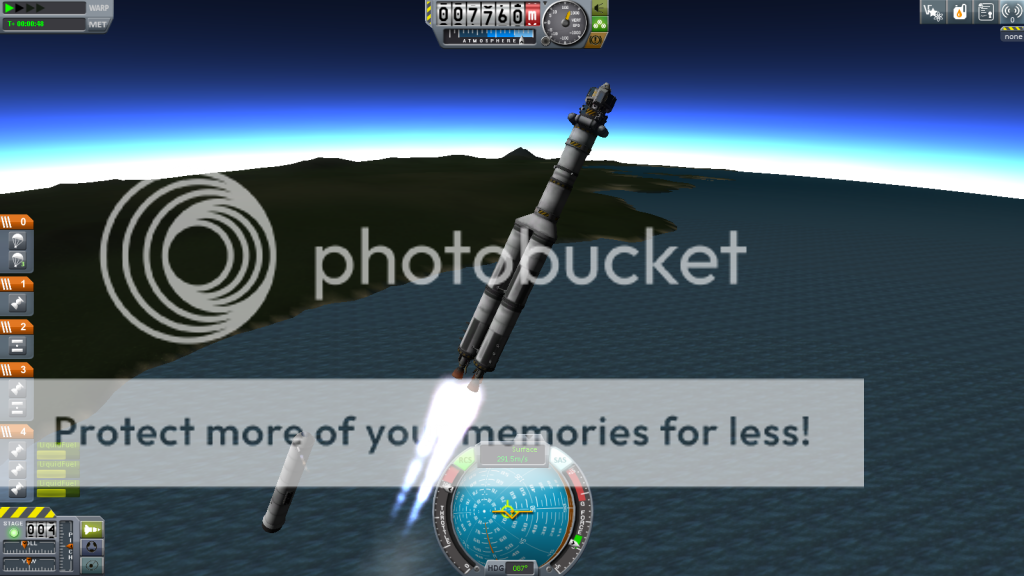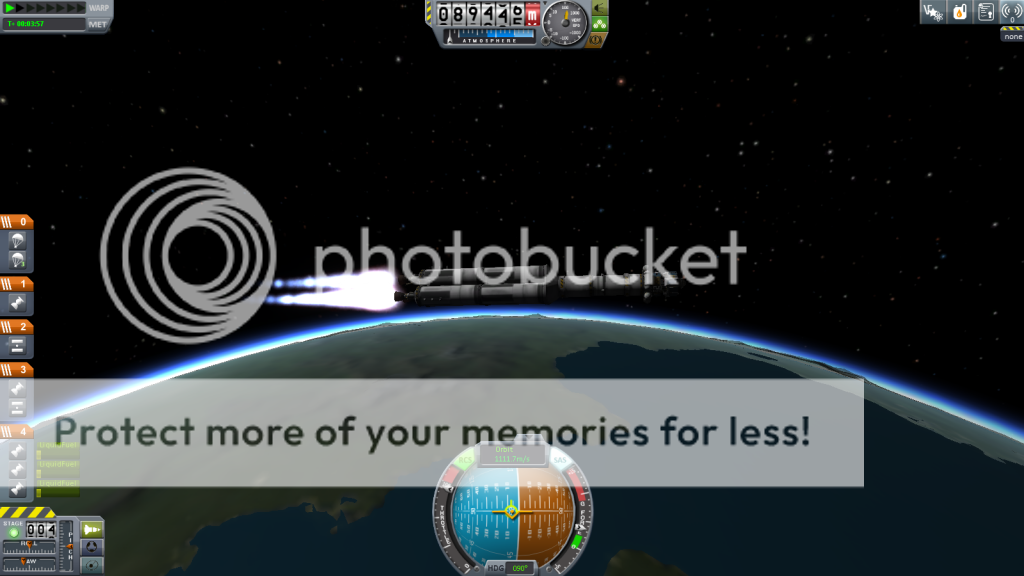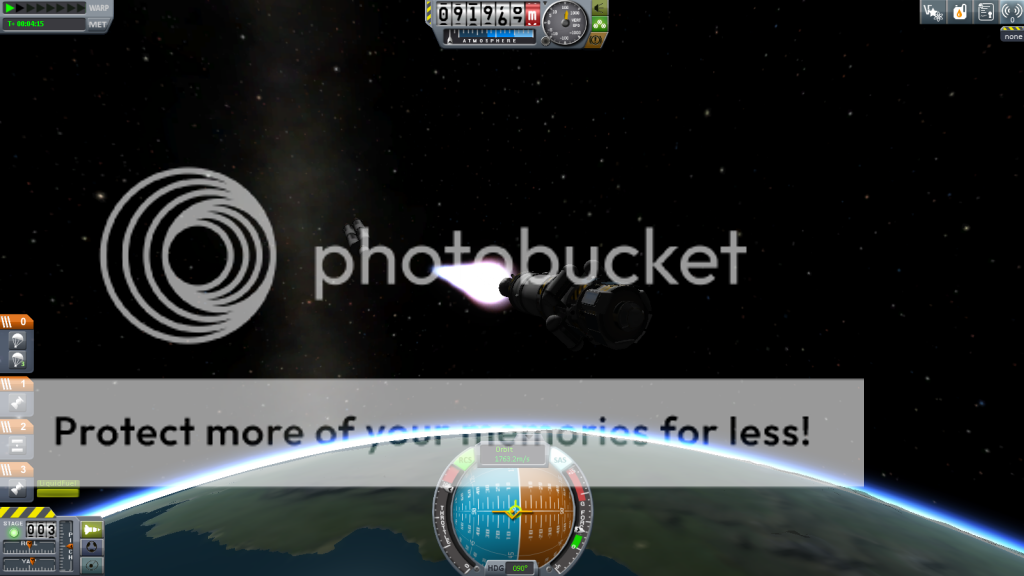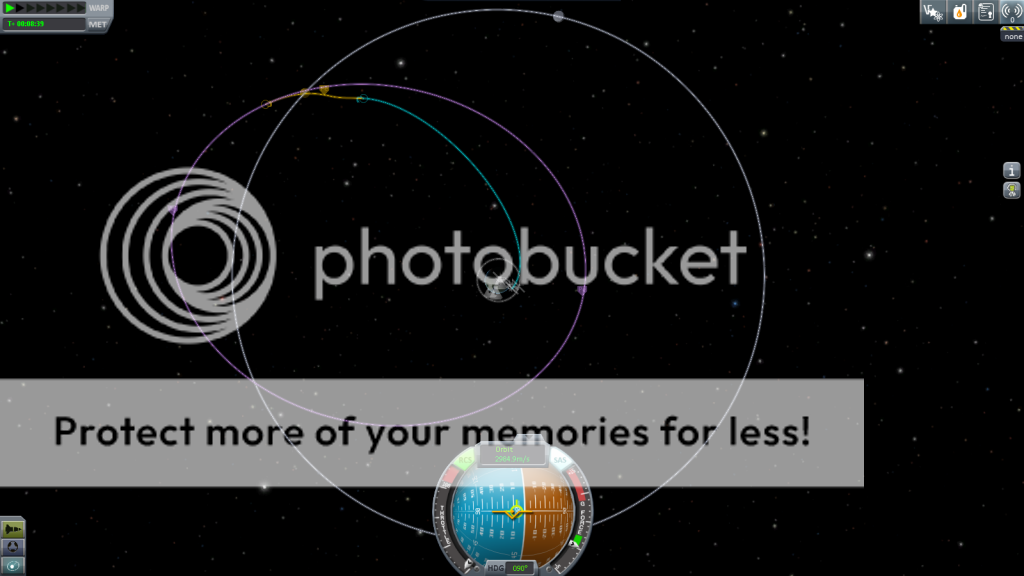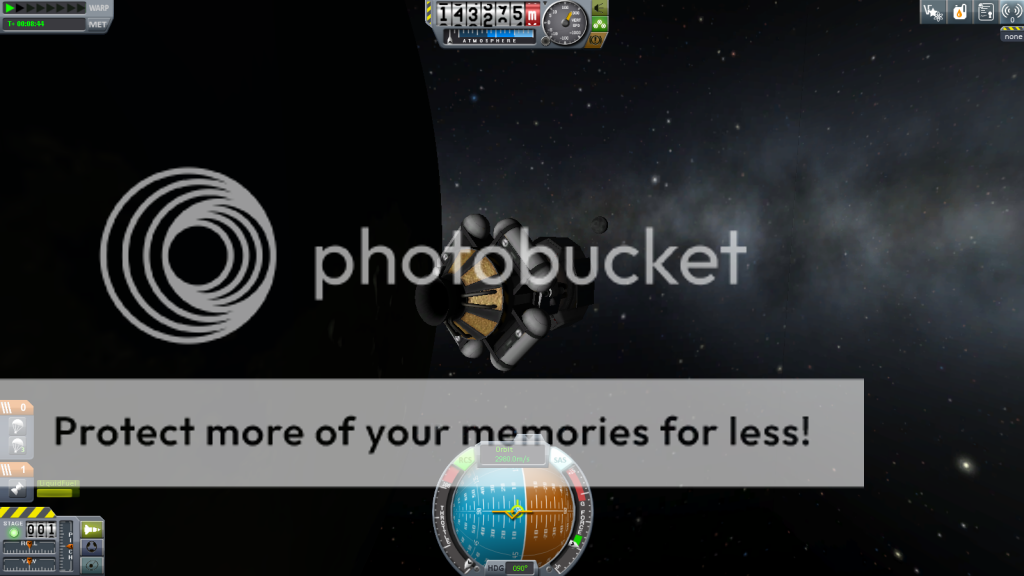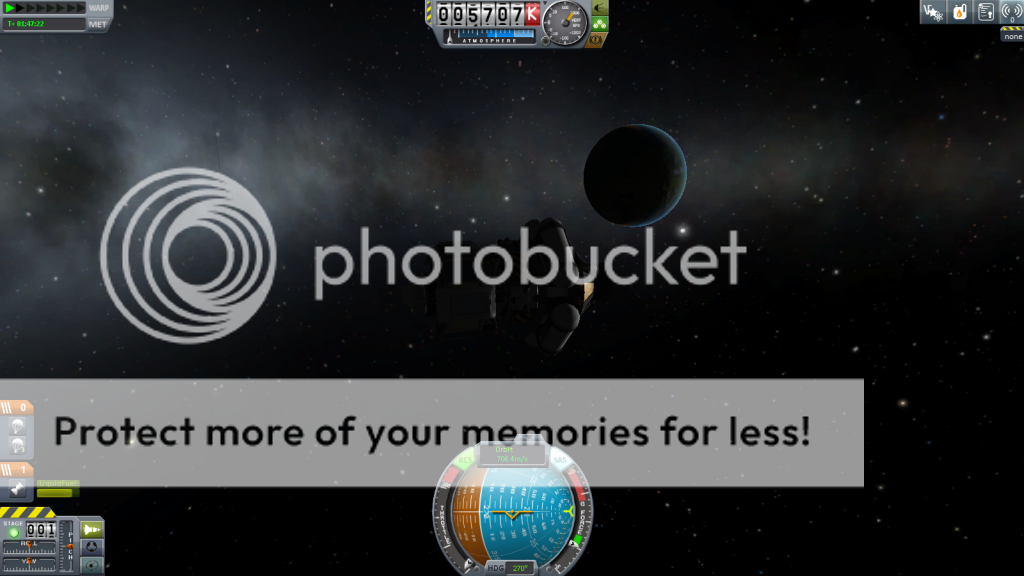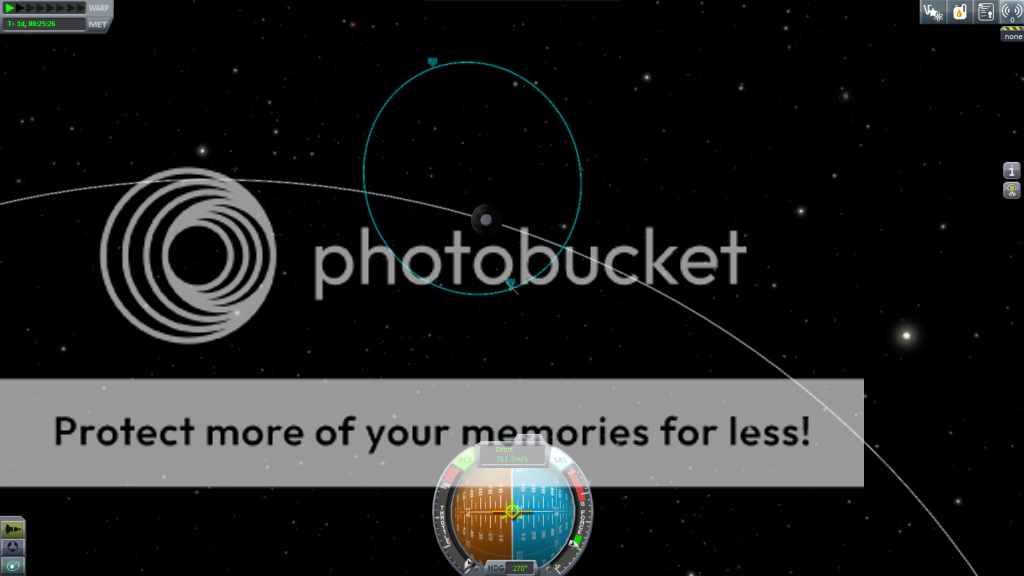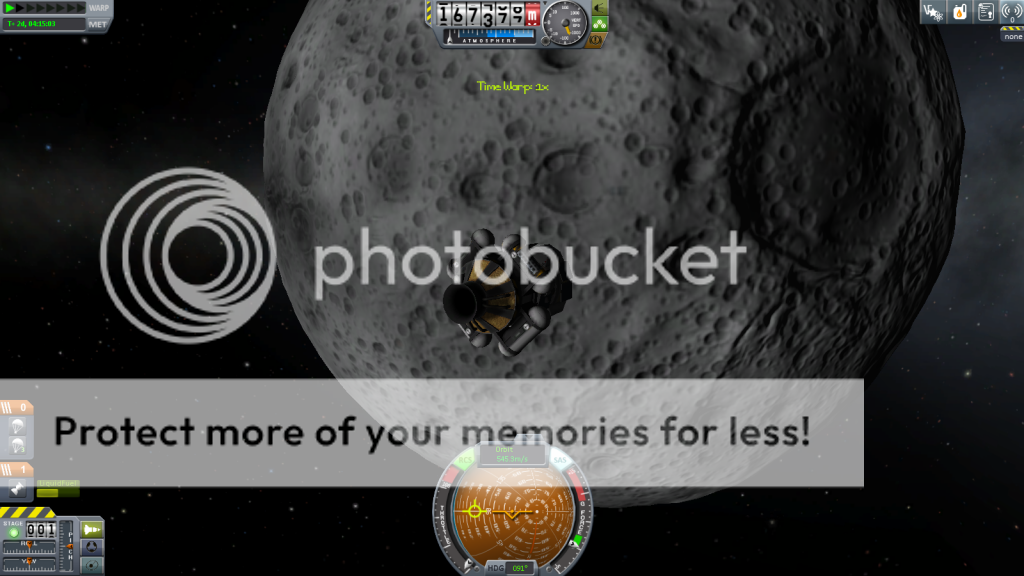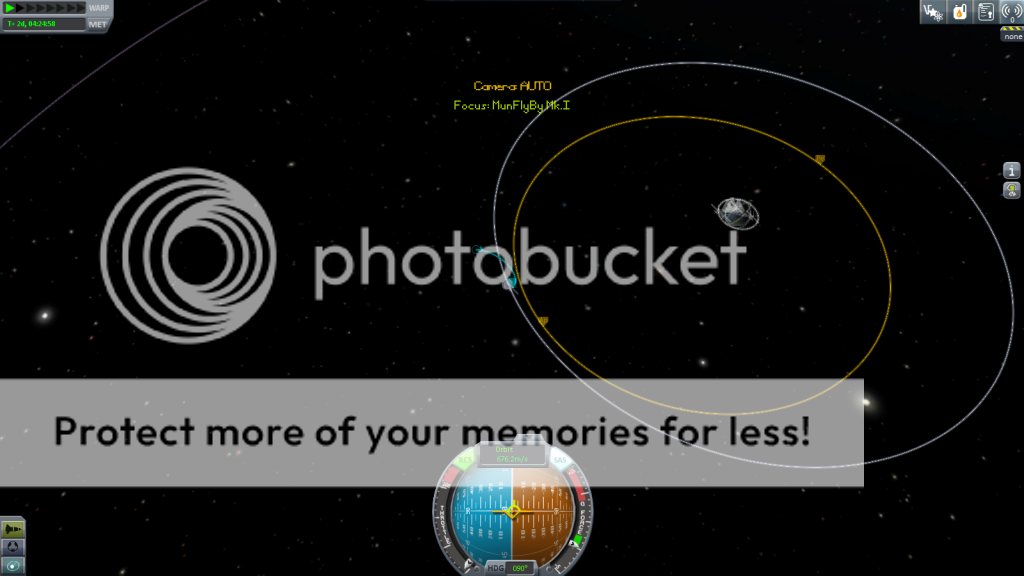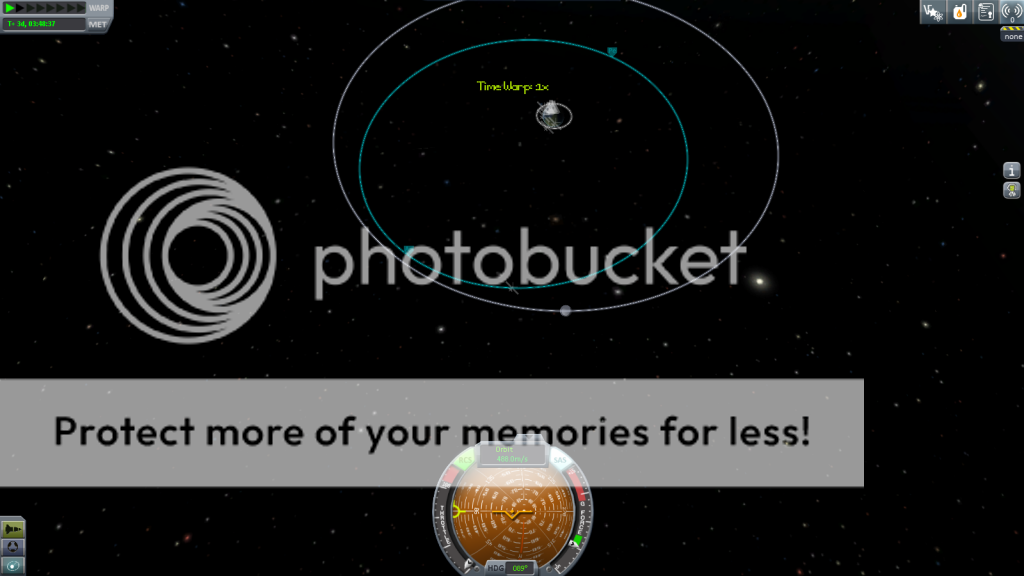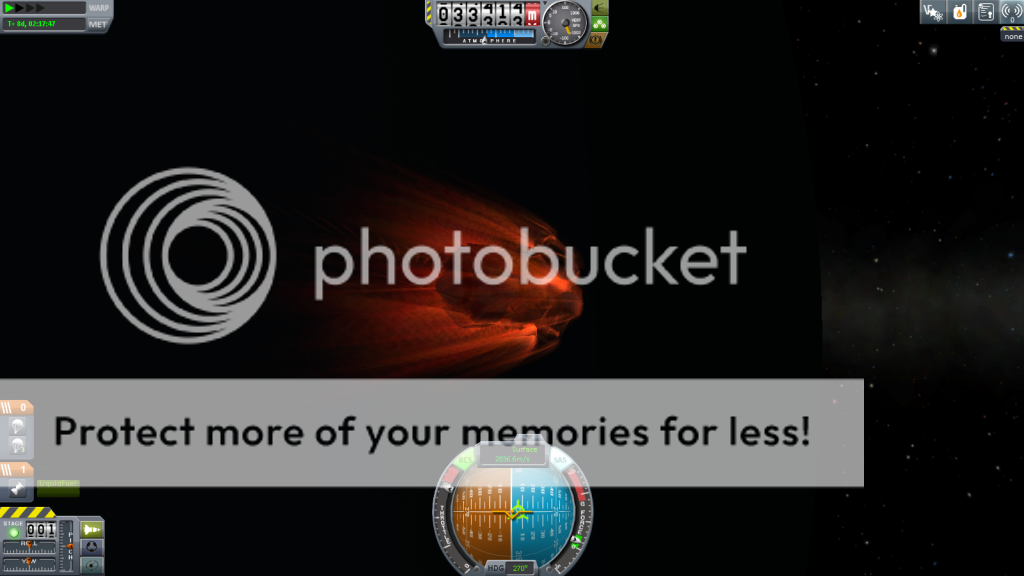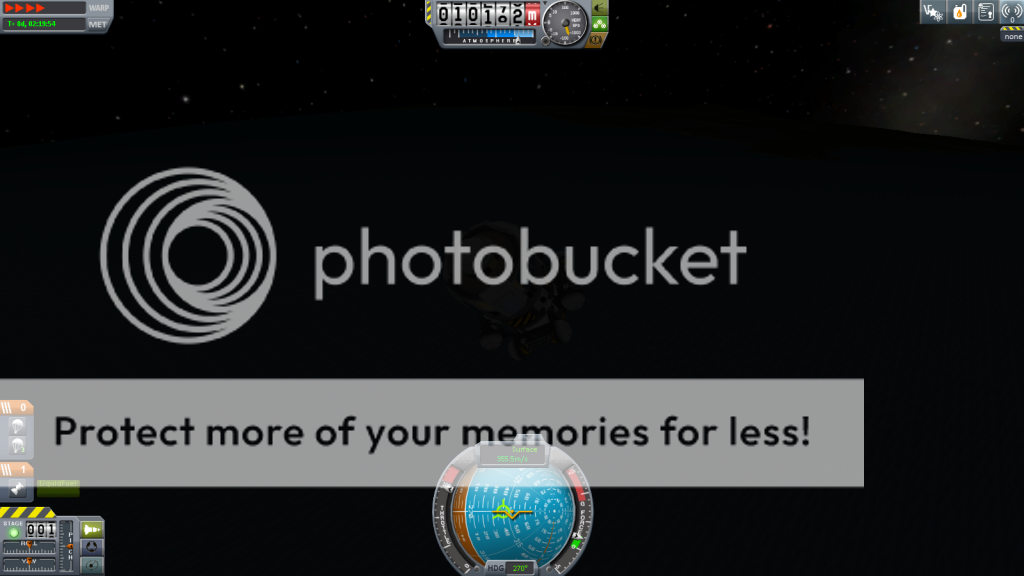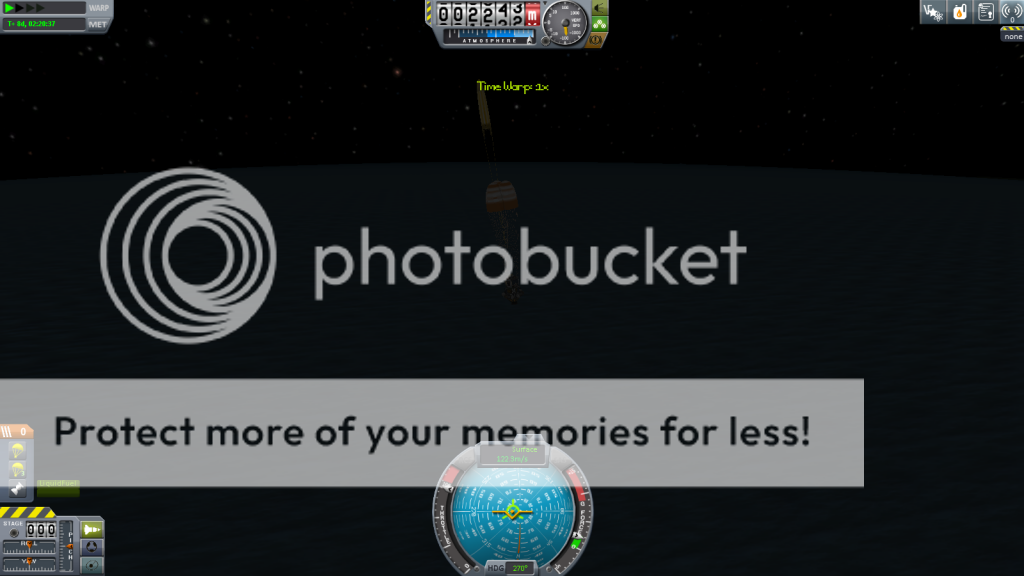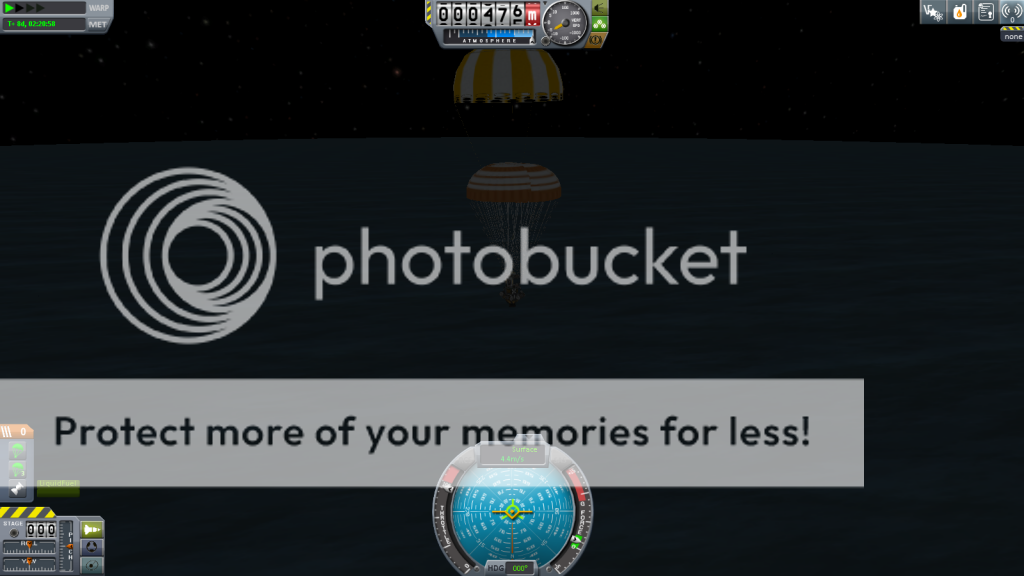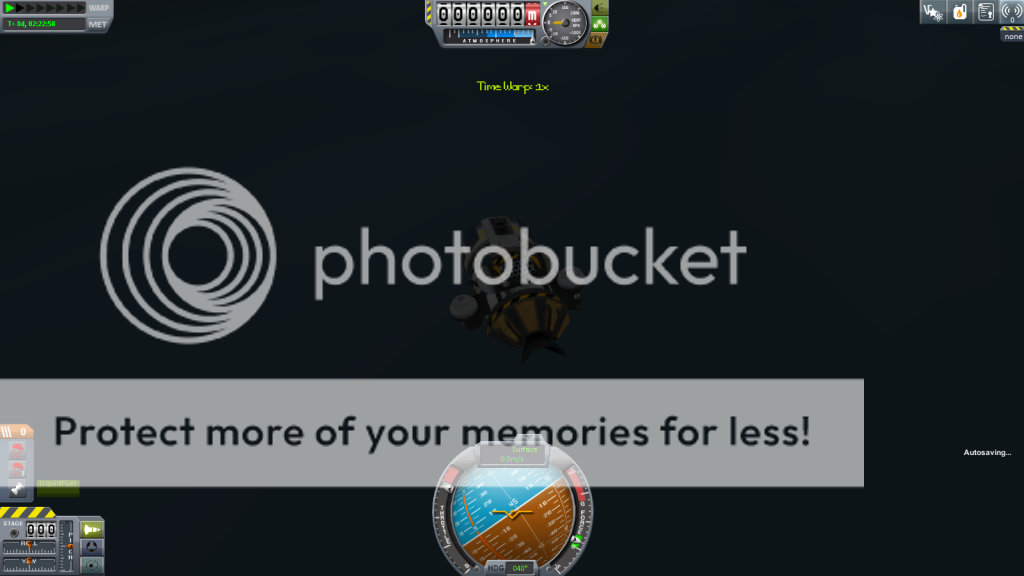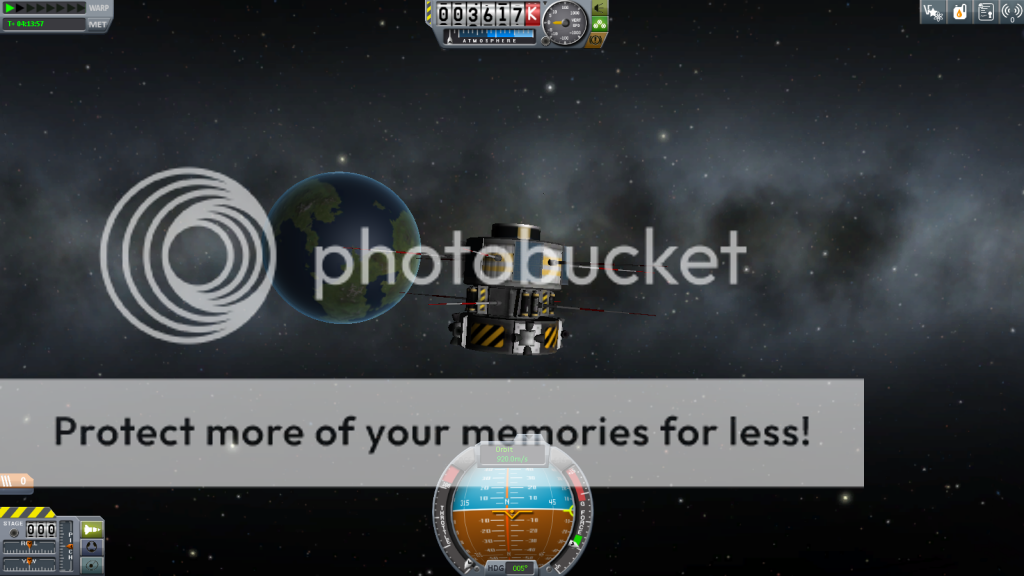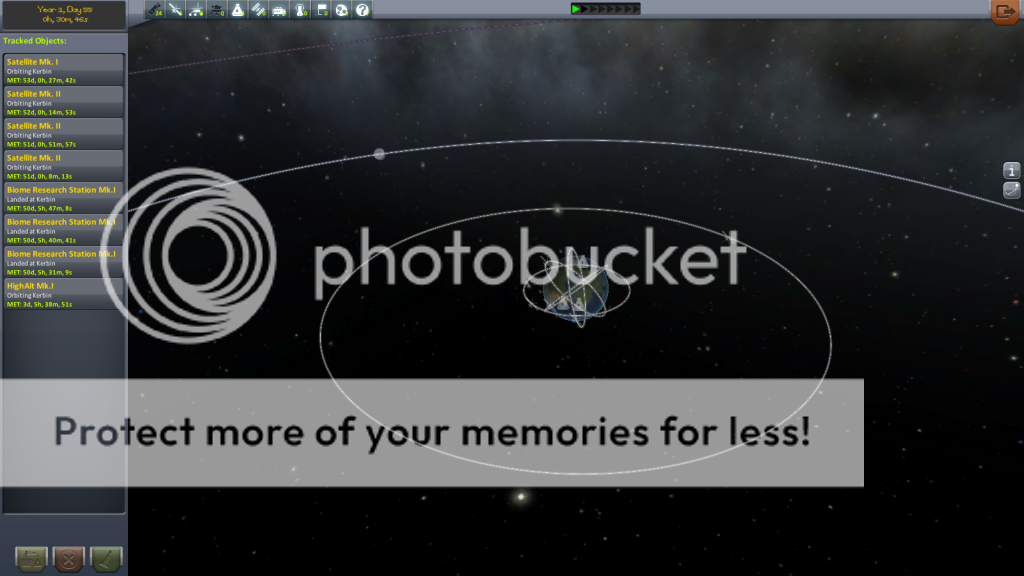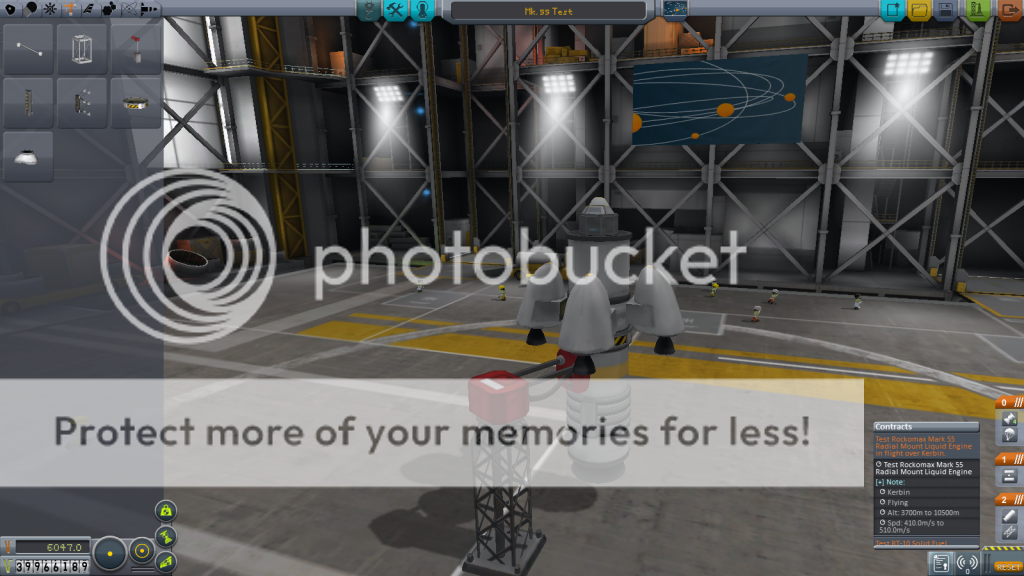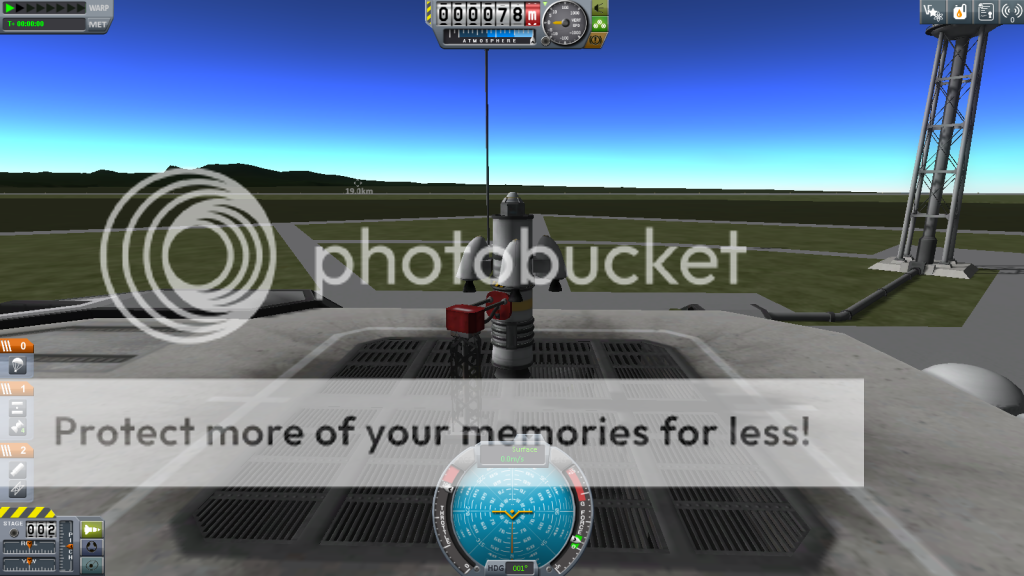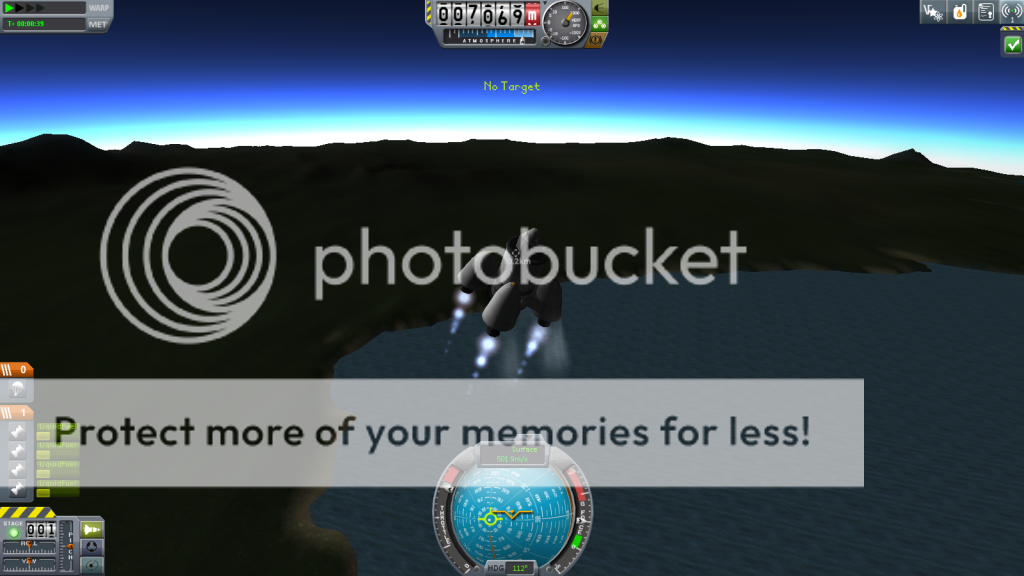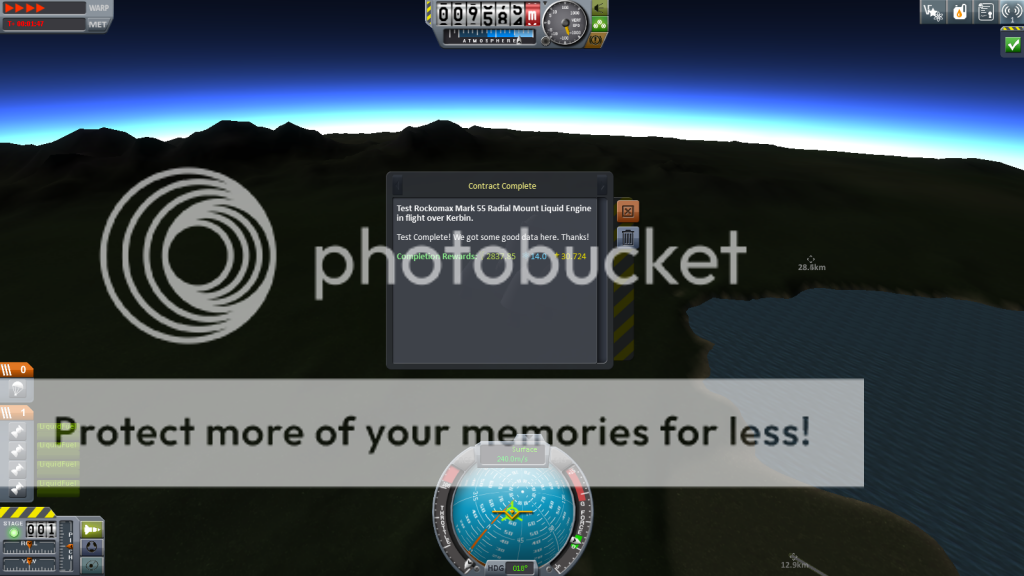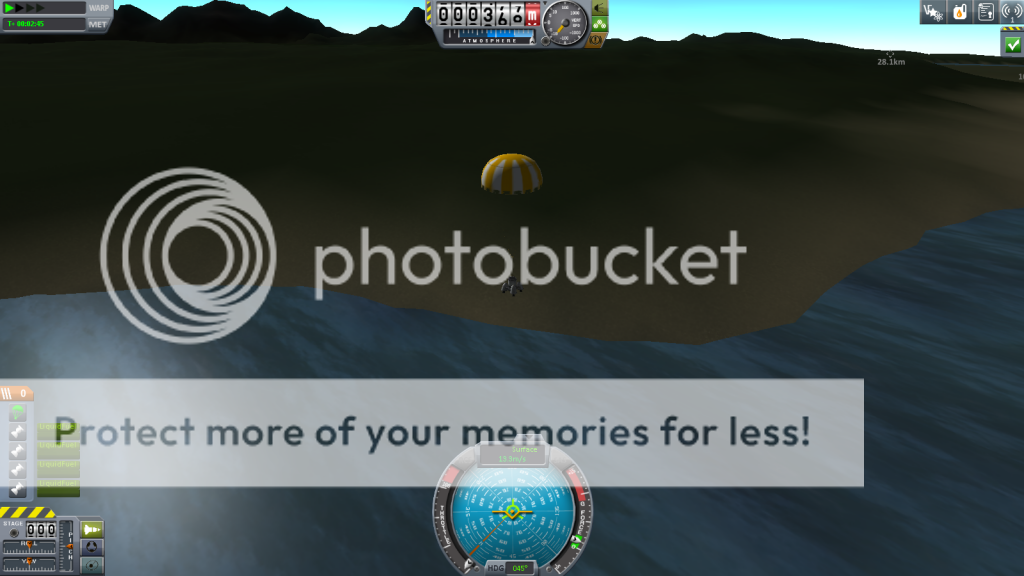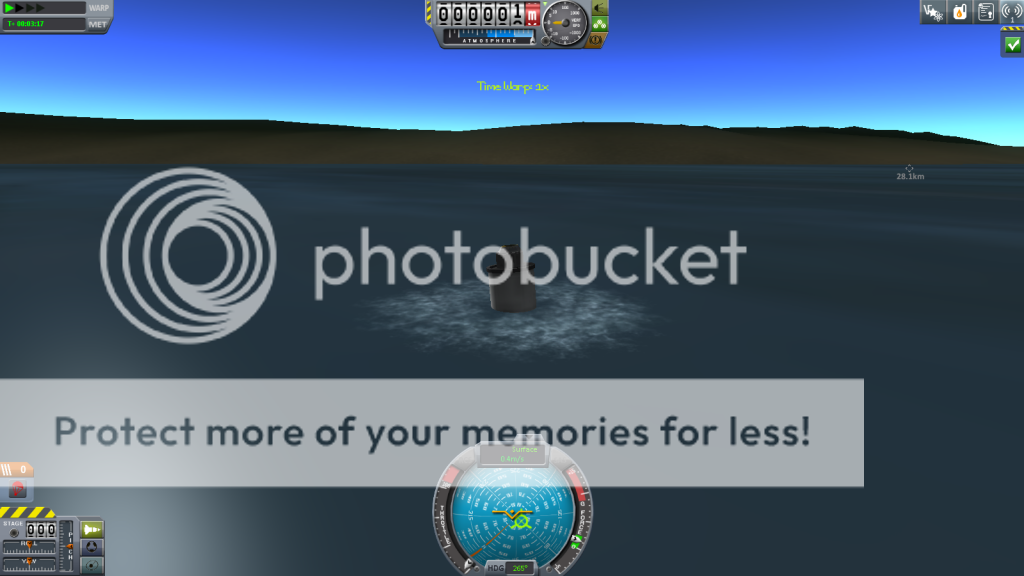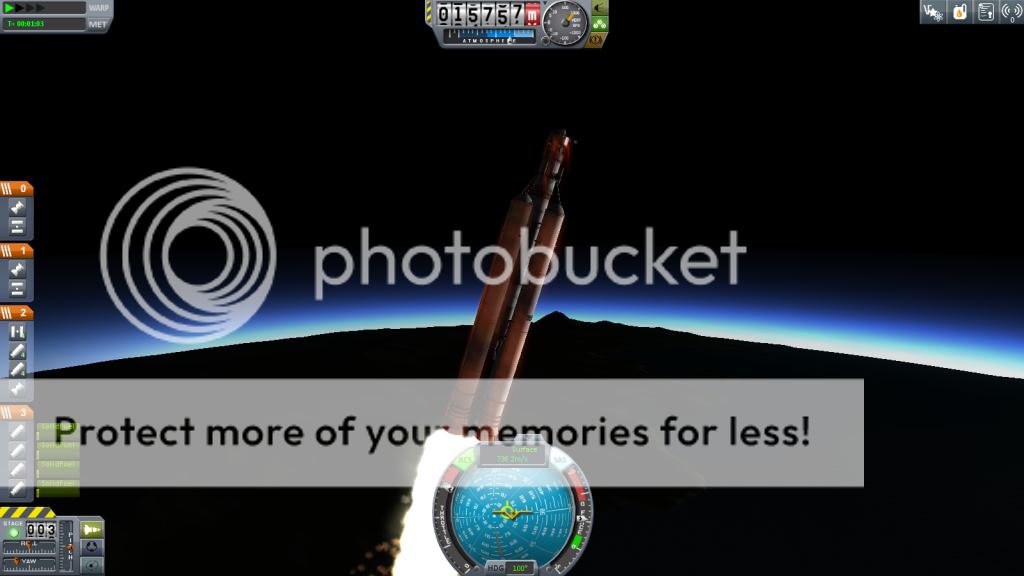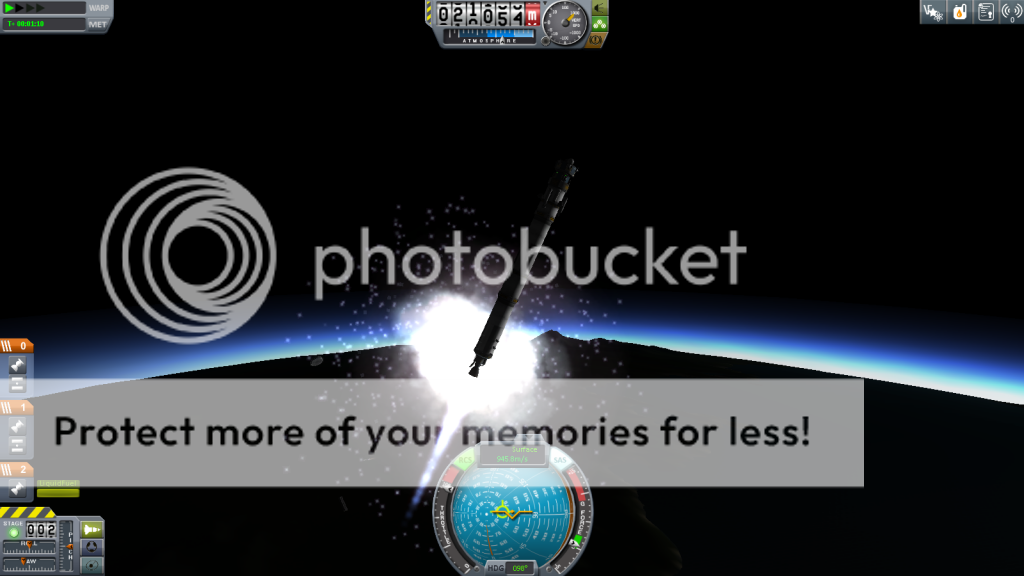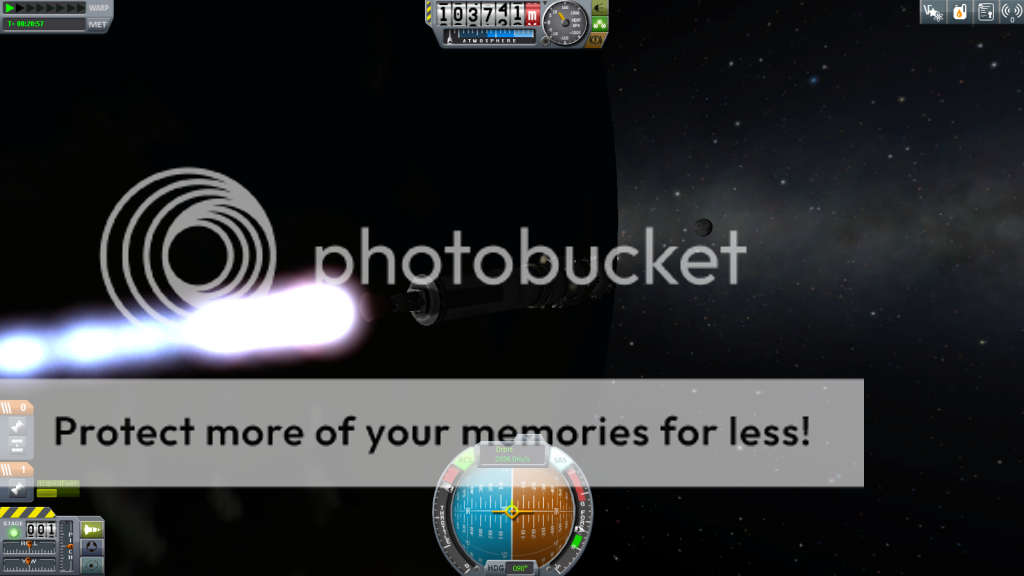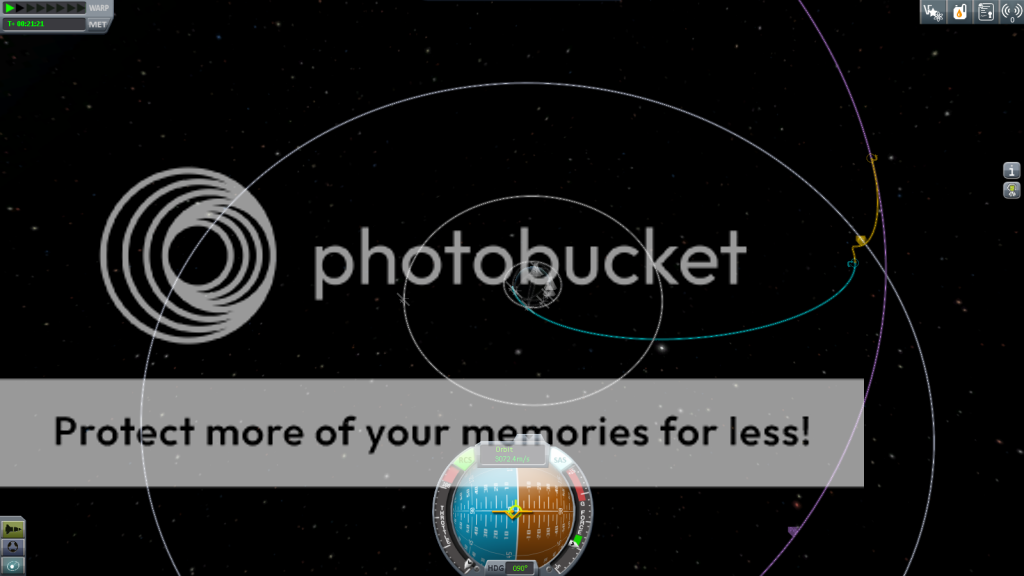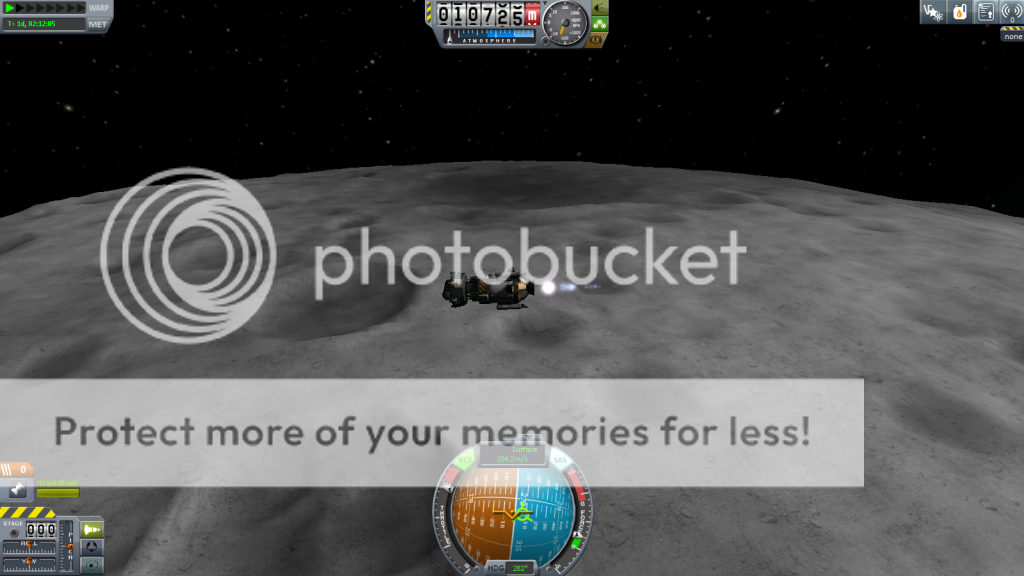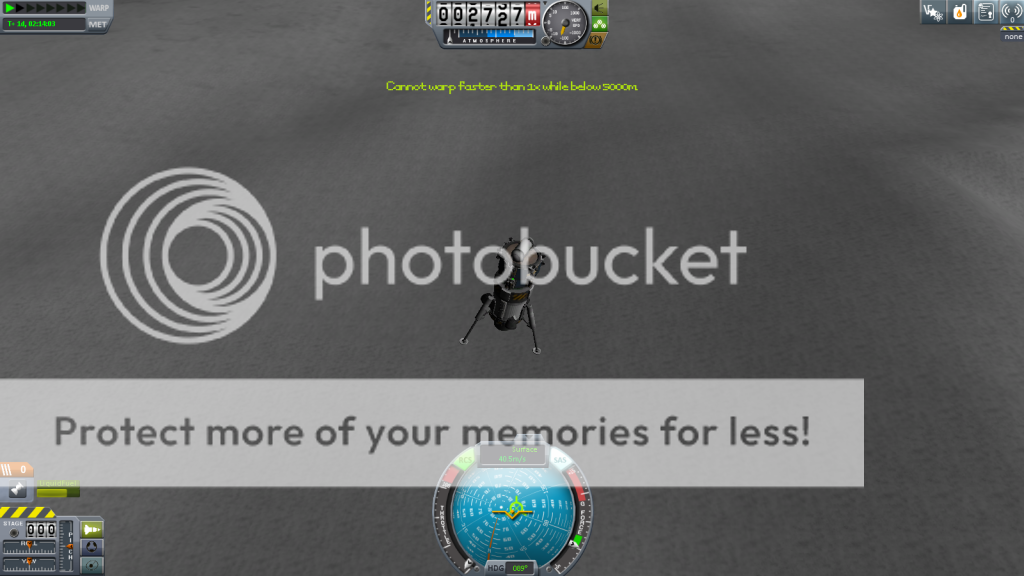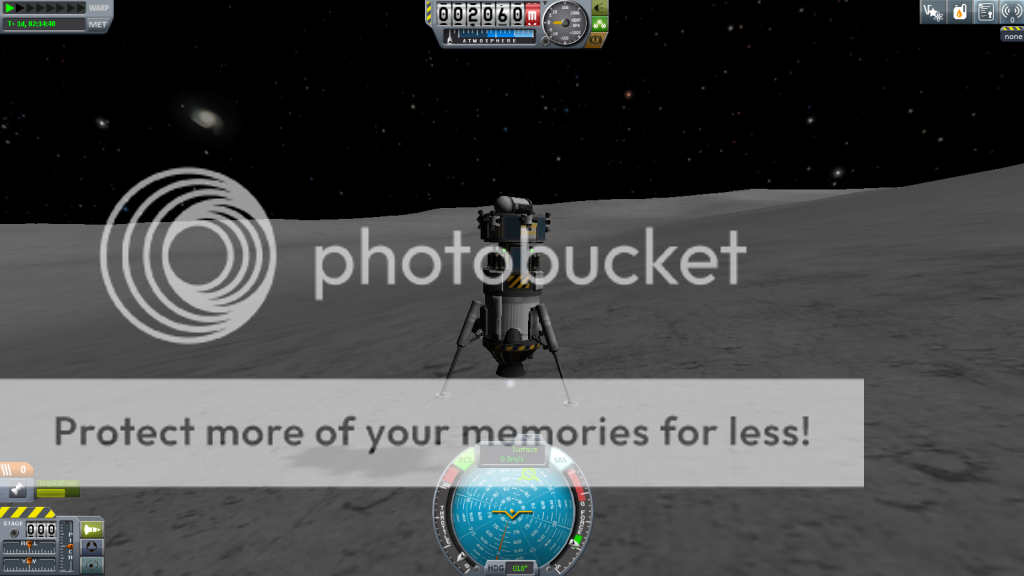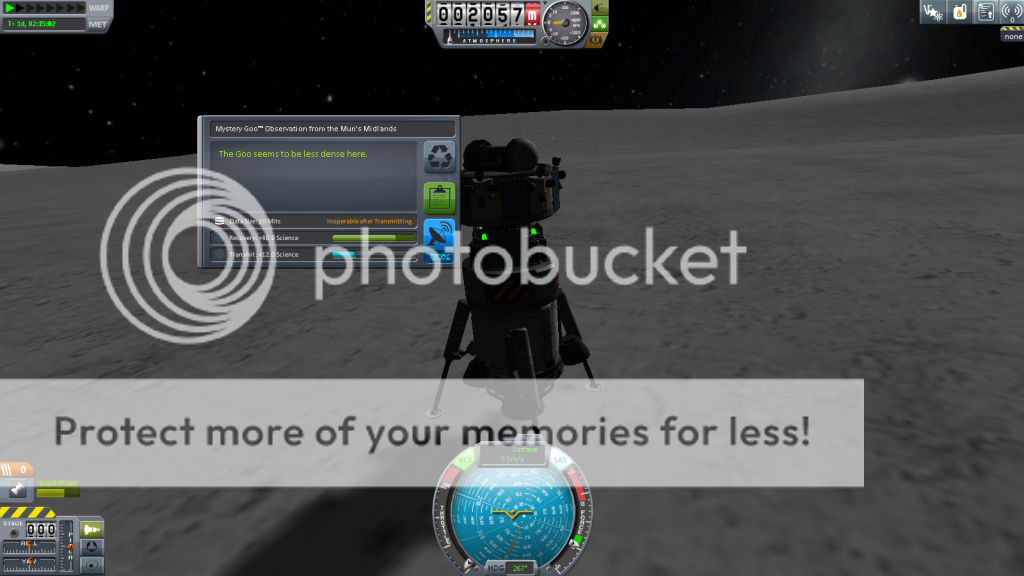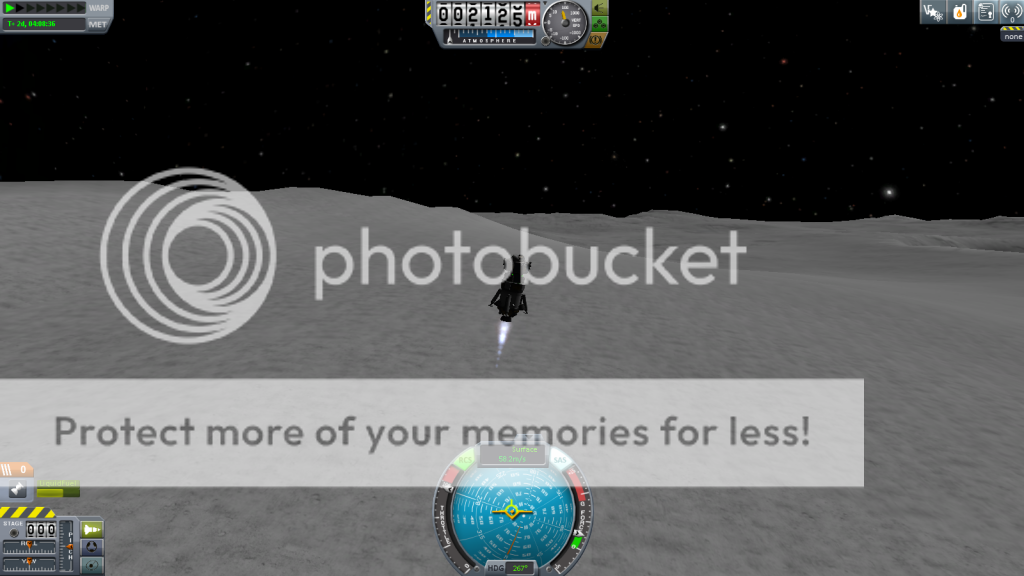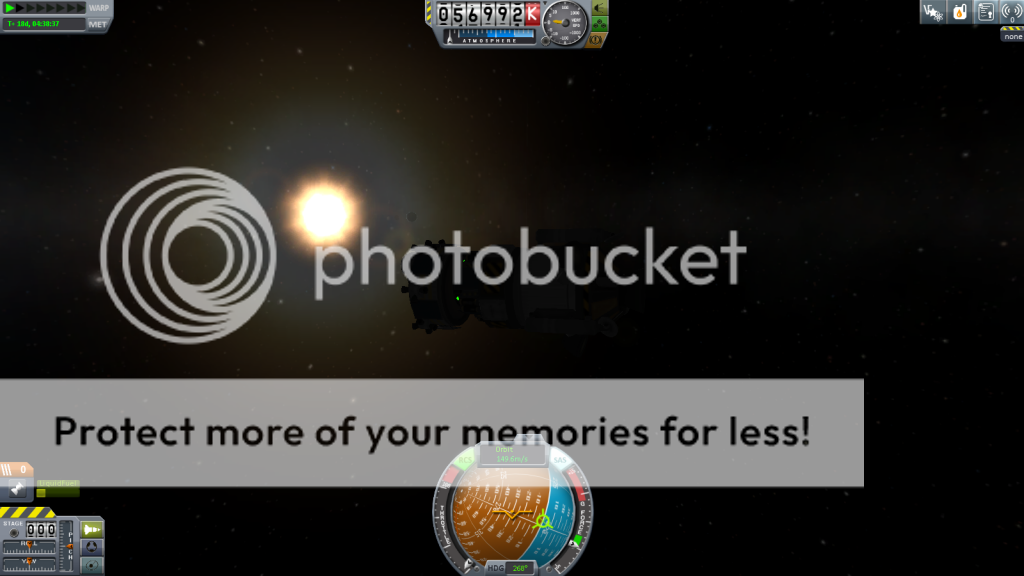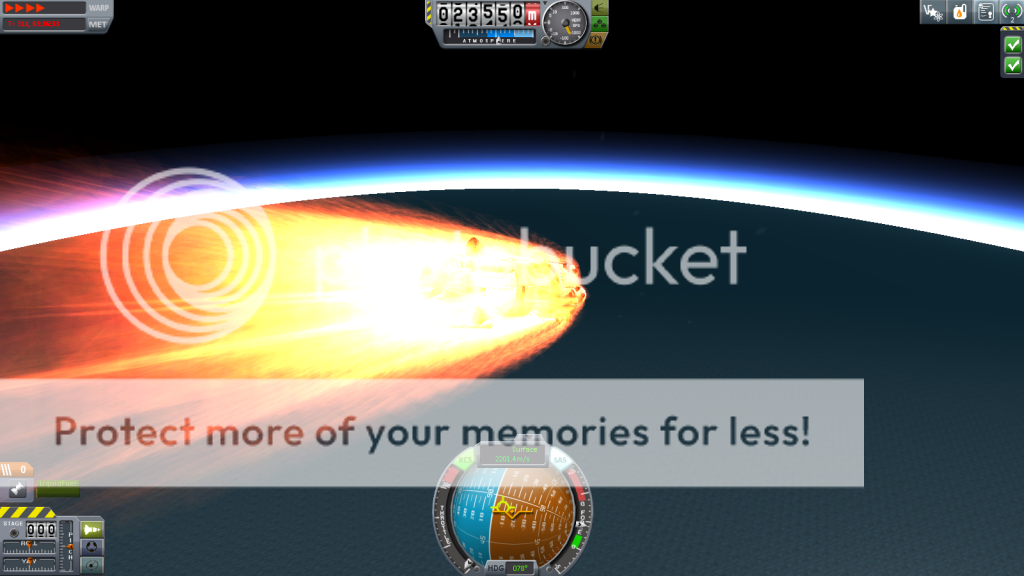Egalotir
TNPer
OOC: So I'm on winter break so i figured I'd do a fun RP about the Egalotir Space Program. While we have an extensive program i shall start it over to give everyone a view of how things work. I am using Kerbal Space Program as my way of RPing with pictures! For eveyone's sake, the Planet Kerbin is Earth, the little green men are human Egalotirian Astronauts.
Chapter 1: Humble Beginnings
Egalotir has always been one to explore. To drive and push the limits of science. It is on August 23rd, 2006, that the Egalotir Space Command was established with the task of deep space exploration. Along the long term goals, are contracts from various companies that aid budgetary and scientific research wise. To begin, the program began with a simple goal: Build a rocket that can fly, a crew capsule for 1 man, and a communication array to send back data to the Center.
After 4 years under development the Egalotir Space Command(ESC) was constructed:
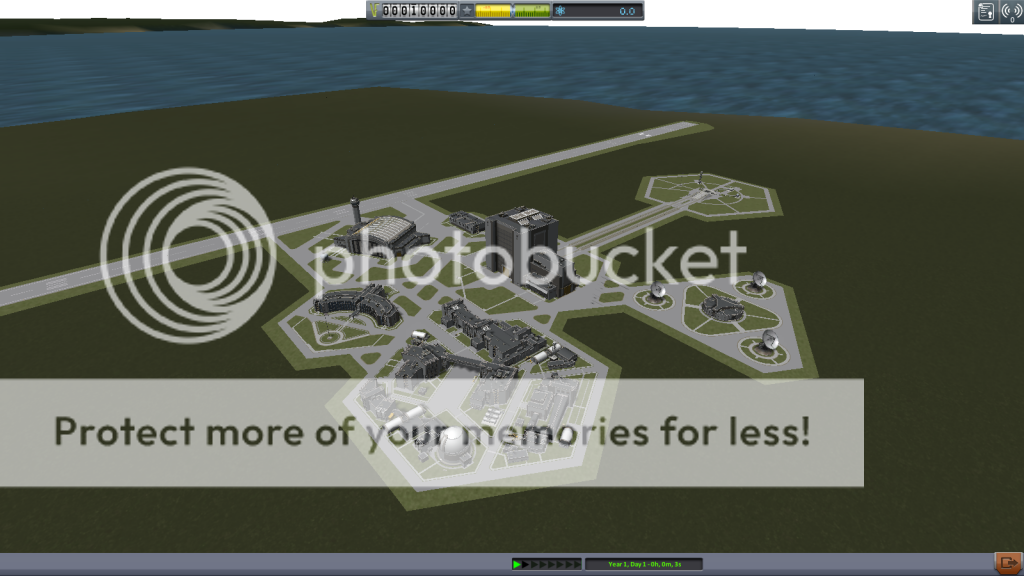
It holds a command center, communication array, crew quarters, research laboratories, company contract office, vehicle assembly hanger, spaceplane assembly hangar, and the launch pad. It holds 20,000 active personnel.
Astronaut training began at once, and the top three candidates are as shown:

Jebediah Kerman: Raised in the capital city of Criovera. Valedictorian at the University of Criovera with a Double Major in Aerospace Engineering and Computer Science with a minor in Mechanical Engineering. Extensive physical and psychological capacity. Top candidate for all missions and head astronaut.
Bill Kerman: Jedediah's younger brother. Equally as capable physically, yet just barely passed the intelligence and psychological screening. He has an adventurous need which can be dangerous, yet equally rewarding. Graduated the University of Dundar with 4.0 GPA with a degree in Aerospace Engineer with a specific concentration in orbital mechanics.
Bob Kerman: No relation to previous astronaut. Undoubtedly the most intelligent of the group, yet the least physically capable. Knowledgeable in Propulsion, Orbital maneuvers, orbital bodies, polymer science, Space Walk(EVA) Specialist. Head Scientist on all missions.
All candidates were required to:
1) have at least a Bachelor's degree from an accredited institution in engineering, biological science, physical science, or mathematics. Degree must be followed by at least three years of related, progressively responsible, professional experience. An advanced degree is desirable and may be substituted for part or all of the experience requirement (master's degree = 1 year of experience, doctoral degree = 3 years of experience). Quality of academic preparation is important.
2) Ability to pass a ESC's space physical, which is similar to a military or civilian flight physical and includes the following specific standards:
Distance visual acuity: 20/200 or better uncorrected, correctable to 20/20, each eye.
Blood pressure: 140/90 measured in a sitting position.
Height between 58.5 and 76 inches.
3) At least 1,000 hours pilot-in-command time in jet aircraft. Flight test experience is highly desirable.
------------------------------------------------------------------------------------------------------------------------------------------------------------------------------------------------------------------------------------------------------------------------
The current technology tree:

ESC has spent the last four years researching and testing all areas of aerospace. We have successfully constructed our own crew capsule called the CPC (Crew/Personnel Carrier). It currently only houses 1 crew member and can manually control the spacecraft. Weighs .8 tons and can withstand temperatures of up to 3,400 Kelvin on re-entry. Has an electrical capacity of 50 kV and provides 5 kN*m of torque.
Our Solid Rocket Boosters (SRBs) are composed of the motor (including case, propellant, igniter and nozzle), structure(Aluminum and polymer integration), separation systems, operational flight instrumentation, recovery avionics, pyrotechnics, deceleration system, thrust vector control system and range safety destruct system. Following extensive testings, and numerous failures, our current SRBs have an 88% success rate. It is prone to overheating. Our engineers will continue to improve the numbers. It weighs 3.7475 tons full, .5 tons empty. Has a drag coefficient of .3 and can withstand temperatures of up to 3,900 Kelvins. Provides 250 kN of thrust with a 29 second burn time and 225 Specific Impulse.
The main liquid engine of our program so far is the Daedalus Mk I. Weighs 1.25 tons, 3600 Kelvin max temperature, and provides 215 kN of thrust. This is a Liquid Rocket Engine which uses a liquid oxidizer with a solid or gaseous fuel mix to provide thrust. Our engines use Liquid Oxygen and Liquid Hydrogen. Has a fuel consumption of 13.68 Liters/second. Success Rating: 94%.
The FL-T400 is our main fuel tank. Weighs 2.25 tons, and holds 400 L of fuel, 600 L of Oxidizer.
------------------------------------------------------------------------------------------------------------------------------------------------------------------------------------------------------------------------------------------------------------------------
After 8 years in development, ECS was ready for it's first flight.

Egalotir Mk. I sporting one FL-T400, four SRBs, and one CPC. Aboard is Jebediah Kerman, our head astronaut. She stands 27 meters tall on the launch pad:
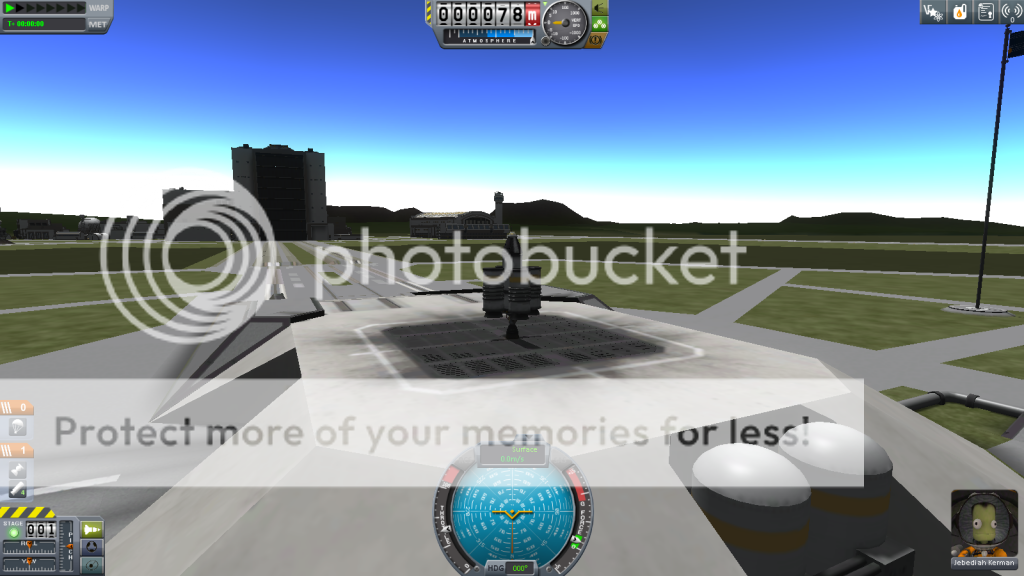
COUNTDOWN INITIATED: LAUNCH IN 10....9....8...MAIN ENGINE ON.....7....6.....5....FINAL SEQUENCE CHECK....4....3.....2...1....WE HAVE LAUNCH OF EGALOTIR I!
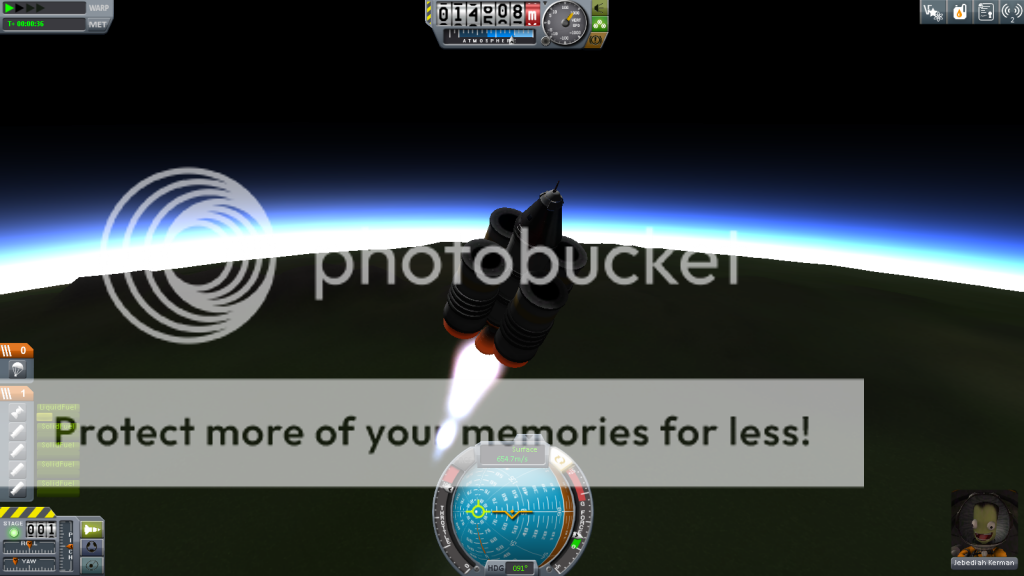
Soaring into clouds, Jebediah relays constant information back to ground command. All is going as planned so far.
Reaching motor burnout, temperatures normal, highest pressure mark passed:

Reached an apogee of 41,596 meters as well as max speed of 958 m/s. Egalotir I is now on it's way back down to earth, several miles off shore:
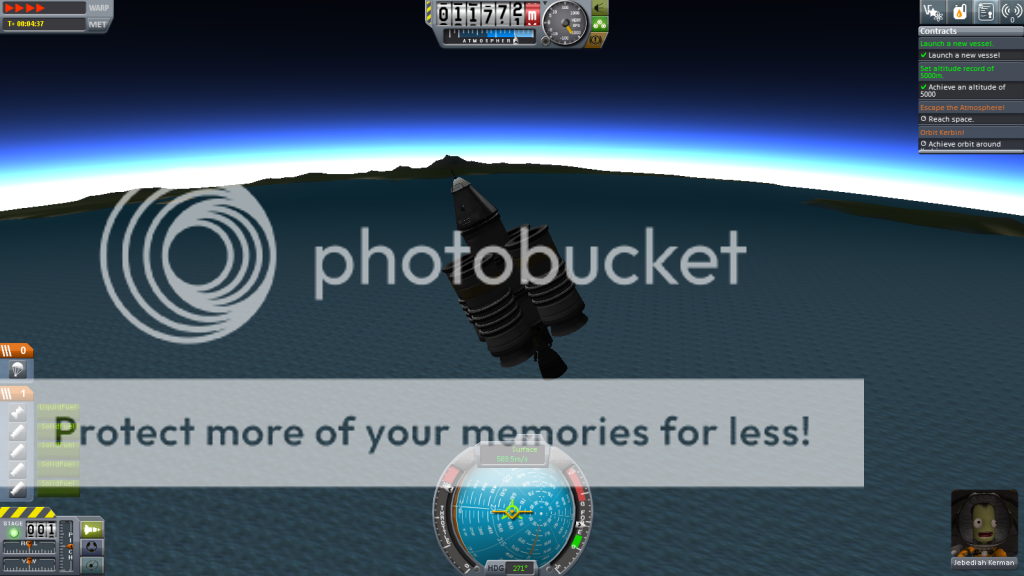
All checks nominal. Prepare for parachute deployment at 700 meters...and....OPEN!
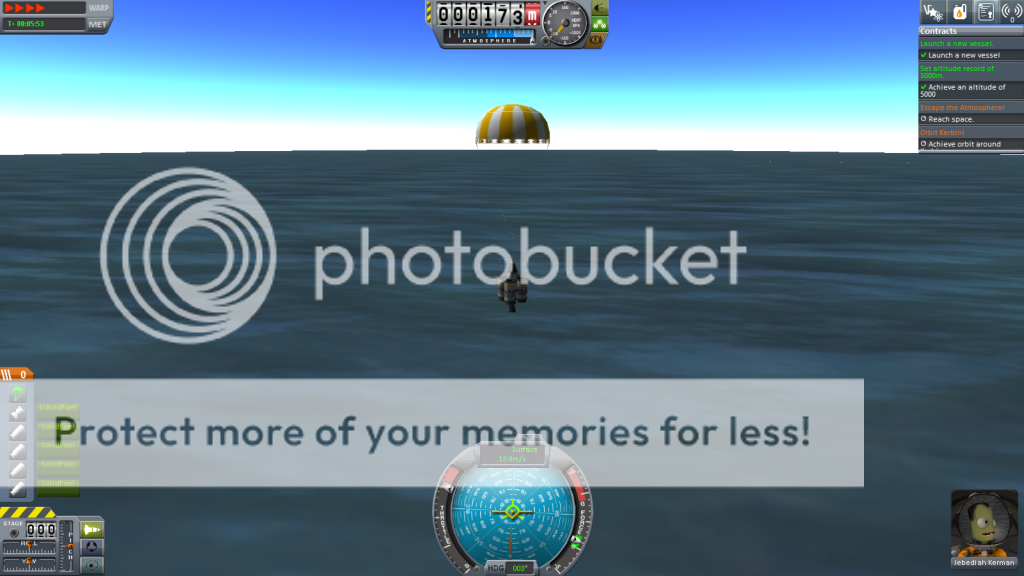
Finally, a successful splashdown!
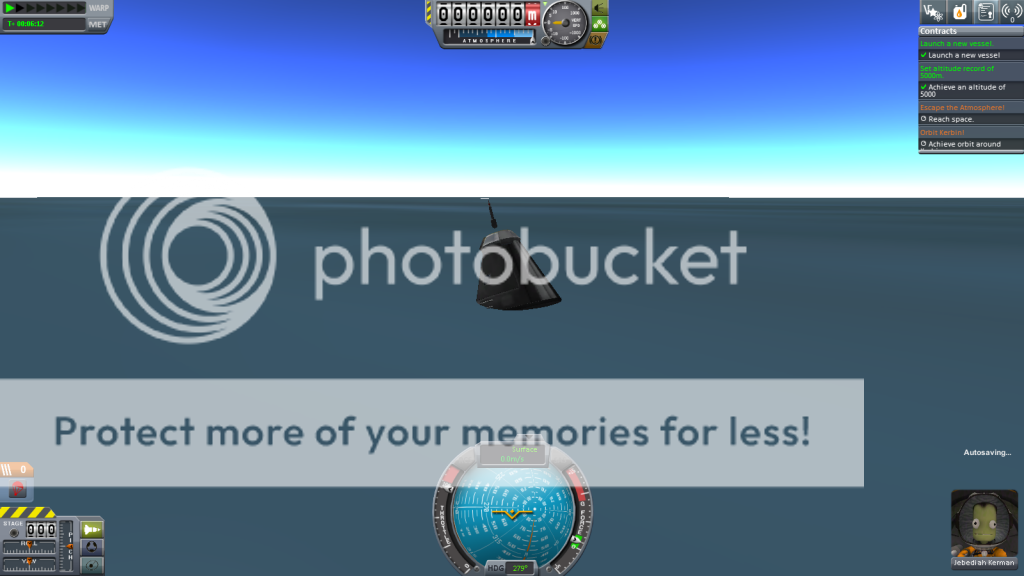
Jebediah reported no errors or issues with the crew capsule. The SRBs and engines were lost on splashdown which was planned. Egalotir Space Command has officially announced this trail a success. Egalotir Mk II is currently being researched and tested for higher atmospheric testing, as well as more efficiency. Our scientists are still shifting through the hundreds of reports of scientific data gathered from the flight.
Next time: Egalotir Mk II.
OOC: What do you guys think? Anything to add or you want to see more of? I will be putting all the updates here and i'll link the next parts in the OP. thanks for reading!
Link to part 2: Egalotir Mk. II:http://forum.thenorthpacific.org/single/?p=8185415&t=7303845
Chapter 1: Humble Beginnings
Egalotir has always been one to explore. To drive and push the limits of science. It is on August 23rd, 2006, that the Egalotir Space Command was established with the task of deep space exploration. Along the long term goals, are contracts from various companies that aid budgetary and scientific research wise. To begin, the program began with a simple goal: Build a rocket that can fly, a crew capsule for 1 man, and a communication array to send back data to the Center.
After 4 years under development the Egalotir Space Command(ESC) was constructed:

It holds a command center, communication array, crew quarters, research laboratories, company contract office, vehicle assembly hanger, spaceplane assembly hangar, and the launch pad. It holds 20,000 active personnel.
Astronaut training began at once, and the top three candidates are as shown:

Jebediah Kerman: Raised in the capital city of Criovera. Valedictorian at the University of Criovera with a Double Major in Aerospace Engineering and Computer Science with a minor in Mechanical Engineering. Extensive physical and psychological capacity. Top candidate for all missions and head astronaut.
Bill Kerman: Jedediah's younger brother. Equally as capable physically, yet just barely passed the intelligence and psychological screening. He has an adventurous need which can be dangerous, yet equally rewarding. Graduated the University of Dundar with 4.0 GPA with a degree in Aerospace Engineer with a specific concentration in orbital mechanics.
Bob Kerman: No relation to previous astronaut. Undoubtedly the most intelligent of the group, yet the least physically capable. Knowledgeable in Propulsion, Orbital maneuvers, orbital bodies, polymer science, Space Walk(EVA) Specialist. Head Scientist on all missions.
All candidates were required to:
1) have at least a Bachelor's degree from an accredited institution in engineering, biological science, physical science, or mathematics. Degree must be followed by at least three years of related, progressively responsible, professional experience. An advanced degree is desirable and may be substituted for part or all of the experience requirement (master's degree = 1 year of experience, doctoral degree = 3 years of experience). Quality of academic preparation is important.
2) Ability to pass a ESC's space physical, which is similar to a military or civilian flight physical and includes the following specific standards:
Distance visual acuity: 20/200 or better uncorrected, correctable to 20/20, each eye.
Blood pressure: 140/90 measured in a sitting position.
Height between 58.5 and 76 inches.
3) At least 1,000 hours pilot-in-command time in jet aircraft. Flight test experience is highly desirable.
------------------------------------------------------------------------------------------------------------------------------------------------------------------------------------------------------------------------------------------------------------------------
The current technology tree:

ESC has spent the last four years researching and testing all areas of aerospace. We have successfully constructed our own crew capsule called the CPC (Crew/Personnel Carrier). It currently only houses 1 crew member and can manually control the spacecraft. Weighs .8 tons and can withstand temperatures of up to 3,400 Kelvin on re-entry. Has an electrical capacity of 50 kV and provides 5 kN*m of torque.
Our Solid Rocket Boosters (SRBs) are composed of the motor (including case, propellant, igniter and nozzle), structure(Aluminum and polymer integration), separation systems, operational flight instrumentation, recovery avionics, pyrotechnics, deceleration system, thrust vector control system and range safety destruct system. Following extensive testings, and numerous failures, our current SRBs have an 88% success rate. It is prone to overheating. Our engineers will continue to improve the numbers. It weighs 3.7475 tons full, .5 tons empty. Has a drag coefficient of .3 and can withstand temperatures of up to 3,900 Kelvins. Provides 250 kN of thrust with a 29 second burn time and 225 Specific Impulse.
The main liquid engine of our program so far is the Daedalus Mk I. Weighs 1.25 tons, 3600 Kelvin max temperature, and provides 215 kN of thrust. This is a Liquid Rocket Engine which uses a liquid oxidizer with a solid or gaseous fuel mix to provide thrust. Our engines use Liquid Oxygen and Liquid Hydrogen. Has a fuel consumption of 13.68 Liters/second. Success Rating: 94%.
The FL-T400 is our main fuel tank. Weighs 2.25 tons, and holds 400 L of fuel, 600 L of Oxidizer.
------------------------------------------------------------------------------------------------------------------------------------------------------------------------------------------------------------------------------------------------------------------------
After 8 years in development, ECS was ready for it's first flight.

Egalotir Mk. I sporting one FL-T400, four SRBs, and one CPC. Aboard is Jebediah Kerman, our head astronaut. She stands 27 meters tall on the launch pad:

COUNTDOWN INITIATED: LAUNCH IN 10....9....8...MAIN ENGINE ON.....7....6.....5....FINAL SEQUENCE CHECK....4....3.....2...1....WE HAVE LAUNCH OF EGALOTIR I!

Soaring into clouds, Jebediah relays constant information back to ground command. All is going as planned so far.
Reaching motor burnout, temperatures normal, highest pressure mark passed:

Reached an apogee of 41,596 meters as well as max speed of 958 m/s. Egalotir I is now on it's way back down to earth, several miles off shore:

All checks nominal. Prepare for parachute deployment at 700 meters...and....OPEN!

Finally, a successful splashdown!

Jebediah reported no errors or issues with the crew capsule. The SRBs and engines were lost on splashdown which was planned. Egalotir Space Command has officially announced this trail a success. Egalotir Mk II is currently being researched and tested for higher atmospheric testing, as well as more efficiency. Our scientists are still shifting through the hundreds of reports of scientific data gathered from the flight.
Next time: Egalotir Mk II.
OOC: What do you guys think? Anything to add or you want to see more of? I will be putting all the updates here and i'll link the next parts in the OP. thanks for reading!
Link to part 2: Egalotir Mk. II:http://forum.thenorthpacific.org/single/?p=8185415&t=7303845


